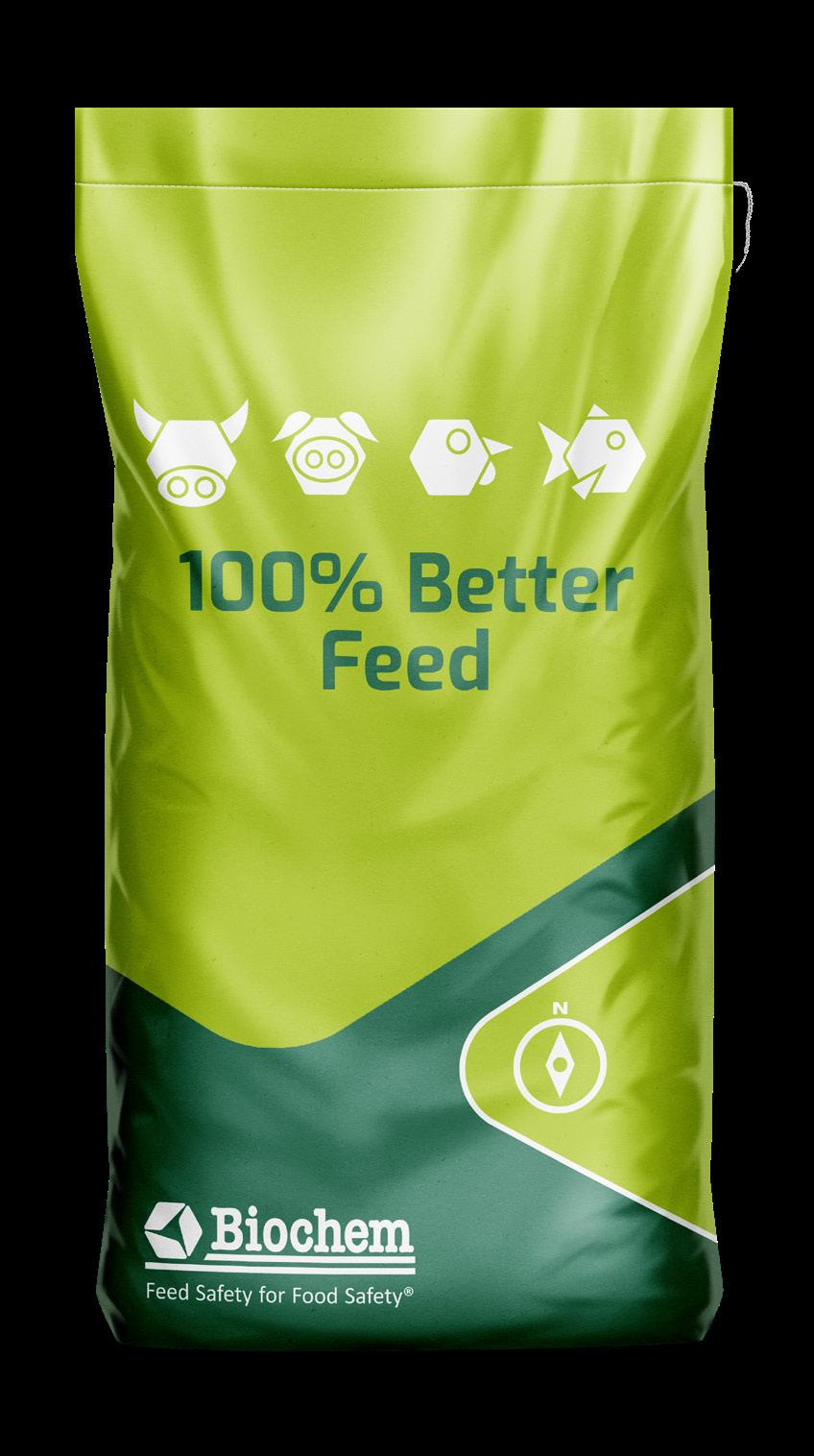




















Sustell™ makes precise, tailored environmental accountability the new normal across the animal farming value chain, opening the door to accurate reporting, multiple commercial opportunities and more sustainable food systems. From improving farm efficiency to sustainable finance, ecolabeling and credible, accurate reporting, Sustell™ is your solution. Contact us today.



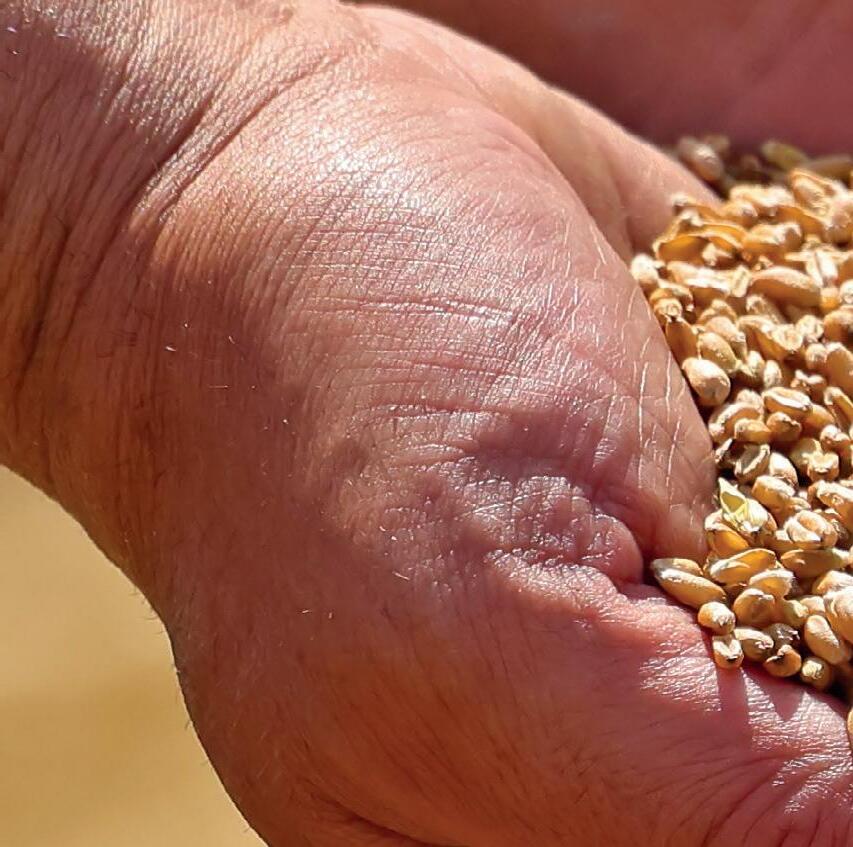






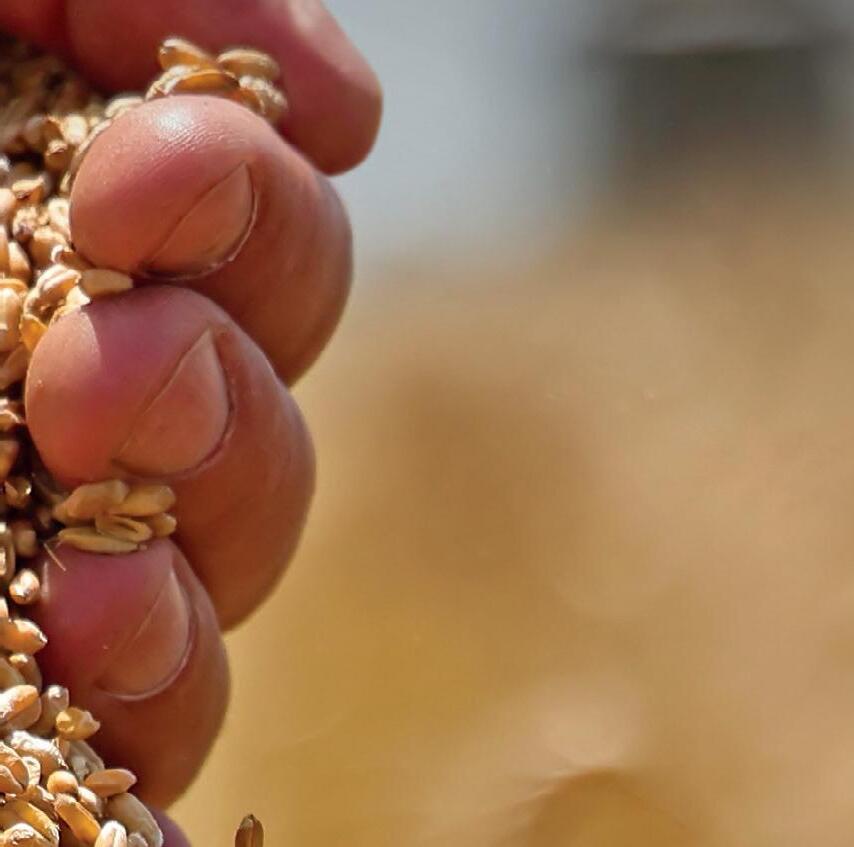
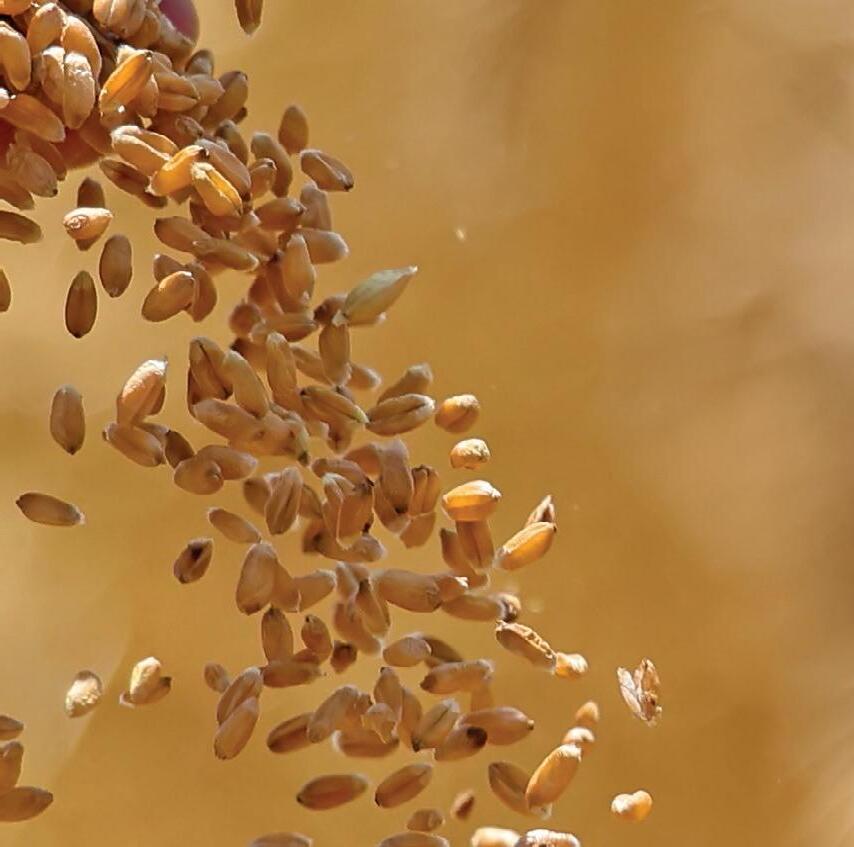




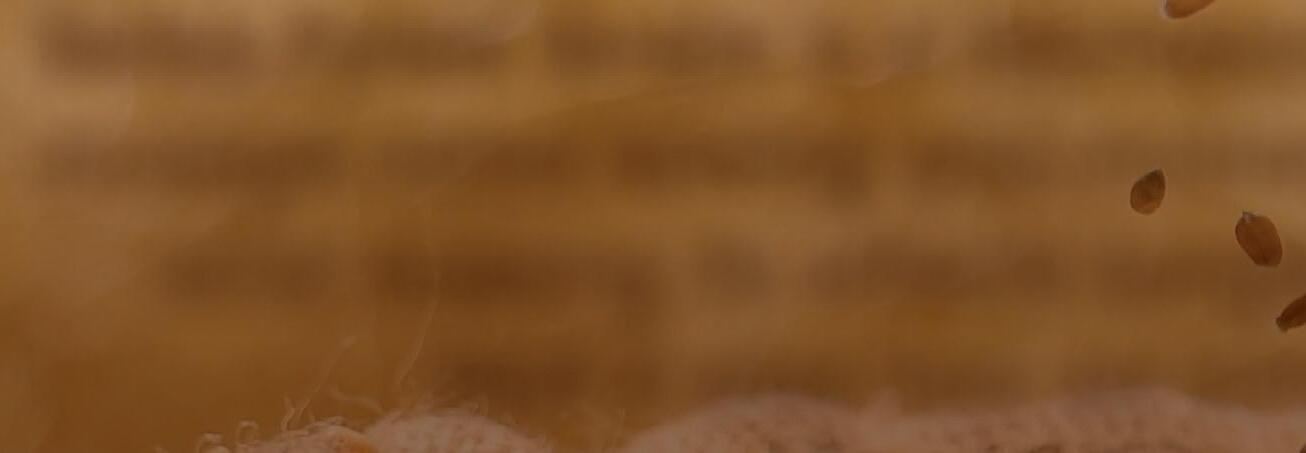
Selko Fylax Grain is a microbial inhibitor that is highly efficacious at low dosage rates saving you money. It is less volatile than straight propionic acid making its effects longer lasting, and it has the added benefit that it also has an inhibitive effect on enterobacteria.



Highly efficacious at low dosage rates of 0.5-2kg / mT

Microbial inhibitor that also has an effect on enterobacteria
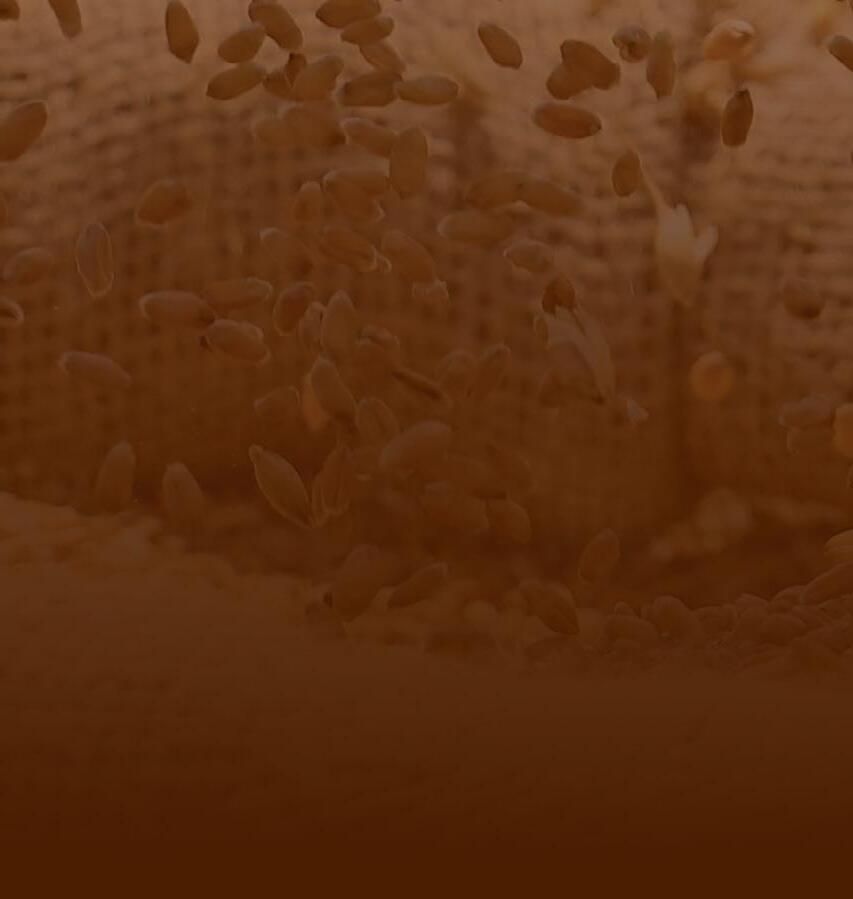
Less volatile leading to longer-lasting treatment
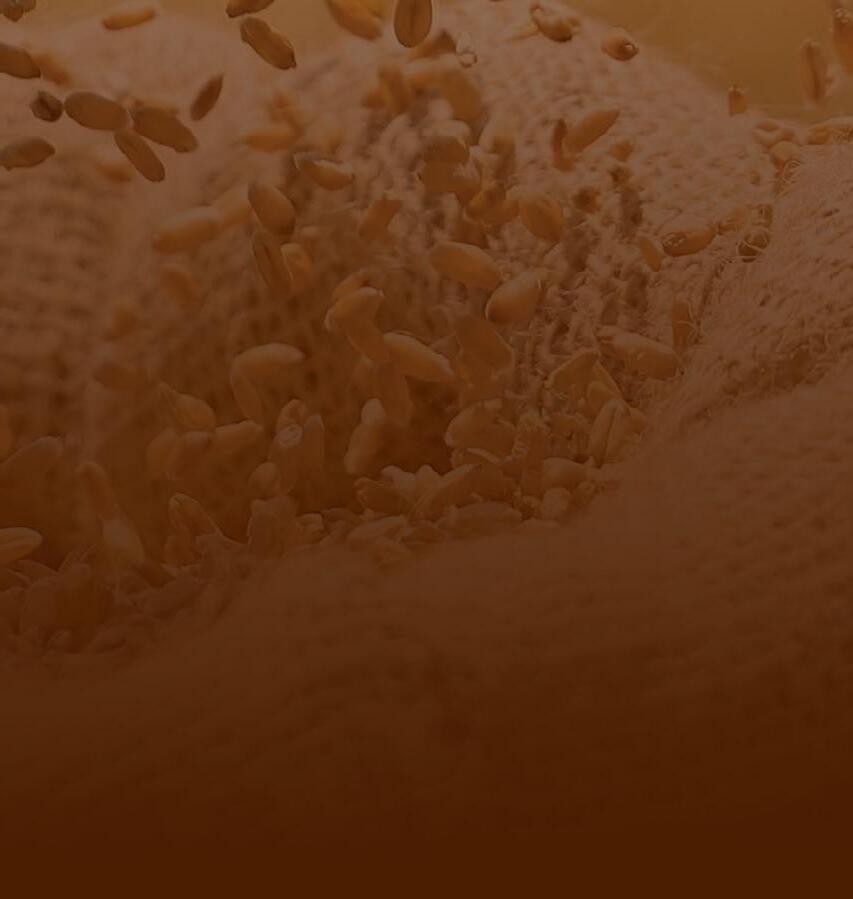


United
Tel: +44 (0) 1994 240002
Web site: www.feedcompounder.com
E-mail: mail@feedcompounder.com
Waterlogged fields and extensive crop damage have already cast a massive shadow over harvest prospects, raising serious questions about raw material supplies later this year and maybe 2025 as well.
Although gardeners and reservoir managers will no doubt be pleading for rain as the summer unfolds, the impact of the past few months on the country’s arable crops will be felt well into the future.
The fact that August 2023 to February this year was the second wettest such period for close to 200 years is sufficient to explain the extremely poor growing quality of winter wheat, barley, and oat crops across the UK. According to the Agricultural and Horticultural Development Board (AHDB), only one third of these crops were worthy of being described as either excellent or good when assessed in early April. That compares with a 90% excellent/good rating for the same winter-sown crops when checked in March 2023.
Crops were deemed to be equally ‘mediocre’ in large parts of the EU-27, when assessed last month by the EU crop monitoring service (MARS). This prompted the European Commission to reduce its forecast for 2024 wheat production to a four-year low of 120.8 million tonnes, some 4.8 mt below its earlier expectations.
Ironically, while cereals have struggled to survive the extreme wet and cold conditions of recent months, the invasive arable weed, black-grass, has continued to thrive. There’s a good reason for this of course.
Apparently, black-grass has a ‘ready to go’ mechanism in place to cope whenever fields are flooded, based on having a fully prepared ‘drinking-straw’ root structure. This is in contrast to wheat and other cereal crops which incorporate similar survival systems but have to slowly build their relevant coping root structures once soils become saturated.
The obvious question is how plant breeders might go about transferring the waterlogging resilience of black-grass to the survival and productive benefit of the nation’s cereal crops. That’s the challenge which is being addressed at Rothamsted Research, Hertfordshire, with the goal of making the cereals of the future better able to cope with the multiple weather demands that climate change may bring.
To this end, a comparative study of wheat and black-grass was carried out recently at Rothamsted during which seedlings from both items were grown in flooded pots for up to 21 days.
It was already known that wheat plants have the ability to alter their root structure in response to waterlogging by constructing a drinking straw-like structure called aerenchyma to increase gas exchange from the unflooded tissues down into the flooded roots. While this survival response is effective, the construction process takes time and energy.
What surprised Rothamsted’s researchers, however, was that their black-grass seedlings just kept growing, despite being placed in a flooded environment. This was due to the weed always having its waterlogging survival root structure on standby, just in case.
Researchers are hopeful they can help future-proof tomorrow’s cereals by borrowing the more useful traits from the natural qualities of black-grass. While this is encouraging, it’s clearly a solution which will take time to prove and refine.
Back in the present, with questions remaining over how much damage has already been done to today’s crops, the International Grains Council (IGC) has cut its global grain and stock projections for both 2023/24 and 2024/25, as revealed in its late April report.
Headline figures include 2023/24 global grain production being lowered by 3.5 million tonnes, leading to a sharper fall in 2023/24 carryout stocks than forecast by IGC in March. In total, global grain stocks at the end of 2023/24 are now projected to be 8.4 mt lower than was forecast in March, with wheat taking a 3.6 mt hit in the past month and the maize forecast being adjusted downwards by 4.8 mt.
Currently, therefore, IGC’s projections for 2024/25 show global grain supply and demand remaining ‘finely balanced’ this year with ‘little room for error’. This, the Council added, will keep grain markets sensitive to changing weather reports in the weeks and months ahead.
It’s against this delicate supply/demand background that raw material buyers will be watching the world’s increasingly extreme weather patterns even more closely than normal this year.
According to FEFAC, cereals currently account for 25% of what animals eat in the EU. These are mainly feed grade cereals, of course, not grains grown for human use.
This begs the question of what may happen later in the year when a fair chunk of the 90% of UK cereals which would normally have headed for use in human food production, due to their excellent or good ranking, having to find an animal feed outlet instead. There’s usually a bit of ‘give-and-take’ on standards but only within reasonable limits.
Farmers are also constantly being advised to address Least Cost Formulation (LCF) as a means of supplying the required nutrients to their animals while keeping track of currently available ingredients and the price at which they’re on offer.
Given the prospect that the bulk of UK grains which make it through to harvest this autumn potentially being better suited to feed animals, rather than food or drink outlets, pricing trends for the rest of the year could easily become as volatile as the weather patterns which have got us to this point.
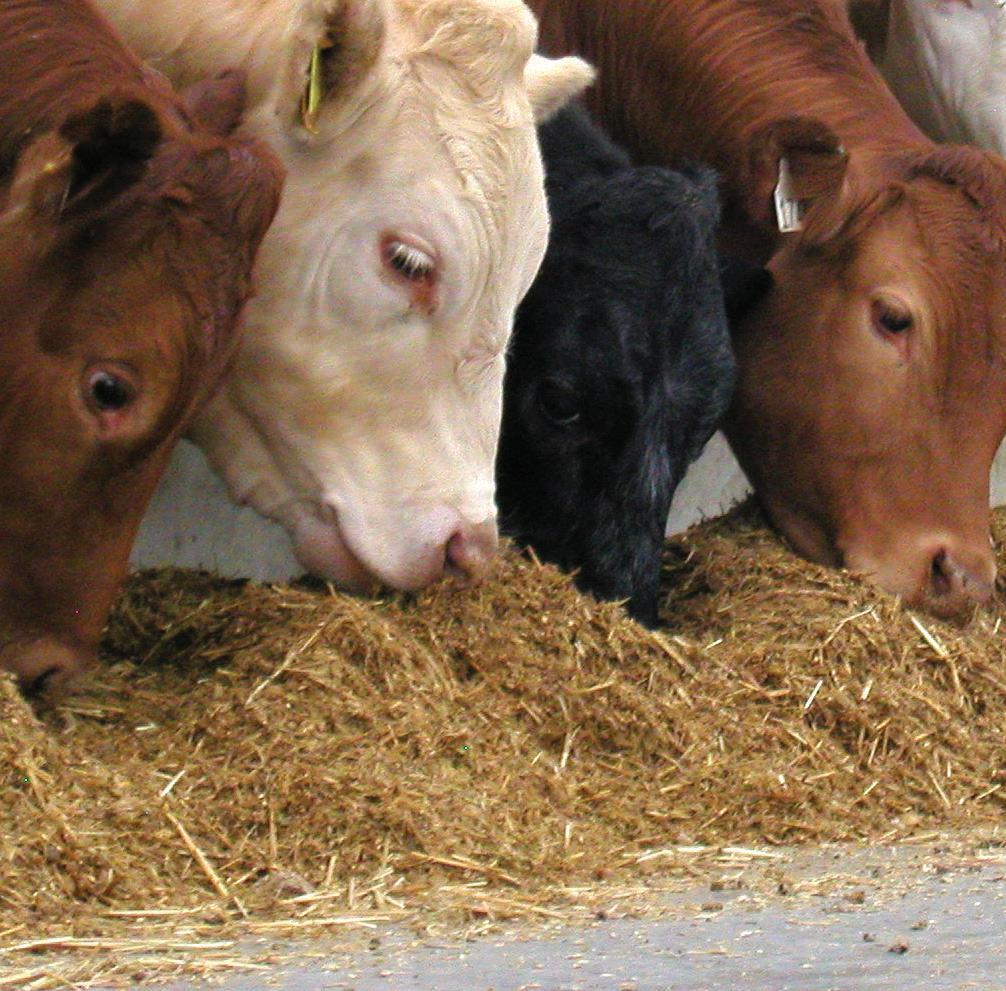

March Production Overview
Total production of compounds, blends and concentrates, including integrated poultry units, during March decreased by 10,400 tonnes or 0.8 per cent from the corresponding month a year previous to 1,262,500 tonnes. This was the fourth year in succession where March feed output had declined and as a result, the current total fell 94,900 tonnes or 7.2 per cent below the decade long average for the month.
Total feed production during the month of March 2024 was made up of: 43.4 per cent poultry feed; 30.2 per cent cattle and calf feed; 13.3 per cent pig feed; 10.0 per cent sheep feed; 1.5 per cent horse feed; and 1.6 per cent other feed.
At 547,500 tonnes of output, total March poultry feed bettered its year earlier production by 7,000 tonnes or 1.3 per cent. However, due to significant drops in output over recent years, the total under review was 26,800 tonnes or 4.8 per cent down on the 10 year average for March.
Integrated poultry feed produced surpassed its year earlier total by a considerable 20,100 tonnes or 10.6 per cent, rising to 210,000 tonnes of production, its second highest level in seven years. Turkey feed production also bettered its year previous return, as it has done for nine out of the past 10 months, in this case doing so by 300 tonnes or 5.9 per cent. Layer compounds was the final subsector to outstrip its respective 2023 total, its output grew by 2,400 tonnes or 2.5 per cent to 99,000 tonnes. Broiler chicken compounds production fell for the fourth March in a row, dropping 14,700 tonnes or 7.5 per cent to 180,600 tonnes. At 27,800 tonnes, poultry breeding and rearing compounds was at its lowest level for the month since 2013, down 1,600 tonnes or 5.4 per cent from a year earlier. Similarly, chick rearing compounds was at its lowest output since 2015 of 10,400 tonnes, 600 tonnes or 5.5 per cent lower than in the March of 2023.
A decrease of 2,900 tonnes or 0.8 per cent brought total cattle and

calf feed compounds down to 381,500 tonnes, its lowest total for the month under review since 2009. Moreover, the current total was 22,900 tonnes or 5.8 per cent down on the decade long average for March.
Total calf feed output was one of only two cattle and calf feed subsectors that bettered its year previous return, doing so by 1,400 tonnes or 12.8 per cent rising to 12,300 tonnes of production. The second was all other cattle blends which, at 33,500 tonnes of production, had increased by a significant 6,400 tonnes or 23.6 per cent from a year earlier. In contrast, output from the sector’s largest category, compounds for dairy cows, fell for the third year in succession to 191,000 tonnes, a decrease of 6,400 tonnes or 3.2 per cent from a year previous. Blends for dairy cow was also down on a year previous, production falling 2,400 tonnes or 3.0 per cent to 78,900 tonnes. At 52,100 tonnes, all other cattle compounds output was at its lowest level since records were kept in their current form; the total under review had declined by 400 tonnes or 0.8 per cent from the previous March low in 2023. Lastly, cattle protein concentrates dropped by 700 tonnes or 7.3 per cent to 8,900 tonnes.
A decline in production of 7,000 tonnes or 4.0 per cent brought total March pig feed down to 167,200 tonnes, the lowest output for the month under review for 7 years. As such, the current total was 5,400 tonnes or 3.2 per cent below the 10 year average for the month.
Despite the significant drop in production from the sector overall, the output of pig growing compounds surpassed its year previous return by 3,000 tonnes or 12.4 per cent and rose to 27,100 tonnes. Pig protein concentrates also bettered their year previous return, up 100 tonnes to 300 tonnes of production for the month. On the other hand, link and early grower feed production for March dropped to its lowest level since 2006; it declined by a sizable 3,800 tonnes or 40.4 per cent to 5,600 tonnes. At 3,000 tonnes, pig starters and creep feed output had decreased by 800 tonnes or 21.1 per cent from a year earlier to its lowest level since 1992. Pig finishing compounds production dropped for the second year in succession, down 3,200 tonnes or 3.3 per cent to 94,200 tonnes. Finally, pig breeding feed fell from its year earlier total by 2,100 tonnes or 5.4 per cent to 37,100 tonnes.
Total sheep feed production was at its lowest level for March since records were kept in their present form in 1992. The current output of 126,500 tonnes was 4,500 tonnes or 5.4 per cent lower than in the respective month a year previous. In addition, the current total was 25,500 tonnes or 18.3 per cent below the decade long average for March.
Although the sector was at its lowest level on record, both blends for breeding sheep and bends for growing and finishing sheep outstripped their year previous returns. The former did so by 500 tonnes or 12.8 per cent up to 4,400 tonnes and the latter did so by 300 tonnes or 5.3 per cent up to 6,000 tonnes. Sheep protein concentrates also increased from a year earlier, up 100 tonnes to 800 tonnes of production. Compounds for breeding sheep fell for the fourth successive year to a record low of 67,300 tonnes, a decrease of 2,200 tonnes or 3.2 per cent from 2023. At 48,000 tonnes, production of compounds for growing and finishing sheep had decreased from year earlier levels by 3,200 tonnes or 6.3 per cent.
At 18,800 tonnes of output, total horse feed was at its lowest level since 2014 and 2,100 tonnes or 10.0 per cent lower than in



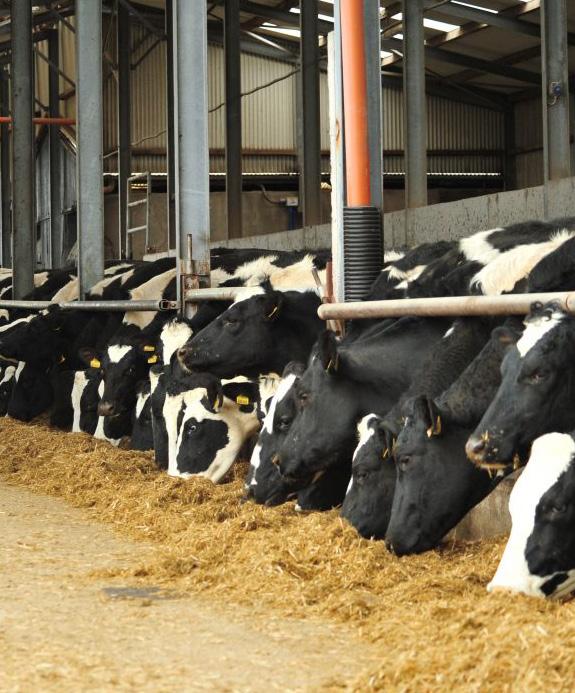
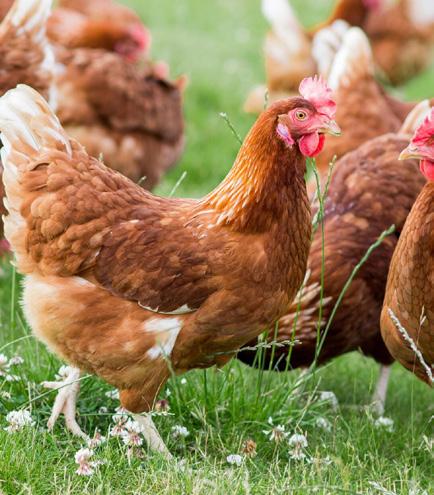
the corresponding month a year earlier. Furthermore, 2024’s March production was a considerable 2,300 tonnes or 11.5 per cent down on the 10 year average for the month.
A decline of 1,100 tonnes or 5.2 per cent resulted in total other feed dropping to its lowest level for March since 2008 of 19,900 tonnes. Moreover, due to considerably higher production earlier in the decade, the current total was 10,400 tonnes or 41.4 per cent down on the 10 year average for the month.
The release of the March feed production statistics brought the first quarter to a close and these figures are analysed below.
Total production of compounds, blends and concentrates, including integrated poultry units, during the first quarter of 2024 amounted to 3,555,200 tonnes, surpassing its year earlier counterpart by 218,500 tonnes or 6.6 per cent. However, the total under review was lower than all but three of the past ten Q 1 returns and therefore dropped 44,300 tonnes or 1.2 per cent below the decade long average for the period.
Total feed production during the first quarter of 2024 was made up of: 43.9 per cent poultry feed; 30.7 per cent cattle and calf feed; 13.2 per cent pig feed; 9.1 per cent sheep feed; 1.6 per cent horse feed; and 1.6 per cent other feed.
At 1,561,000 tonnes, total first quarter poultry feed production exceeded the return of a year previous by 152,300 tonnes or 10.8 per cent. Additionally, the total under review outpaced the decade long average for the timeframe by 38,300 tonnes or 2.5 per cent.
Total production from integrated poultry units was at its highest first quarter level in 12 years at 645,300 tonnes, up a notable 151,000 tonnes or 30.6 per cent from a year previous. Conversely, broiler feed production was at its lowest Q1 output for eight years at 495,700 tonnes, down 16,900 tonnes or 3.3 per cent from the corresponding period a year earlier. Having decreased markedly for the past three years, turkey feed production bettered its 2023 return by 4,900 tonnes or 39.5 per cent, rising to 17,300 tonnes. Both the layer and chick rearing feed subsectors rebounded from decreases in first quarter production a year earlier, with the former increasing by 7,300 tonnes or 2.8 per cent to 265,000 tonnes and the latter by 600 tonnes or 2.0 per cent to 30,000 tonnes. Lastly, poultry breeding and rearing feed output fell
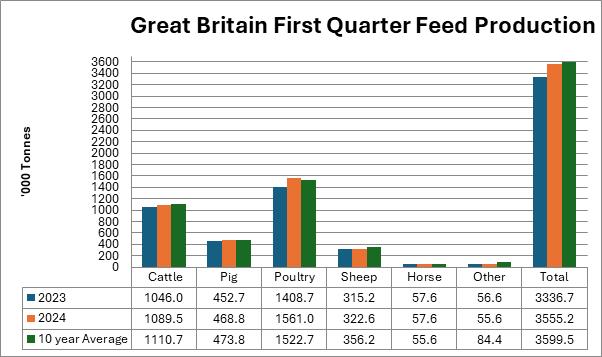
for the fourth first quarter in succession to 76,400 tonnes, a decline of 1,100 tonnes or 1.4 per cent.
A rise of 43,500 tonnes, or 4.2 per cent in first quarter cattle and calf feed production brought the total under review up to 1,089,500 tonnes. Nevertheless, the current total was still 21,200 tonnes or 1.9 per cent lower than the decade long first quarter average.
Protein concentrates for cattle and calves was the only cattle feed subsector that failed to better its year previous Q1 returns, as it dropped 100 tonnes or 0.4 per cent from its corresponding 2023 output to 26,000 tonnes. The all other cattle blends category grew by the most significant proportion in the period under review, rising by 21,200 tonnes or 28.0 per cent from a year previous to 96,800 tonnes. First quarter all calf feed output also increased significantly, up 3,700 tonnes or 8.2 per cent from a year previous to 49,000 tonnes. The remaining cattle feed subsectors all increased steadily from their year earlier Q1 levels: compounds for dairy cows grew by 11,600 tonnes or 2.2 per cent up to 537,900 tonnes; output of blends for dairy cows rose by 2,600 tonnes or 1.2 per cent to 227,000 tonnes; and all other cattle feed outpaced its year previous counterpart by 4,400 tonnes or 3.0 per cent up to 152,700 tonnes.
Following a considerable drop in production between 2022 and 2023, total first quarter pig feed output increased by 16,100 tonnes or 3.6 per cent. However, this rise was not great enough to bring the total under review above the long term average, which it was 5,000 tonnes or 1.1 per cent below.
Pig growing feed production rose sharply from its year earlier first quarter counterpart to 81,200 tonnes, an increase of 17,200 tonnes or 26.9 per cent. The sector’s largest component, pig finishing feed, also bettered its year previous return, doing so by 8,200 tonnes or 3.3 per cent, up to 259,100 tonnes of output for the quarter. Pig breeding feed production also increased, by 2,300 tonnes or 2.2 per cent up to 105,100 tonnes. On the other hand, pig starters and creep feed output was at its lowest level for the period since records were kept in their current form, at 8,100 tonnes, down 1,800 tonnes or 18.2 per cent from a year previous. Link and early grower feed also decreased sharply from the first quarter of 2023 to 14,900 tonnes, its lowest level since 2006 and 9,500 tonnes or 38.9 per cent down on a year earlier.
Total sheep feed bettered its year previous production by 7,400 tonnes or 2.3 per cent and rose to 322,600 tonnes of output for the quarter. Despite this increase, the total under review was 33,600 tonnes or 9.9 per cent lower than the 10 year average for the period.
At 133,200 tonnes, compounds for breeding sheep was the one subsector where production failed to better its year previous Q1 counterpart, falling 3,100 tonnes or 2.3 per cent from its 2023 return. In contrast, blends for growing and finishing sheep and protein concentrates for sheep both grew sharply from their respective year earlier returns: the former’s production increased by 2,100 tonnes or 13.0 per cent to 18,200 tonnes and the latter’s did so by 300 tonnes or 15.8 per cent to 2,200 tonnes. Having declined for three first quarters in a row, compounds for breeding sheep output, at 157,700 tonnes, outpaced its year earlier return by 7,400 tonnes or 4.9 per
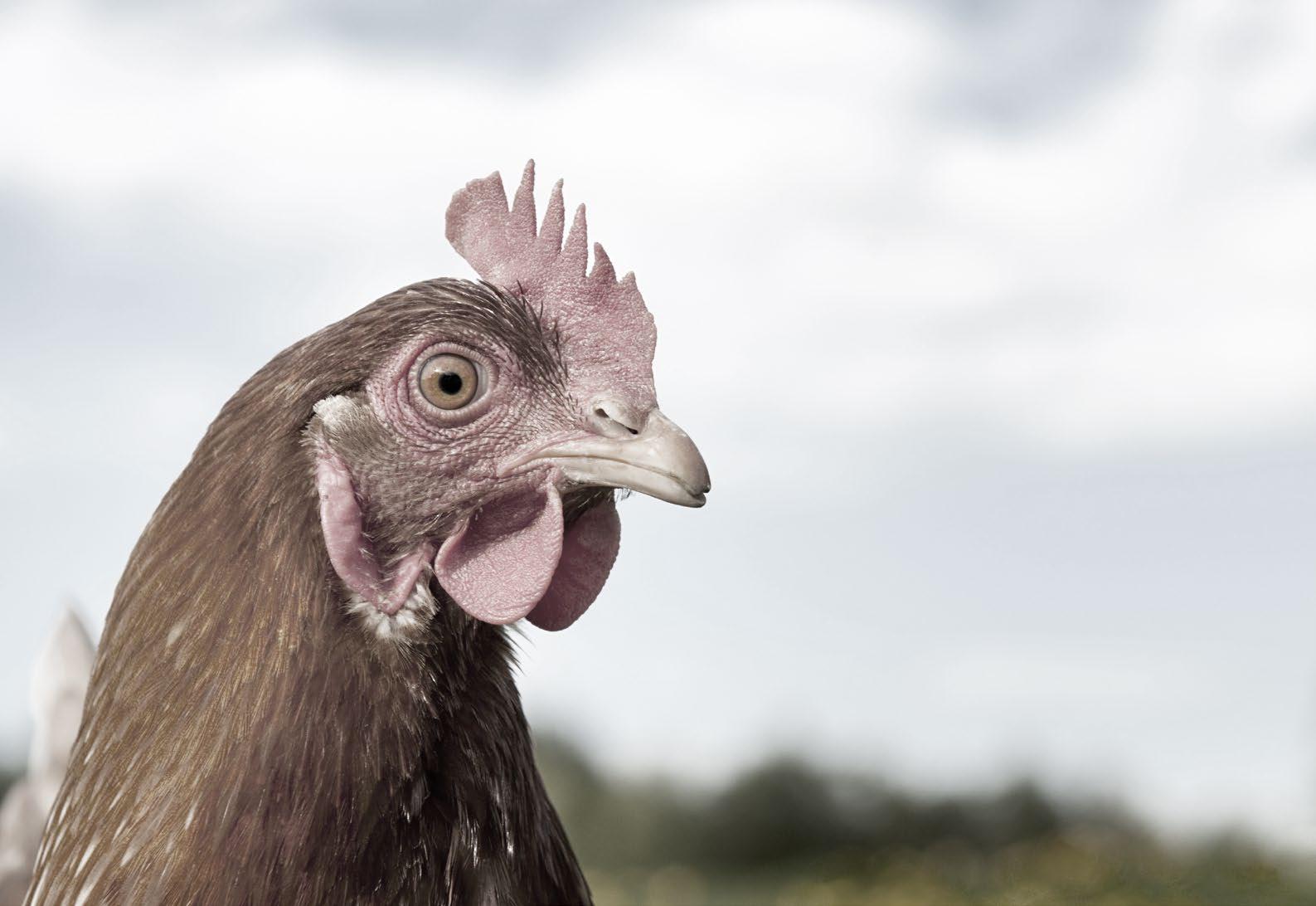
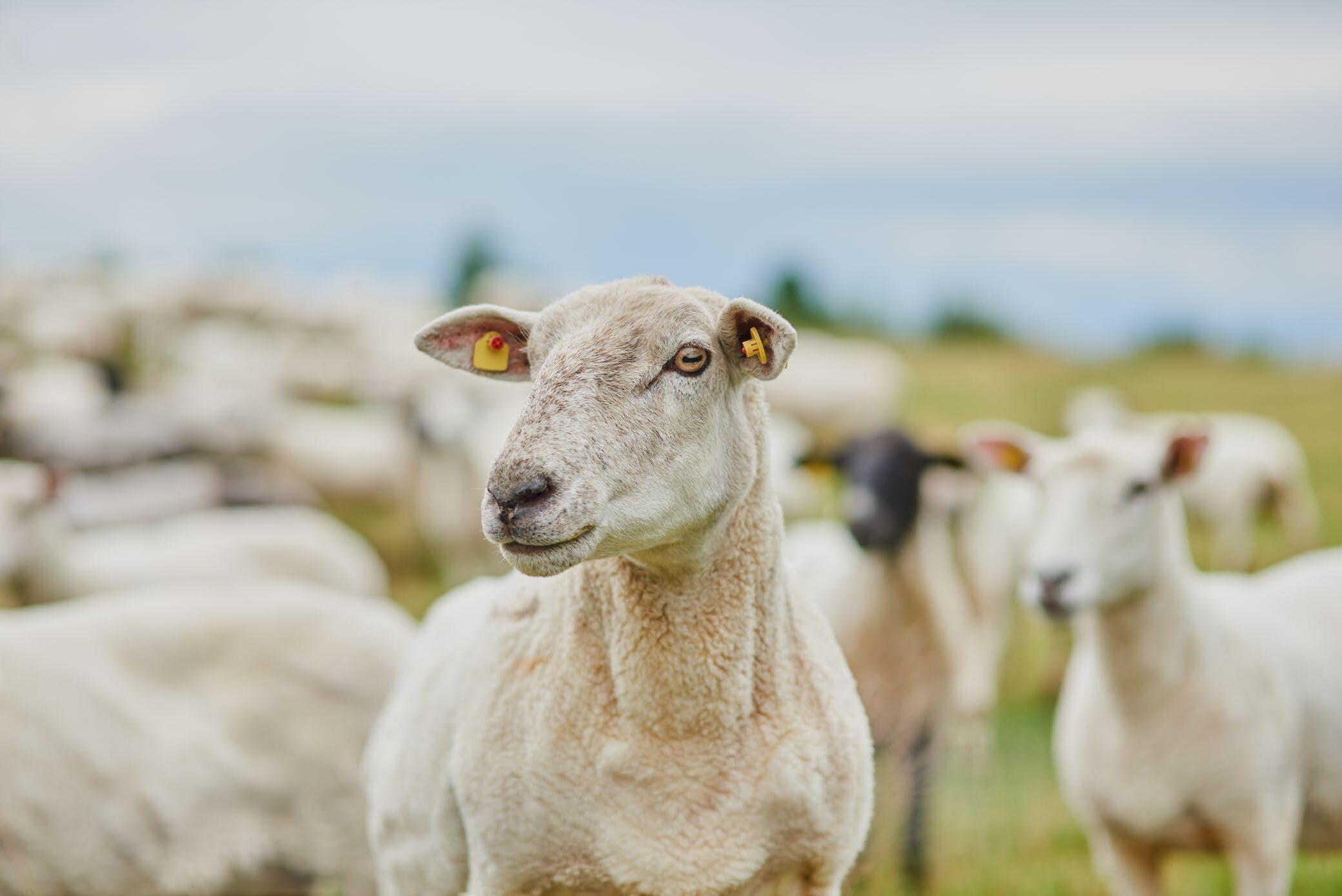

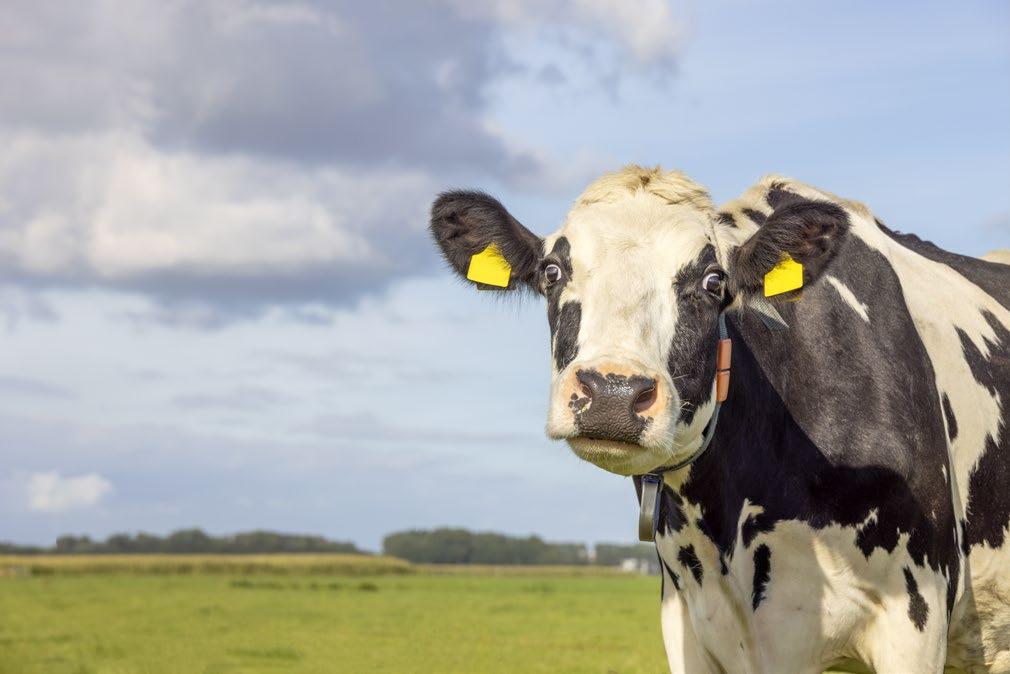
cent, however, this was still the second lowest total for the period on record. Finally, blends for breeding sheep surpassed its year previous counterpart by 700 tonnes or 6.6 per cent, rising to 11,300 tonnes for the quarter.
Production of total horse feed matched its 2023 first quarter return of 57,600 tonnes. Output from the current timeframe was nonetheless 2,000 tonnes or 3.6 per cent in excess of the 10 year average for the period under review.
First quarter total other feed production dropped by 1,000 tonnes or 1.8 per cent from the levels recorded a year ago to 55,600 tonnes. Additionally, the total under review was a marked 28,800 tonnes or 41.1 per cent lower than the decade long Q1 average.
With total production from all the sectors bar horse and other feed, surpassing their year previous first quarter returns, it appears as if Great British feed production is on course to rebound somewhat from the sizeable downturn in output in 2023. However, as the poultry feed and horse feed sectors were the only two to better their long term averages there is a big gap to make up before production returns to the heights of four years ago. It will be interesting to see the impact of the incredibly poor weather of the past 6 months affects feed production going forward.
Year End Production Overview
Total production of compounds, blends and concentrates, including integrated poultry units, during the year of 2023 was at a record high 2,648,700 tonnes, surpassing 2022 by 39,100 tonnes or 1.5 per cent. In addition, the total under review was a considerable 175,700 tonnes or 7.1 per cent in excess of the decade long average for a calendar year.
Total feed production during the year of 2023 was made up of: 34.2 per cent poultry feed; 30.5 per cent cattle and calf feed; 14.4 per cent pig feed; 5.6 per cent sheep feed; and 2.2 per cent other feed.
At 1,370,300 tonnes, total cattle and calf feed in 2023 was at its highest level for a calendar year on record and 5,000 tonnes or 0.4 per cent above the previous record return from a year earlier. Moreover, the total under review was 96,300 tonnes or 7.6 per cent greater than the decade long average for the period.
Despite the overall growth in production in the sector, a number

of subsectors failed to match their year previous returns. Production of beef coarse mixes or blends for the period had fallen for the second year in succession, in this instance by 12,900 tonnes or 5.0 per cent to 242,500 tonnes of output. Year end beef cattle compounds production had also dropped for the second consecutive year to 143,100 tonnes, a 7,200 tonnes or 4.8 per cent decrease from 2022. Moreover, protein concentrates for cattle and calves output from the period under review declined from the previous year by a significant 800 tonnes or 26.3 per cent to 2,400 tonnes. On the other hand, both dairy cow compound and dairy coarse mixes or blends were at their highest level for a calendar year since records were kept in their current form. The former surpassed its year earlier return by 8,600 tonnes or 1.4 per cent and rose to 630,600 tonnes of output, while the latter, at 260,800 tonnes, bettered its 2022 counterpart by 11,000 tonnes or 4.4 per cent. All other cattle compounds production for the timeframe increased by 400 tonnes or 8.7 per cent from a year earlier to 5,200 tonnes. Finally, the two calf feed categories outpaced their year earlies outputs: calf milk substitutes rose by a considerable 500 tonnes or 215.0 per cent to 700 tonnes; and other cattle compounds output grew by 5,400 tonnes or 6.8 per cent to 85,100 tonnes.
An increase in production of 59,100 tonnes or 7.0 per cent brought total poultry feed output for the calendar year up to 906,700 tonnes. A record high for the timeframe and the first time that production has surpassed 900,000 tonnes in a 12 month period. Additionally, the current total outstripped the decade long average for yearly production by 80,000 tonnes or 9.7 per cent.
Both broiler feed, at 496,500 tonnes, and chick rearing feed, at 30,800 tonnes, were at record levels for the period under review, surpassing their year previous production by 50,100 tonnes or 11.2 per cent and 2,600 tonnes or 9.2 per cent respectively. After a prolonged stretch of reduced output, production of turkey and other poultry feed in 2023 increased sharply to 31,110 tonnes, which was a rise of 7,100 tonnes or 29.8 per cent from a year earlier; however, the total under review was still low in comparison to the long term average. Layer and breeder feed was the only poultry subsector where production did not better its year earlier total, the 348,300 tonnes of output from 2023 was 600 tonnes or 0.2 per cent down on its 2022 level.
Total year end pig feed production dropped below its year previous output by 22,400 tonnes or 8.9 per cent to 230,300 tonnes. This was the second time in succession that output from the period had decreased sharply from the record high of 2021. Due to significantly lower production in the first half of the preceding decade, the total under review was still 2,200 tonnes or 1.0 per cent in excess of the 10 year average.
All pig feed subsectors fell below their year earlier counterparts in 2023. The largest category, pig finishing feed, decreased by 10,000 tonnes or 9.6 per cent from the calendar year a year earlier to 94,100 tonnes. Pig growing feed output also dropped sharply to

RONOZYME® WX is a leading xylanase enzyme authorized for use in feed for all major monogastric species.
By helping improve digestibility of energy and protein in poultry and swine diets RONOZYME® WX helps deliver outstanding performance in an efficient and sustainable way.
40,400 tonnes, a fall from 2022 levels of 7,000 tonnes or 14.7 per cent. The declines from 2022 returns from the rest of the sector were more moderate but still not inconsiderable: pig link and early grower feed production dropped by 2,700 tonnes or 6.8 per cent to 36,500 tonnes; pig breeding feed output fell 1,500 tonnes or 4.6 per cent to 31,000 tonnes: and pig starter and creep feed decreased by 1,300 tonnes or 4.3 per cent to 28,400 tonnes.
Total sheep feed production in 2023 rose to 65,400 tonnes, an increase of 2,900 tonnes or 4.7 per cent from its year earlier counterpart. Furthermore, the current total outpaced the 10 year average for the timeframe by 600 tonnes or 0.9 per cent.
Breeding sheep compounds were the only category where production dropped below its year earlier return, doing so by 1,000 tonnes or 4.5 per cent to 21,800 tonnes. On the other hand, output of growing and finishing sheep compounds grew by 2,500 tonnes or 8.8 per cent to 30,200 tonnes, its second highest total for a calendar year on record. Coarse mixes or blends for sheep, at 13,300 tonnes, had also increased markedly from 2022 levels which it had bettered by 1,500 tonnes or 12.6 per cent. Lastly, there was around 40 tonnes of sheep protein concentrates recorded as being produced in 2023, a slight increase on a year previous.
A 5,500 tonnes or 6.8 per cent decrease in total other feed from a year earlier brought 2023 production down to 76,000 tonnes. As a
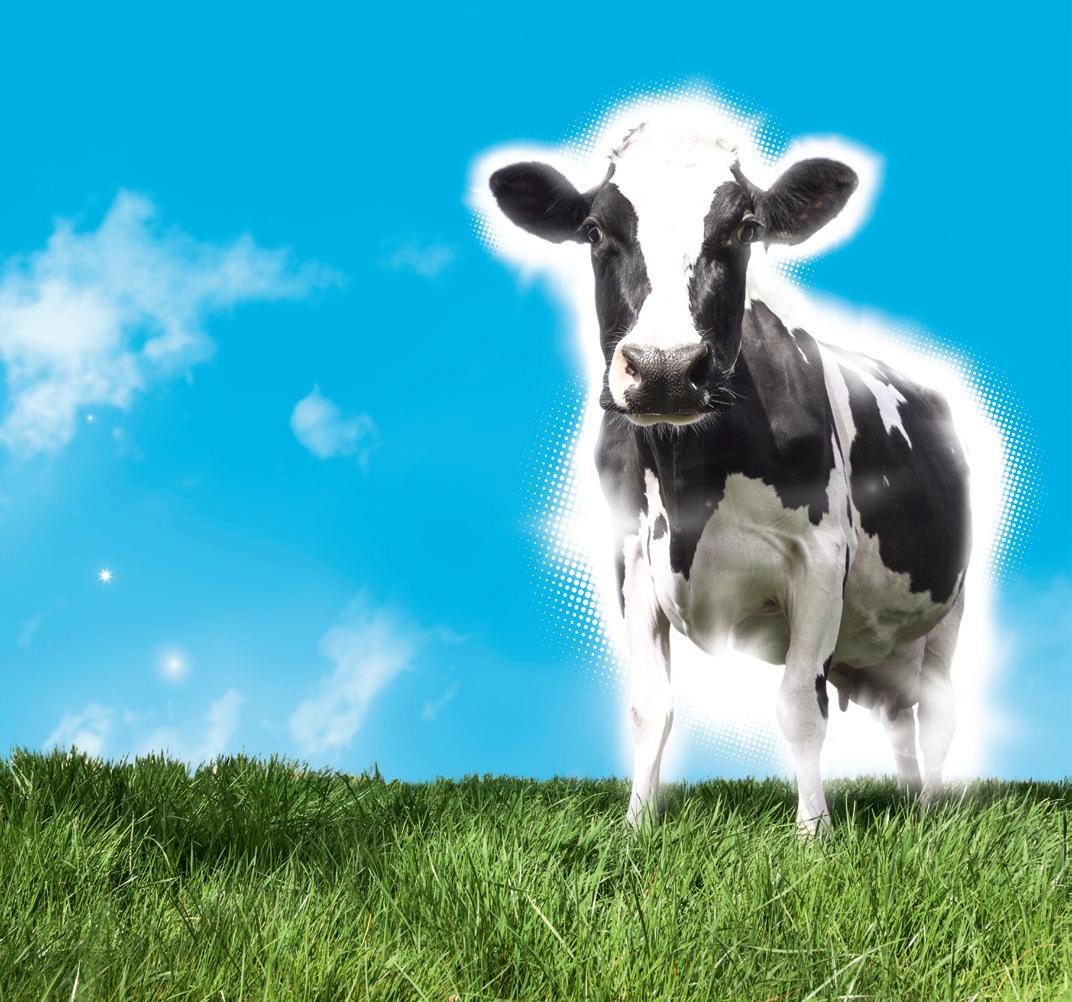







result of this fall, the current total was 3,400 tonnes or 4.3 per cent lower than the decade long calendar year average.
With total production at record highs for a calendar year, the contrast between Northern Irish and Great British animal feed production is stark. The two largest sectors, cattle and poultry, were also both individually at record levels and pig feed was the only main category where production fell below year earlier levels - it was, nevertheless, above the long term average. The industry is looking well set as it entered 2024 and the January figures for Northern Ireland are discussed below.
Total production of compounds, blends and concentrates, during the month of January amounted to 244,600 tonnes, an increase of 13,600 tonnes or 5.9 per cent from the corresponding month a year earlier. This was the fourth successive January where total output had risen. Furthermore, the total under review was 14,800 tonnes or 6.4 per cent in excess of the decade long average for January.
Total feed production during the month of January 2024 was made up of: 54.1 per cent cattle and calf feed; 31.6 per cent poultry feed; 8.2 per cent pig feed; 3.2 per cent sheep feed; and 3.0 per cent other feed.
Total cattle and calf feed production in January surpassed its year previous counterpart by 7,400 tonnes or 5.9 per cent and grew to 132,200 tonnes. This was the third highest total on record for the month under review and also 8,100 tonnes or 6.5 per cent greater than the 10 year average for January.
In contrast with the sector’s performance overall, output of beef cattle compounds fell for the fourth year in succession to 14,400 tonnes, a decline from a year earlier of 700 tonnes or 4.5 per cent. Dairy cow compounds production, at 53,300 tonnes, also decreased from its year previous level by 100 tonnes or 0.2 per cent. Beef coarse mixes or blend output bettered its 2023 return by a considerable 5,300 tonnes or 23.3 per cent, up to 28,200 tonnes of production. Both the dairy coarse mixes and blends and other cattle compounds subsectors outpaced their year previous totals: the former rose by 2,400 tonnes or 9.7 per cent to 26,800 tonnes and the latter rose by 300 tonnes or 4.0 per cent up to 8,700 tonnes of output. Production of all other cattle compounds and protein concentrates for cattle and calves were each at 400 tonnes and in line with their year earlier outputs.
At 77,200 tonnes, total poultry feed production was at a record high for the month under review and 4,900 tonnes or 6.8 per cent higher than a year earlier. Moreover, the current total outstripped the 10 year average for January by 7,100 tonnes or 10.1 per cent.
Only turkey and other poultry feed production failed to surpass its year previous counterpart as output fell by a substantial 1,300 tonnes or 45.5 per cent to 1,500 tonnes. On the other hand, both
the layer and breeder feed and chick rearing feed categories were both at record levels for the timeframe under review. The former, at 28,800 tonnes, was 1,200 tonnes or 4.2 per cent up on a year earlier and the latter’s production increased by 600 tonnes or 22.7 per cent. Finally, broiler feed production outpaced its year earlier total for the third year in a row, in this instance by 4,500 tonnes or 11.3 per cent up to 43,800 tonnes.
A growth in output of 400 tonnes or 2.2 per cent brought total pig feed production for January up to 20,100 tonnes. However, in spite of the increase, the total under review was still over 100 tonnes or 0.4 per cent lower than the decade long average for the month.
At 3,000 tonnes of output, pig growing feed had decreased by 700 tonnes or 19. 2 per cent from its year previous level. Similarly, pig breeding feed production had fallen by 100 tonnes or 3.7 per cent from its 2023 return to 2,500 tonnes. However, pig starter and creep feed production rose by 600 tonnes or 24.1 per cent from the corresponding month a year earlier to 2,900 tonnes and pig link and early grower feed increased by 400 tonnes or 12.9 per cent to 3,500 tonnes of output. Each of these totals was a joint record high for the month. Lastly, pig finishing feed production surpassed its year previous total by 300 tonnes or 3.4 per cent and rose to 8,300 tonnes.
Total sheep feed production in January declined by 300 tonnes or 3.4 per cent to 7,800 tonnes; this downturn brought it in line exactly with the decade long average for the month.
Despite the overall drop, more sheep feed subsectors surpassed their year earlier totals than fell below them. Output of growing and finishing sheep compounds increased from its 2023 return by 300 tonnes or 11.3 per cent up to 3,000 tonnes, while breeding sheep compounds production rose by 100 tonnes or 0.6 per cent to 3,600 tonnes. However, production of coarse mixes or blends for sheep dropped to its second lowest level for the month this millennium of 1,200 tonnes, 600 tonnes or 32.6 per cent down on a year previous.
A 1,200 tonnes or 19.5 per cent increase brought total other feed production up to 7,300 tonnes, its highest level for the month In four years. However, this increase was not large enough to bring the total under review above the decade long average for January, which it fell 300 tonnes or 3.6 per cent below.
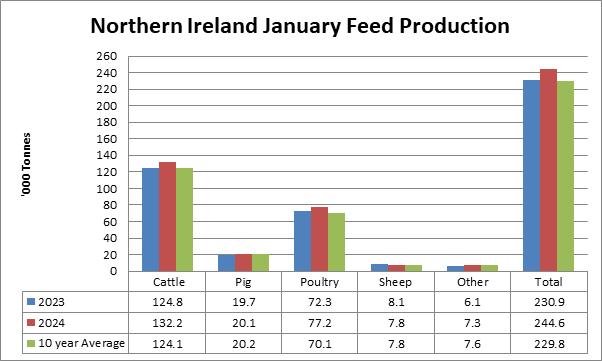



Modern European agriculture is all about sustainable feed and food production, ideally based on locally sourced raw materials, leaving the lowest possible carbon footprint, with all available waste being used for clean energy generation.
It’s a tall order to tick all these boxes but this is where the industry is headed at present, accompanied by rising pressure being applied to those who don’t match up. This, certainly, is the message being pumped out by the industry’s annual round of specialist conferences and exhibitions, alongside a steady stream of research announcements. Invitations to book now for the top 2024 events before I miss out on my ‘early bird’ discount have filled the email inbox in recent weeks, although the truth is that even the early birds are clearly still going to be paying a hefty amount, often to be told what they’re not currently getting right.
Robotics and Artificial Intelligence (AI) feature prominently in many event headlines, together with exhortations to increase energy efficiency while successfully cutting down on methane and other farm-related emissions.
Studying the various event-linked innovation awards is always worthwhile, first and foremost for information and ideas, but also, in some cases, for a degree of entertainment.
First up is a research development being pursued in Ireland where a team at Munster Technological University (MTU) is bringing a whole new meaning to the idea of squeezing the last drop of juice out of any available asset. In their case, the focus is on freshly cut grass, which they’re subjecting to a biorefinery process to create a pressed grass cake product and three selected grass juices. In addition to maximising pasture management across their very green homeland, one of the team’s key motivations is to help Irish farmers reduce their reliance on imported soya.
The pressed cake, which contains 60% of the protein present in the original grass, is fed to cattle and pigs, while the juices are being trialled for use across a range of livestock feeds, human protein products, and as a feedstock for bioenergy generation.
“Grass is one of the world’s greatest bioresources, accounting for 26% of the world’s total land mass and 70% of the global agricultural area,” research leader, James Gaffey, told Scottish farmers during a recent webinar, pointing out that Europe has 61 million hectares of grassland, all of which he argued is ready and waiting to be put to its proper use.
On-farm trials in Ireland, designed to assess the feeding value of the pressed cake as an alternative to grass silage, have already produced impressive early results. Even though the overall protein concentration of the cake was quite a bit lower than the silage, the MTU team said that consuming the cake results in much higher nitrogen use efficiency than with silage, due to a lot more of the cake-based protein being converted into milk. This, they add, is due to the ‘opening’ of the fresh grass during the biorefining process which is used to ‘unlock’ the higher nitrogen use.
Gaffey also told his Scottish audience that the juices left over, once the cake has been harvested, has great potential as a future animal feed component.
“One of the challenges which livestock farmers face in Europe is to secure sufficient sustainable proteins to feed to their animals,” he said. As a result, we import some 17 million tonnes of protein for animal feeding, around 13m tonnes of which is soya. Much of that soya is travelling a long way to get to Europe, with some of it being associated with land use changes and other impacts.
“Alongside such soya demands of Europe, livestock farmers in Ireland import around 3 million tonnes of animal feed on an annual basis, all of which adds up to a huge challenge for a domestic industry which is seeking to become ever more sustainable in feed for cattle, poultry, and pig production. In addition, the European Parliament recently voted in favour of a proposed protein strategy, much of which focuses on the development of alternative feeds.”
The MTU team’s hope, of course, is that its pressed grass process will create new possibilities for unlocking Europe’s grassland potential, ultimately producing additional proteins without needing any more land to be devoted to feeding livestock or even for there to be any increase in existing grassland output.
There is also evidence that feeding pressed cake to livestock could deliver a methane emissions benefit for Europe’s farmers, a fact which will become increasingly attractive as the continent edges closer to its various 2030 and 2050 net zero targets.
“We’ve discovered that a lot less nitrogen and phosphorus is lost via a cow’s excrement when she’s fed pressed cake in comparison to grass silage,” said Gaffey. “This could potentially yield an environmental benefit, with the ‘bits of work’ done so far indicating that switching from feeding grass silage to giving cows pressed cake could reduce methane emissions by 10%.”
This is very much a ‘watch this space’ development with both partner and competitor implications for our own industry.
The ever-changing face of feeding livestock also showed up in a preview item I was sent by the organisers of the British Pig & Poultry Fair.
Apparently, exhibitors at the Birmingham-based May 15/16 event will be unveiling more than 60 new products, ranging from red LED lighting to calm birds and boost egg production to a special gel which provides (I’m told) ‘quick hydration, energy, and gut protection for day-old chicks’



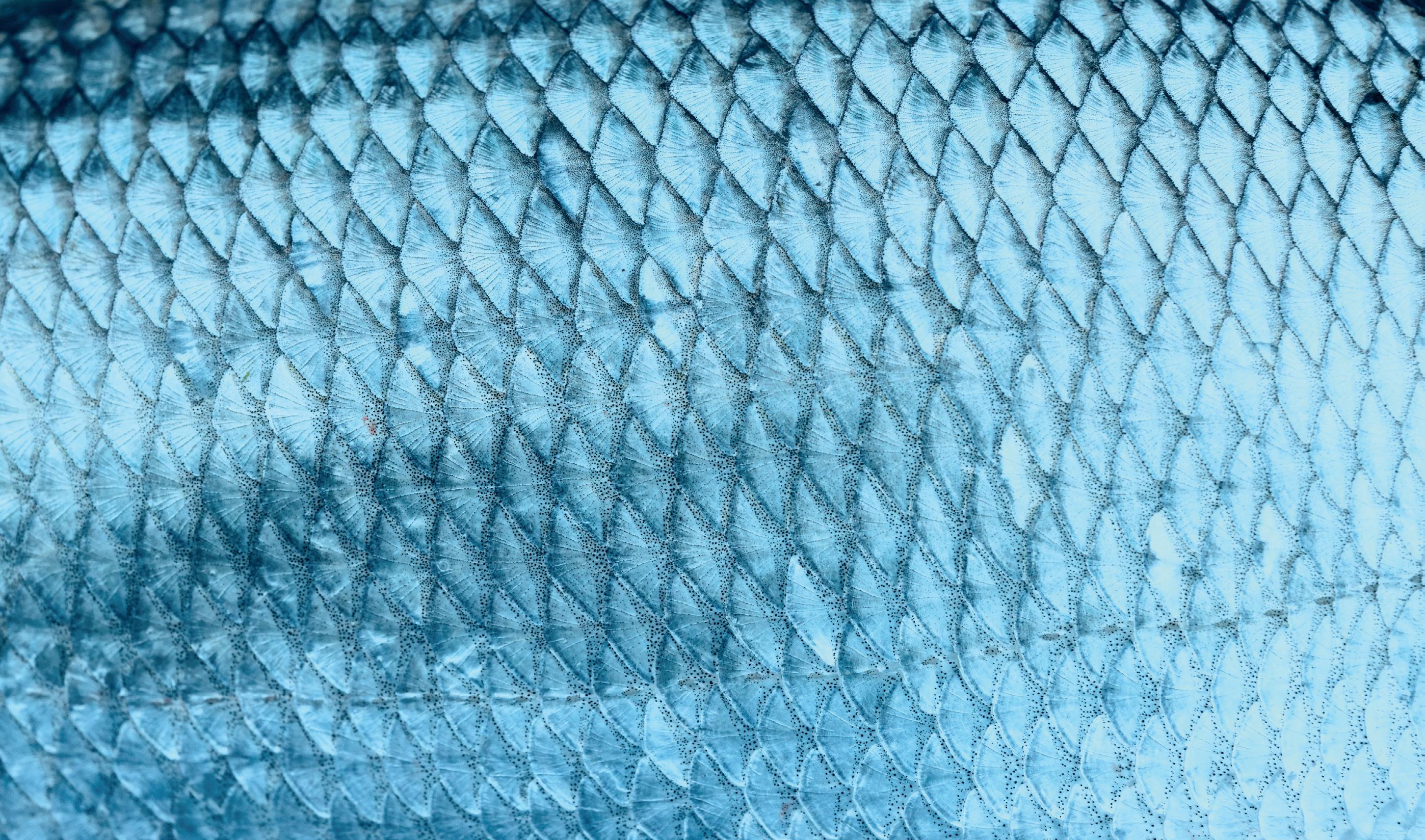

There is also the promise of a new herbal extract for adding to pig and poultry feeds with the claim that it will ‘enhance appetite, block pathogens, and diminish ammonia odours’.
The prospect that such ideas and inventions will be taken on board by farmers is pretty strong, according to event organiser, Alice Bell, who said that no less than 78% of last year’s 7500 visitors planned to make changes to their business as a result of their day at the Fair. I guess that was 78% of those who bothered to fill in the end-of-day exit survey, but it’s still a figure to take on board.
Congratulations to the nine feed companies who have donated to the University Fund Wageningen (UFW) in The Netherlands, helping to support budding entrepreneurs as they work their way through their PhD studies.
One of the beneficiaries of the 325,000 euros provided by the nine is Evelien Bos, founder of a startup called Pet Panel, which offers a home-based testing service for pet parents to assess which petfood is best for their animals and, just as important, which they prefer.
In addition to having Pet Panel up and running in The Netherlands, Evelien has also been nominated for a Wageningen Entrepreneurship Grant. Awarded annually by UFW, the grant programme targets young entrepreneurs who make a social impact. Finals day is on 22 May.
The company’s offering, which obviously impressed UFW ’ s nomination team, includes both palatability and digestibility tests.
The palatability question is simple enough. Is the feed being provided tasty or not? Pet Panel also points out that while a feed product might be healthy, nutritious, and safe, if pets don’t want to eat it, all these great properties are irrelevant.
To select what pets like therefore, Evelien’s startup offers an acceptance test and a preference test. Acceptance shows the pet in question will eat a specific product while preference shows what it really likes when there is a choice.
Testing for digestibility is a somewhat messier business, being based on the fact that everything eaten by pets, but not properly digested, ends up in their feces.
It’s a measure of the growing number and dedication of pet owners across Europe that a home-testing service like this is in the frame for an entrepreneurs’ award. All credit, therefore, to the nine companies involved with UFW for their awareness of the expanding importance and value of this sector to the feed industry. They’re also, of course, on the inside track as soon as pets make their choice.
A similar indication of market growth potential applies to the following innovation plus entertainment item, courtesy of a promotional blub issued ahead of Petcare Innovation Europe, which takes place in Berlin on June 4 & 5.
Don’t get me wrong, the event’s 10 innovation finalists are all valid contenders for the top prize, to be awarded during the event itself. I was merely struck by the fact that two of the listed finalists have developed premium cosmetics for dogs with, let’s say, challenging hair.
Pet parents are duly being offered a whole new world of shampoos, conditioners, and revitalisers to keep their favoured animals in optimal condition and shape.
Having been brought up on a farm in southwest England with a sheep dog and a gun dog, both of whom were much loved and appreciated for their specialist skills but weren’t big into hair control. I couldn’t escape the image of my father considering which shampoo to give them.
The feed compound message is clear enough, however, namely that the petfood market looks well set for sustained growth in the hands of many very committed owners. Pets, by the way, are also delightfully free from the methane monitoring pressures currently applied to farm livestock or the need to be productive to stay alive.
It also seems, at least in my neighbourhood, that while last year most people seemed to have acquired a dog during lockdown, many of them now appear to have two dogs. Now that really is a significant indication of market growth potential.
Finally, I always like to include a non-feed item in this column, hopefully with a compounder angle for those who wish to find one.
In this context, I was intrigued by a recent press note issued by Rabobank, The Netherlands-based international bank.
“How come animals instinctively eat a balanced diet, but humans appear to have lost that skill?”
The question was posed by Nicholas Fereday, Senior AnalystConsumer Foods, working for RaboResearch Food & Agribusiness.
“We aren’t getting enough protein,” he continued, adding that when we don’t meet our required daily protein intake, we overconsume carbs and fats, leading to weight gain.
Pointing out that for a balanced diet, we need carbs, fats, and protein, as well as salt and calcium, he further explained that unlike carbs and fats, protein cannot be stored in the body. As a result, our body makes it a daily priority to meet our required intake.
“We continue to feel hungry until we meet our protein needs, so we will instinctively keep eating,” he said. “When we undereat protein, we overeat carbs and fats. But today’s food environment is dominated by processed foods that are heavy on carbs and fats, which makes it hard for us to meet our daily nutritional needs. We need to consciously prioritise protein to avoid overeating and achieve a balanced diet.”
Fereday then draws a conclusion for the food industry, which undoubtedly includes us.
“First, there’s an opportunity to reformulate products to increase protein content, potentially improving public health,” he said. “High-protein breakfast options could help consumers prioritise protein at the start of their day to avoid overconsuming fats and carbs during their day. Second, marketing strategies could focus on the benefits of balanced protein intake, aligning with consumer interest in healthier diets.”
His complete argument is obviously longer than this and rather more complex. It’s worth searching for, however, especially in a world where what we eat and how it’s produced has never been so much in focus as it is today.





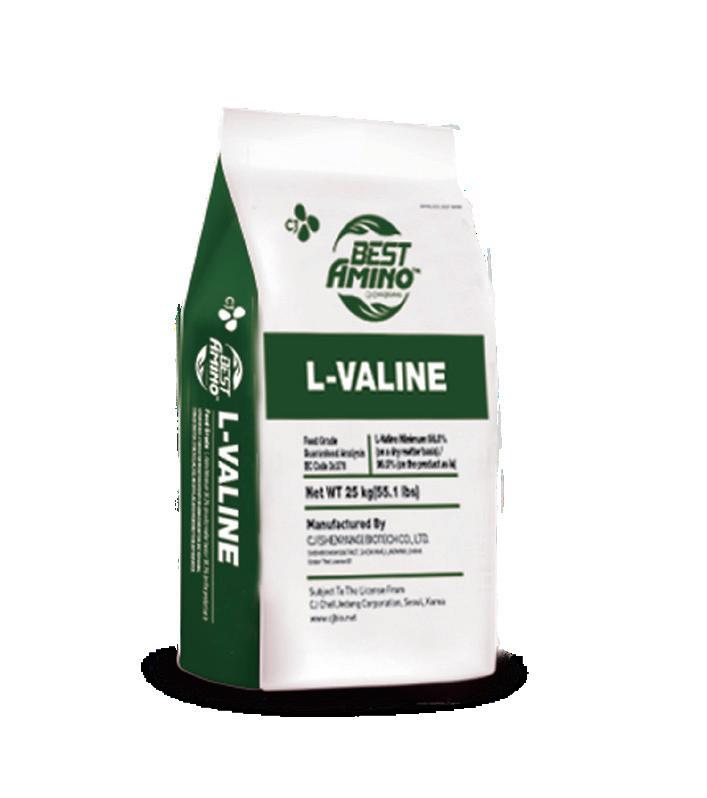


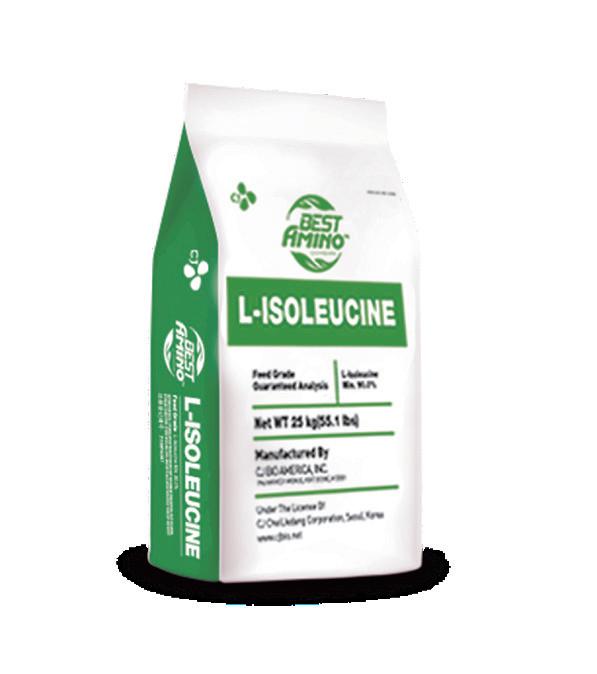
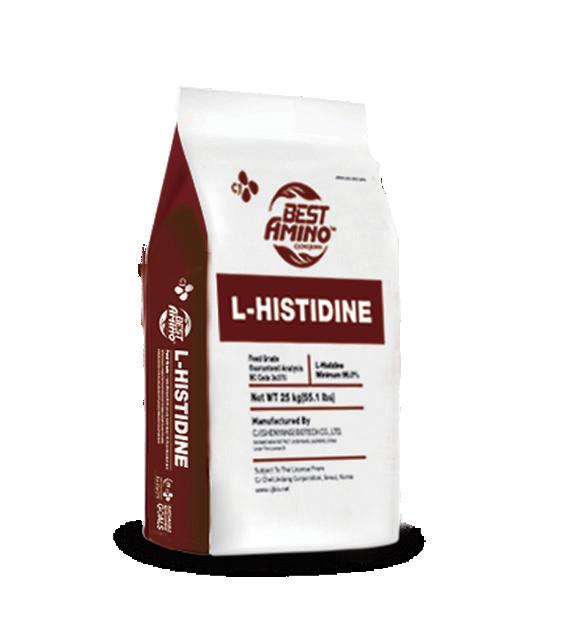



To ensure the sustainable development of the poultry industry, researchers of this recently published study1 evaluated how technological progress in poultry waste management is key to attaining economic, environmental, and social sustainability.
The poultry industry generates large amounts of byproducts during meat processing, including feathers, viscera, bones, heads, legs, skin, and dead birds on arrival. These materials represent a massive amount of solid waste that should be properly managed to avoid environmental damage and loss of important raw materials that could be used for the feed industry. These byproducts are often rich sources of protein, which, through different technological processes can be extracted and used as functional ingredients in animal feed.
With so many useful ingredients and nutrients, poultry waste can be properly recycled, treated, and reused as feed ingredients, among other options. Before poultry waste is recycled and reused, necessary pretreatment processes are needed, and for the animal feed industry, hydrolysis and enzymatic treatment are gaining ground; in the current study1, researchers evaluated these technological processes focusing on their benefits and limitations, while presenting the economic, environmental, and social sustainability of poultry waste management.
Hydrolysis breaks the peptide bonds of animal carcasses and wastes by putting them in a special solution under high temperature and pressure to denature proteins into amino acids, hydrolyse fats, and dissolve carbohydrates. With hydrolysis, poultry waste can be used to produce value-added products, including high-quality protein and bioactive ingredients for the food and feed industry, bringing additional economic benefits, and helping mitigate the negative effects of poultry waste disposal on the environment. Recent studies2 show that, following processing, poultry secondary products such as keratin and collagen can be used to produce protein feed additives that improve broiler productivity and meat quality. Hydrolysis has the advantage that it is carried out under optimal conditions, has minimised interaction between steps, and can be applied to a wide range of by-products. However, the technique involves high costs and has a longer processing duration which can increase the susceptibility to contamination.
Protein recovery is one of the major challenges during the conversion of poultry offal and feathers into value-added products. However, the use of enzymes for bioconversion helps achieve protein recovery. Bacillus spp. seems to represent a major source of keratinolytic enzymes for feather processing. Keratinase enzyme which can be obtained from microorganisms is a common enzyme used to process feather waste to produce feed hydrolysates and bioactive peptides with high nutritional characteristics. Studies also show that in addition to being used to produce animal feed, by-products generated from enzyme-digested poultry waste can be used to make high-quality meals for aquaculture. Several studies point out that feather degradation mediated by keratinase provides a viable alternative to alkali hydrolysis and steam pressure-cooking of feathers resulting in products of better nutritional properties to be used as animal feed.
Overall, enzymatic treatment is eco-friendly, has low energy demand as it uses low temperature and pressure, has a short processing duration, has high conversion efficiency, and has low waste generation. However, according to the researchers, improvements should focus on lowering the high enzyme costs, improving enzymatic activity or performance and enzyme recycling.
In a new study published in World’s Poultry Science Journal3, scientists confirmed that poultry by-product meal obtained by rendering showed very high protein (63.7%) and fat (24.5%) contents and could be a cost-effective feed ingredient for monogastric animals that would also ensure the efficiency of production. A current phenomenon of black soldier fly (BSF) bioconversion of waste including poultry waste (depending on substrate regulations), has seen improvement in the economics of BSF-based animal feed production. Substrates such as animal manure, food wastes, and sewage sludge have negative values as the generators of such wastes must pay discharge fees. In a recent study4 published in the Waste Management journal, researchers highlighted that substantial economic benefits of BSFbased animal feed production are likely to come from the use of negative value wastes, proper process control, scaling up of the production systems, and coupled with incentive-based government policies. BSF meal is rich in lauric acid, chitin, and antimicrobial peptides, which are reported to have antimicrobial and prebiotic attributes; in line, the researchers suggested that if BSF meal could substitute the use of antibiotics, prebiotics, or conventional feedstuffs successfully, this would greatly improve the economics of BSF meal as livestock and aquaculture feed.
On the other hand, the negative effects of improper disposal of poultry waste on the environment include the release of ammonia and nitrous oxide, the emission of greenhouse gases, and the contamination of groundwater and surface water by nitrates, phosphates, and pathogens. The work published in the Journal of Cleaner Production5 showed that using poultry slaughterhouse
waste in ruminant nutrition as a cleaner product for animal feeding greatly improves environmental sustainability. Similarly, a recent study published in the journal of Environment, Development and Sustainability (2024)6 shows that BSF-based products not only provide a sustainable and eco-friendly source of nutrition but also have the potential to significantly reduce the environmental footprint associated with traditional livestock farming. Studies show that the social benefits of poultry waste utilisation can be multifaceted, and include the reduction of zoonotic infectious diseases, the improvement of air quality, and the creation of more job opportunities.
Drawing from their study, researchers see technological progress in the treatment of animal by-products as an effective and efficient way of contributing to a circular economy for sustainable poultry production. However, the researchers also observed that most techniques used for the conversion of animal waste by-products into value-added products face the challenge of high costs that could hamper efforts to upscale production. It is highlighted that more research should consider the limitations and opportunities to the implementation of each technological process for better utilisation and advancement or invention of new processes, suggesting a thorough identification and comparison of the economic potential and environmental benefits.
References
1. Zhang, Long, Jingzheng Ren, and Wuliyasu Bai. 2023. “A Review of Poultry Waste-to-Wealth: Technological Progress, Modeling and Simulation Studies, and Economic- Environmental and Social Sustainability” Sustainability 15, no. 7: 5620. https://doi. org/10.3390/su15075620Volik, V., Ismailova, D., Volik, Victor, Dilaram Ismailova, Valery Lukashenko, Irina P. Saleeva and 2. V. Morozov. “BIOLOGICALLY ACTIVE FEED ADDITIVE DEVELOPMENT BASED ON KERATIN AND COLLAGENCONTAINING RAW MATERIALS FROM POULTRY WASTE.” (2020).


3. Prabakaran, R., and S. Ezhil Valavan. “Wealth from Poultry Waste: An Overview.” World’s Poultry Science Journal 77, no. 2 (2021): 389–401. doi:10.1080/00439339.2021.1901557.
4. K.C. Surendra, Jeffery K. Tomberlin, Arnold van Huis, Jonathan A. Cammack, Lars-Henrik L. Heckmann, Samir Kumar Khanal. “Rethinking organic wastes bioconversion: Evaluating the potential of the black soldier fly (Hermetia illucens (L.)) (Diptera: Stratiomyidae) (BSF)” Waste Management 117 (2020): 58-80. doi.org/10.1016/j.wasman.2020.07.050.
5. Mehdi Kazemi-Bonchenari, AliReza Alizadeh, Leila Javadi, Mohammad Zohrevand, Nicholas E. Odongo, Abdelfattah Z.M. Salem. “Use of poultry pre-cooked slaughterhouse waste as ruminant feed to prevent environmental pollution” Journal of Cleaner Production 145 (2017): 151-156. doi.org/10.1016/j. jclepro.2017.01.066.
6. Siddiqui, S.A., Süfer, Ö., Çalışkan Koç, G. et al. Enhancing the bioconversion rate and end products of black soldier fly (BSF) treatment – A comprehensive review. Environ Dev Sustain (2024). https://doi.org/10.1007/s10668-023-04306-6.
With products for every kind of mycotoxin, B.I.O.Tox® Mycotoxin Binders can protect your animals from clinical and subclinical intoxications and performance drops.
B.I.O.Tox® Activ8 is specially formulated with activated substances and natural detoxifiers to boost health, performance, and liver function. It is scientifically proven to have a superior binding capacity of Fusarium toxins, especially Deoxynivalenol
Contact us: caiger-smith@biochem.net . +44 7722 019727
biochem.net

The Dairy Group christine.pedersen@thedairygroup.co.uk www.thedairygroup.co.uk
April Milk Supplies Collapse Under the Cold, Wet Spring!
“With milk supplies having tracked the 3- and 5-year averages quite well in recent times there has been little incentive for milk prices to rise, the only exception was September to November 2023 when milk supply dropped around 2% below the averages” says my colleague Nick Holt-Martyn. He goes on to say “this produced a rally in prices that culminated in the January 2024 peak of 38.5ppl, during a 6-month period when farmgate prices averaged 37.8ppl.
While March supply followed that trend (-0.2% & 0% respectively), in April there has been a sudden departure due to the awful weather that has cut grass growth to just 2/3rds of the 5-year average. The relationship between supply and price only comes about when adverse weather causes supply to fall below the long-term trends, more rarely when trends are exceeded. The departure from the trend needs to be significant for the markets to take notice.
The graph below shows the monthly MPE (Market Price Equivalent), Defra Farmgate Milk Price and the Rolling Milk Supply and the direct link between milk supply and milk price. Weak supply or even the risk of weak supply will cause wholesale markets to compete for supply and increase prices. When supply is stable and tracks the longer term averages then prices are also stable, which is where markets have come to in the last 6 months. April might just jolt the markets into life:

Source: The Dairy Group, Defra, AHDB
The following graph shows the 3 year and 5 year average UK milk production which essentially coalesce into a single line and adequately portrays the normal position. Against this is set the monthly supply from April 2023 and the forecast up to December 2024. This shows
the departure from the averages in the autumn of 2023 and the current position for April 2024. The April 2024 figure is based on the daily supply figures from AHDB which indicate a supply reduction of around -1.8% compared to April 2023, -2.4% against the 3 year average and -2.2% against the 5 year average. This departure from the normal is more significant than what occurred in the autumn of 2023 and the markets should be taking action to head off a reduction in dairy product supply. The expectation is that supply will recover to the norm as the year progresses if the market responds.
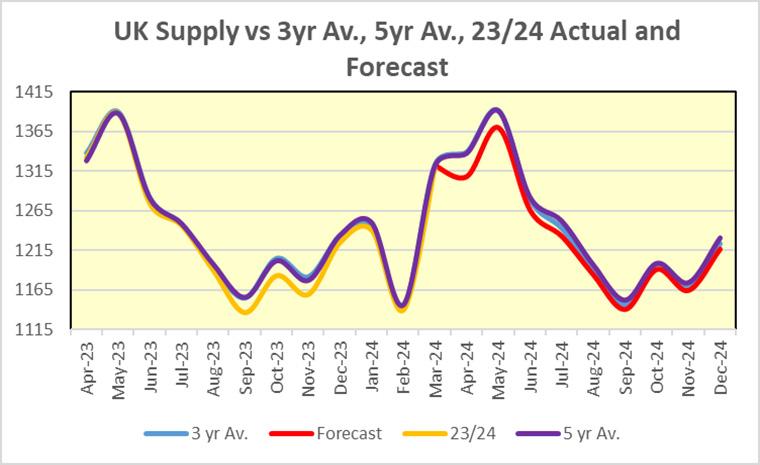
Source: The Dairy Group, Defra, AHDB
Our latest estimate for cost of production for 2023-24 is around 42ppl (-3.4% on the previous year), with a 10% reduction in variable costs (mostly feed) being offset by the 5% rise in Fixed Costs. The weighted rolling Farmgate price has finished the year at an average of 37.3ppl, 4.9ppl (-11.6%) below the cost of production. Livestock sales will make up some of that deficit, but the bottom line is that current milk prices are not sustainable. It is time for dairy markets to wake up and smell the coffee!
Dairy Emissions Manager is the carbon footprint module in MCi. This is a unique web-based tool that utilises dairy herd performance data i.e. herd & production details and feed inputs and resources such as land use, fertiliser, fuel, electricity, plastic and bedding. These are recorded monthly to allow emissions to be reported for any time period. Data collection is flexible either via web entry, via an APP or via a bureau service. Being able to input resources in ‘real time’ allows ongoing benchmarking so producers can monitor emissions and react in a timely manner rather than waiting for a historic year-end report to be produced some months later.
Tom Kimber has achieved an impressive reduction in dairy emissions over the last 3 years. Tom farms in partnership with his parents at Higher Stavordale Farm near Wincanton. The business manages 146 hectares of land with 108 ha of grass and 28 ha of forage maize. This supports a dairy herd of 200 cows (predominately Holstein Friesian with around 20 Dairy Shorthorn) and youngstock. Milk is sold to Barbers and through the family’s farm shop which is also the outlet for most of the dairy-born beef calves, reared and finished on the farm.
Although an annual carbon audit is a requirement of the milk buyer, it is rather historic and Tom sees more value in monthly recording the
Comment section is sponsored by Compound Feed Engineering
data and monitoring the farm’s performance. He says ‘Carbon is a good indication of a farm’s efficiency, so this is a good tool for benchmarking our performance to improve profitability. We are about optimising output, aiming to utilise grazed grass and forage to achieve around 4,000 litres from forage, but so many other resources have an impact on carbon emissions. I use Dairy Emissions Manager to provide a quick and easy way for regularly recording and reporting my dairy emissions. Being integrated into the monthly costings make it very convenient. We can run reports monthly to track my carbon footprint in real time and I work with my consultant to make informed decisions on the effect of resource inputs and output levels. I can also benchmark my resources and identify areas to target which has been extremely helpful.”
Tom has been working with my colleague Richard Lane for almost a decade, initially for nutrition advice and dairy herd costings. In 2017, discussions rapidly broadened into a greater herd focus when more analysis was put on fertility and health which highlighted challenges. Areas of weakness were identified, and a plan of action implemented. Richard was awarded a Trehane Trust Fellowship in April 2021 to produce a report ‘A roadmap for achieving Net Zero in dairy farming practically and profitably’ This work has helped the farm to understand strategies to reduce carbon emissions while increasing profitability as development of Dairy Emissions Manager.
Tom has been recording resources in MCi for over good records it has been possible to backdate carbon calculations with confidence. Since the first year of recording (ending October 2019) carbon was 1.45kg CO2-e per kg ECM, the farm has reduced that figure to 1.23 CO2-e per kg ECM for the dairy unit. Richard says, “Multiple actions have resulted in the reduction and we anticipate reducing to below 1 kg CO2-e with the changes and investments that have already made” Tom comments “We are confident we are on the right track can use Emissions Manager to track our progress towards Net Zero.”
The team have worked on reducing diet protein levels. Richard says “Meeting metabolisable protein requirement is the key, not crude protein %. This winter’s diets have to 16% with good results”. Legumes have grass leys which has boosted silage protein levels, reducing the protein supplementation required.
The introduction of clover into leys with the aim of increasing supply from legumes has led to a review of crop nutrition and subsequently, the amount of artificial nitrogen fertiliser has been reduced. The farm is assessing options to store and use slurry more effectively in the future, using umbilical and trailing shoe applications, thereby further reducing artificial fertiliser and carbon losses.
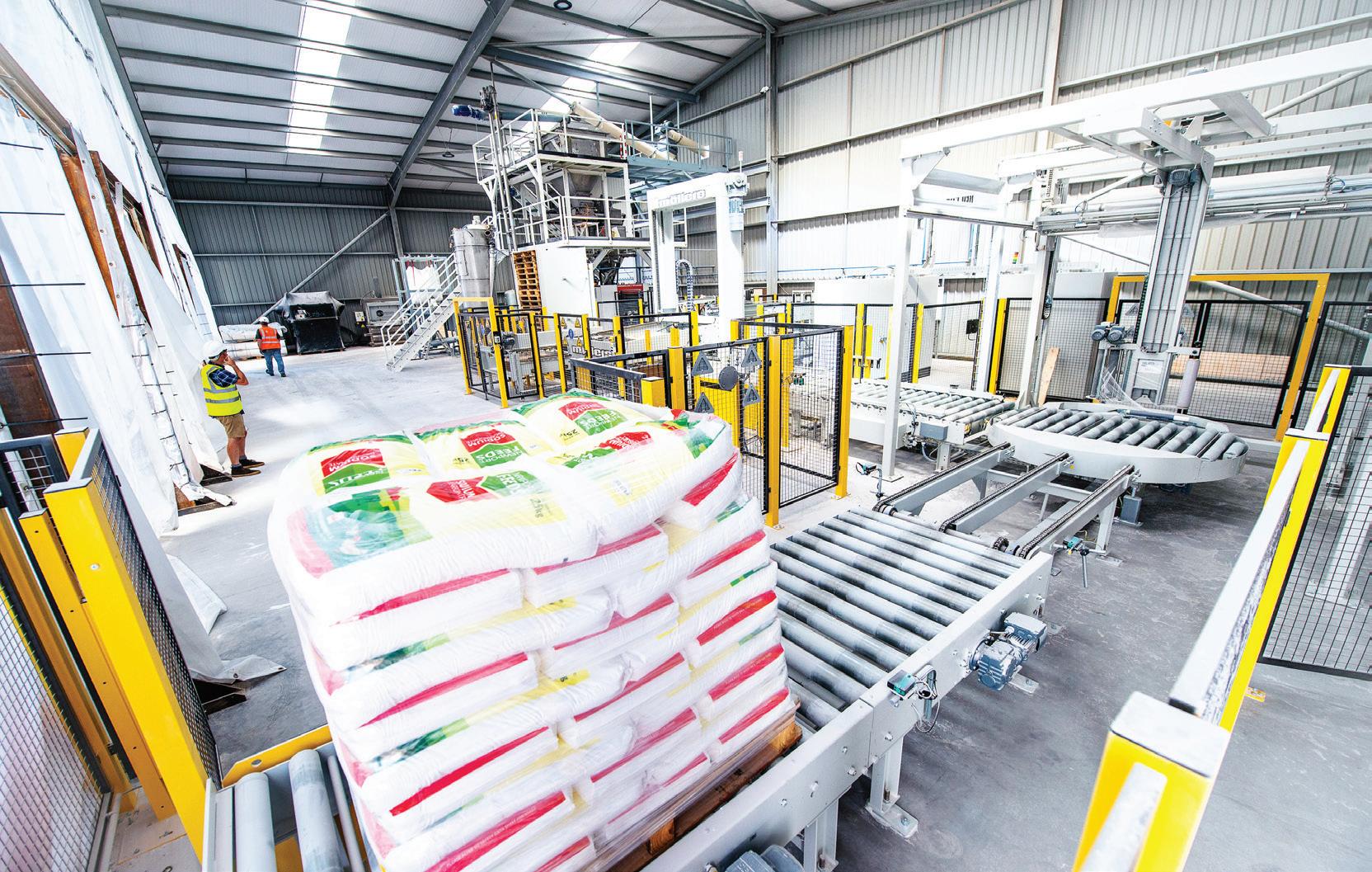
Following maize harvest, a grass cover crop is established which has proved successful in reducing nutrient losses and enabling zero grazing or an early silage cut before returning to maize. Multi-species leys are being planted across the grazing platform to increase nitrogen fixation from legumes and sequester carbon deeper into soils. Tom says, ’We hope deeper rooting will also help improve soil structure and mitigate some of the effects of climate change’.


My latest book (reviewed by Andrew Mounsey in this issue) was published in April and is already selling well. I’m getting invitations to speak at literary festivals, and press reviews have so far been positive. All this good news has prompted me to flirt with the thought that this book could, like Raynor Winn’s The Salt Path, become an unexpected success.
Winn’s book charted her and her husband Moth’s walk around the Cornish coastline, as they came to terms with his terminal illness, and the loss of their home as the result of a bad business decision. The book’s success put the couple back on their feet both spiritually and as sales grew, financially too. Could my book follow a similar trajectory, and how would I respond if it did?
These thoughts prompted me to remember the story of Michael Carroll, a Norfolk dustman who won more than £9m on the national lottery, and after giving his mother and sister £1m each, blew the lot on cars, drugs, parties and high living. After just eight years, he was back in his old job, emptying people’s bins. This was a very different response. How would you handle a huge windfall? Here are 10 ways you might deal with unexpected success.
1. Be surprised – Rather like buying lottery tickets, if you’re aiming for great success it is unlikely to happen. You have to feel driven to do what you do by something other than the hope of generating wealth. My book was the realisation of a long held ambition, and Raynor Winn’s her way of making sense of personal disaster.
2. Remain objective – So you’ve had a windfall. Remember it’s unlikely to happen again, so don’t start living beyond your means. Reduce your debts, for example, clear your mortgage, have a nice holiday and then take investment advice. Remember that putting money into your pension is both tax efficient, and can make old age more tolerable.
3. Don’t shout about it – The world is full of people who will make plausible arguments to get their hands on your money. Some will be seeking investment in a venture of their own, others seeking charitable donation or philanthropy, and some, sadly will be crooks. It’s good to become charitable, but this is almost always best done via an intermediary such as a community foundation, that knows the local third sector landscape.
4. Don’t rush – If you have a sales role, you’ll know that one of the best ways to get commitment is to create a sense of urgency or scarcity. Nothing is so urgent that you need to jump in quickly to avoid missing out. There’ll almost always be another opportunity that comes along later, that will allow you time to think, reflect and take advice.
5. Avoid addiction – I inherited my late father’s addictive nature. His weaknesses were whisky and cigarettes, mine are exercise and work. But because I know the dangers of addiction, I’m always careful. Others might be less well equipped to deal with temptation, and when you suddenly find you can afford things you previously could not, you can quickly become addicted. Expensive watches seem to be one of the most popular addictions among those unaccustomed to wealth.
6. Create legacy – A friend once said that the only two ways to be remembered were to build a wall or plant a tree. Of course, the reality is that almost everyone is forgotten within three generations, and even if you can endow an art gallery, or can afford to do something similarly flamboyant, your name might not be above the door for as long as you’d like. Better to focus on making a small difference to many lives, because this will almost always be more rewarding.
7. Indulge your kids and parents – We all want to help our children establish themselves in the world, and our parents probably had a part to play in our success. You don’t want to go overboard, but do see what you can do to make the lives of those closest to you more comfortable.
8. Keep learning – I’d never have written my most recent book if I’d not invested a considerable sum in a full-time creative writing MA at the University of East Anglia. This was my first experience of university and it took my writing to another level. I was 64 when I started the course, which proved to me that you’re never too old to learn. If your unexpected success came from your work, then it makes sense to invest some of the gains in becoming even better at what you do.
9. Avoid gongs – I’ve known people go to great lengths to get themselves nominated for an OBE. New found success can encourage you to think that public recognition is important, but in reality, in the 21st century, few people are impressed by the letters you might have after your name.
10. Enjoy the moment – It’s not every day that you enjoy unexpected success, so allow yourself to enjoy the moment and celebrate your achievement. It’s all too easy to persuade ourselves that we are undeserving and even easier to become fearful that everyone is trying to take advantage of your good fortune. Remember that while there will always be bad people, most are genuine and will be pleased that you’re doing well. Life, after all, is all about people.
As I write this month’s column, I pause to check my book’s ranking on Amazon, out of the 3m titles they stock. It continues to sell well, and I heard yesterday that one major distributor had run out of copies and ordered more. However, checking how the book is doing every five minutes won’t influence its success. That depends on the quality of the writing, my publisher’s ability to get the book reviewed in the press, and of course how enthusiastically readers recommend it to their friends. It’s time now for me to start researching my next book, and stop worrying about this one!
Comment section is sponsored by
To
- Ryan Daly, Operations Director
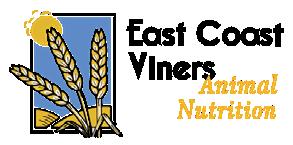

Single platform
Multi location
Full
Order processing
Purchase contracts
Grain intake & processing
Weighbridge operations
Formulations & labelling
Data analytics

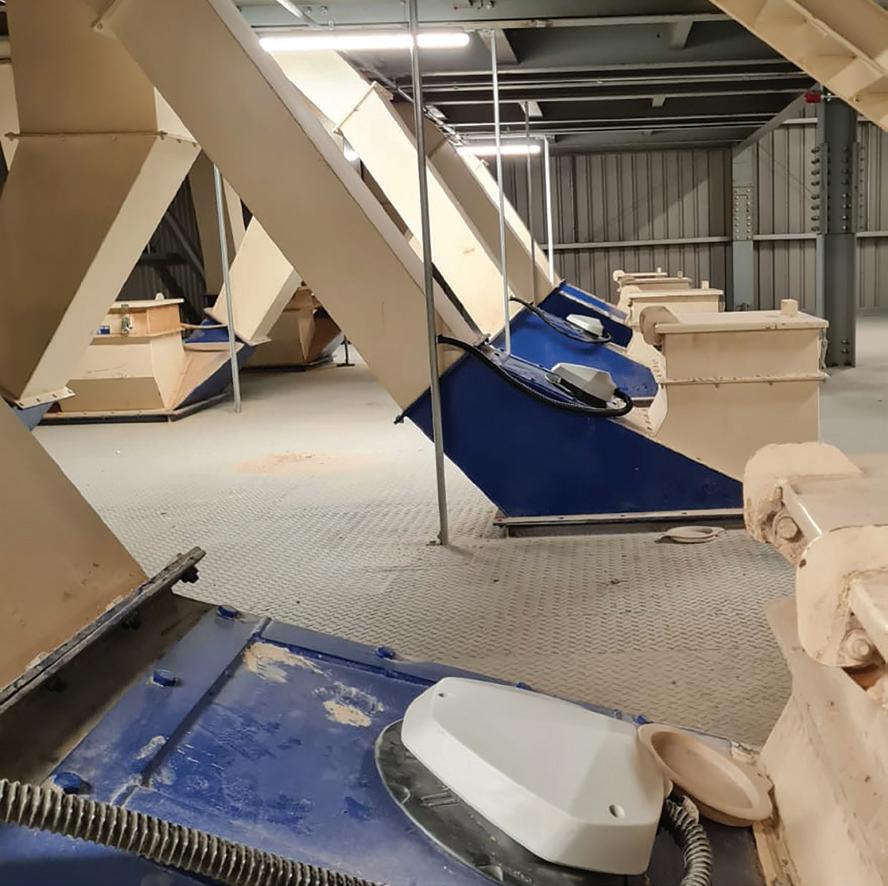

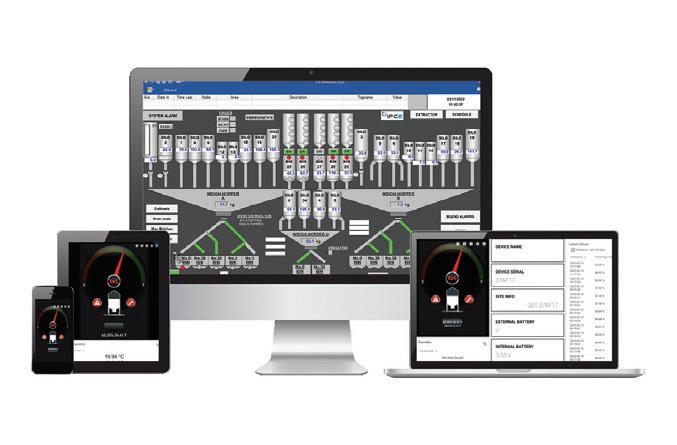
Ireland’s Minister for Agriculture, Food and the Marine, Mr. Charlie McConalogue, met recently with members of the Irish Grain Growers Group to listen to their concerns and the current challenges being experienced by tillage farmers.
Commenting after the meeting, Minister McConalogue said: “I was glad of the opportunity to meet with representatives of the Irish Grain Growers Group today and to listen to their concerns. The exceptional weather conditions at the back end of 2023 and into this year has resulted in significant challenges for tillage farmers throughout the country. Thankfully, there has been some return to spring work on tillage farms in the last two weeks with the improvement in weather conditions.”
The minister acknowledged the particular impact of the recent wet weather and the delay in getting spring crops planted. He continued:
“With later spring sowing than normal and the risks associated for farmers, I recently announced that I will work to deliver €100/ha in financial support for crops planted for the 2024 harvest to give confidence to growers to plant crops this year, and to give them confidence in the future of their industry”
The minister acknowledged the difficult year last year for tillage farmers and outlined the additional supports that were provided to the sector in 2023. These additional supports included a top-up of €3m for Protein Aid bringing the total budget to €10m. The Straw Incorporation Measure provided €16.5 million and the Tillage Incentive Scheme provided €8.3 million to growers in 2023.
The €7.147m secured from the EU Agricultural Reserve was topped up with a further €7.147m in State funding.
These funds were used to support growers with un-harvested crops by way of an ‘Un-harvested Crop Support Scheme’ with the remaining funds being used as a once-off flat rate payment on the area of oilseed rape and cereal crops.
In March of this year, the minister also announced an exemption to the crop diversification element of GAEC 7, easing concerns for tillage farmers by allowing them to pick the crops that best suit their circumstances, taking account of the time of sowing, market returns and seed availability.
Minister McConalogue emphasised the importance of a vibrant and sustainable tillage sector in increasing Ireland’s food and feed security while also contributing to climate change objectives. Ireland’s Climate Action Plan 2023 sets out a target to increase the area under tillage to 400,000ha by 2030 as part of agriculture’s commitment to reduce emissions by 25%.
Minister McConalogue concluded: “The tillage sector is an important and integral component of the Agri-food industry and is a sector that I want to see grow and develop. That is why I established the Food Vision Tillage Group in May 2023 to set out a road map for the sustainable growth and development of the sector to 400,000ha by 2030. I recently received the final report from the Group, and I am considering its recommendations.”
Ten years of the Food Fortress programme have delivered an unmatched level of security for the farming and food chain across the island of Ireland, where the production of compound animal feed is concerned.
This was one of the key messages delivered by Food Fortress Director, Robin Irvine, courtesy of his recent presentation to members of the Guild of Agricultural Journalists of Ireland.
He went on to outline significant changes to the governance of the network.
“Originally set up as a partnership between the Grain Trade Association and the Institute of Global Food Security at Queens University we are pleased to announce that the Food Fortress network has now been established as an independent stand-alone business owned and directed by its members - and with a newly appointed board representative of the whole island and both feed importers and compound feed mills.
“Our membership comprises 82 companies and 8 million tonnes of feed production with all of Northern Ireland’s compound production covered - with the comparable figure for the Republic of Ireland around 70% and growing.”
Robin Irvine continued: “We are rapidly moving towards fulfilling the original vision of delivering a testing programme that comprehensively reflects the activities of the entire feed compounding sector across the island.”
Food Fortress is a collaboration of businesses committed to improving the safety and security of the food chain but is also producing significant economic benefits for producers by promoting feed efficiency and hence the performance and profitability of livestock systems and is a major contributor to the reduction of emissions.
Courtesy of a comprehensive programme of strategic sampling and testing – both compound feeds and the raw materials contained within these rations – Food Fortress operates to reduce the risk from the principal contaminants which threaten this chain.
These anti-nutrients include mycotoxins, dioxins, heavy metals and pesticides.
According to Robin Irvine, the Food Fortress programme is the most advanced of its kind anywhere in the world and is supported by the Institute of Global Food Security at Queens University, Belfast.
He commented: “The network was originally formed in the wake of various feed incidents – including the Irish Dioxin crisis which caused significant damage to the reputation of our food sector.
The required lessons were quickly learnt and the result was a decision taken by Northern Ireland’s feed compounders, committing the industry to a comprehensive system of checks and state-of-the-art analysis, where all raw materials and compound feeds are concerned.
“This has evolved into the Food Fortress system that we have in place today. It has been fully operational for the past decade.
“All the raw material importers and feed compounders are contributing to a risk management system that is recognised as best in class the world over.”
Robin Irvine further explained. “The comprehensive analysis of raw materials and compound feeds takes place on a regular and ongoing basis.
“Key to making this happen is the total commitment of the feed compounding and raw material importing businesses that are involved.”
Taking this approach has allowed feed compounders to manage the risk, specifically where mycotoxin contamination threats in animal rations are concerned.
Looking ahead, Robin Irvine also predicted the introduction of tougher regulatory standards, where mycotoxin contamination levels in compound feeds are concerned.
“However, the very real, on-farm, challenge caused by mycotoxins when present at well below guideline limits must be actively addressed by the feed industry,” he said.

Irish Farmers’ Association (IFA) president, Francie Gorman, has highlighted the intense pressure now coming on Ireland’s tillage sector.
He made this comment while responding to recently published figures from Ireland’s Central Statistics’ Office (CSO) figures, confirming that cereal crop output fell by 20% last year.
In 2023, 2 million tonnes of wheat, barley and oats were produced in Ireland, down 500,000 tonnes on 2022. Potato production was down 12% last year.
“It further highlights the urgency of the Tillage Survival Scheme put forward by IFA. We raised this again with Taoiseach Simon Harris on a tillage farm in Kilkenny last week. No time can be lost in putting together a support package that provides some hope for the sector,” he said.
“Tillage farmers have faced a perfect storm since summer 2023, with falling grain prices; input costs remaining high; loss of rented land; and heavy rainfall in the period since,” Francie Gorman said.
“There is no question that our tillage sector is fighting for its very future. The Government says it wants to have more tillage production and this will only happen if they step up and support growers. What was announced recently by the Minister for Agriculture is inadequate,” he said.
IFA National Grain Chairman Kieran McEvoy said in light of the difficulties being experienced in the tillage sector, IFA has proposed in its Tillage Survival Scheme a € 250/ha, five-year payment for tillage farmers.
He added: “It is essential this funding is secured in 2024 to prevent a decimation of the national tillage area.”
Northern Ireland Grain Trade Association (NIGTA) president, Gary McIntyre, has confirmed the exceptional circumstances that have faced the organisation’s members over recent times.
“But as always, we have stepped up and faced these challenges head-on.”
McIntyre reflected on these matters courtesy of his presentation to NIGTA’s 2024 annual dinner.
He added: “We continue to see issues with the supply of grains and raw materials to our market.
“While the current fundamental outlook for supply looks adequate, we live in a world with the highest geo-political tensions seen in a long time.
“We see a European Commission proposal to implement a 95 EUR/T duty on grains and a 50% tariff on oilseeds and products imported from Russia and Belarus.
“Persistent wet weather in Europe continues to hamper spring plantings and is impacting crop development.”
The impact of the atrocious weather on agriculture over the past year was a theme that was reflected throughout the NIGTA president’s speech.
He said: “Twenty-nine days of rainfall in March were recorded in some areas of Ireland and so far, April has continued that trend.
“A further challenge for our industry is to navigate the proposed EU Deforestation Regulation, referred to as EUDR, due to commence on 30th December this year.
“Outside pressure on the EU is mounting to delay as most countries and suppliers are not prepared. However, the official EU stance is still as it was:
“EUDR is to be rolled out as planned and yet we are still no clearer about NI Divergence between EUDR and UKDR
“Every sector within our industry has faced its own unique challenges, but despite the difficult trading conditions, once again you have shown incredible flexibility, agility, and resilience.”
McIntyre continued: “The sustainability agenda remains a key priority for NIGTA, with mounting pressure coming from both policymakers and the marketplace.
“We are acutely aware of the challenges related to air, soil and water quality, and the risk that environmental targets could become our agri-food industry’s licence to operate.
“But we are also focused on the opportunities available within the animal feed and fertiliser sectors to help support our farming customers in reducing their environmental footprint to enhance the green credentials of Northern Ireland agri-food.”
According to McIntyre, NIGTA has been proactive in driving forward better nutrient use efficiency and developing precision nutrition and feeding strategies, by delivering professional advice at farm level, provided by the FAR accredited feed advisers.
“Nevertheless, widespread industry collaboration will be needed to help deliver the ambitious emission reductions required,” he further explained.
“Fortunately, within Northern Ireland, we have an excellent track record of the agri-food industry working together for the common good.”
The tillage clock is ticking for Minister McConalogue Ireland’s farm minister, Charlie McConalouge was handed the final report from the Food Vision Tillage Group three weeks ago. But still, we await his reply.
Surely he can’t be thinking that a few days of decent weather will keep the tillage farmers off his back while he dithers on how to best come through on promises previously made to a sector of Irish agriculture that has been put through the ringer since the last CAP deal was foisted upon it.
Please note that the previous sentence makes no reference at all to the impact of the atrocious weather that has engulfed the country as a whole over the past twelve months.
The Tillage Vision Group was established to address the strategic challenges and opportunities that now confront those Irish farmers who grow crops for a living.
All of this is set against a clear backdrop of two fundamental issues. The first is government’s own recognition of the fundamental role that tillage can play in lowering the carbon footprint of agriculture as a whole.
So much so, in fact, that the national response to climate change targets include a commitment to expand the tillage footprint to 400,000ha. This figure represents a 25% increase, relative to current planting levels.
The other fundamental for tillage farmers goes back to the outworking of the last Common Agricultural Policy (CAP) deal agreed for Ireland.
And this is unfinished business. Tillage farmers believe they were unfairly treated when it came to the most recent allocation of CAP support budgets. And they want Minister McConalgue to rectify this matter courtesy of his response to the Tillage Vision Group report.
And they are absolutely right in expecting an appropriate response from government in this regard.
The last 12 months and more have seen tillage farmers being unable to compete for conacre ground because the current finances of their businesses are on such an unstable footing.
This is all about the creation of a level playing field for all the land based sectors.
And Charlie McConalgue is duty bound to meet this fundamental requirement.
To his credit, the minister has repeatedly asserted that he remains committed to meeting the needs of tillage farmers and has continued to espouse the principles associated with the projected growth in Ireland’s cropping area.
Now he has a chance to put some meat on the bones, where the delivery of these previously made pledges is concerned.
And let’s hope that he delivers his response to the Vision Report at an event attended by key stakeholders within the tillage sector.
Simply issuing a press statement late on a Friday evening wouldn’t really cut the mustard.

The main reason for incorporating enzymes into rations is to improve digestibility and help the animal get more nutrients from the feed provided. To find out more about the role of enzymes in monogastric diets and the factors to consider before including them within formulations, we spoke to Elanco’s nutritional advisor Alex Sly.
What role do enzymes play in pig and poultry diets?
Enzymes are incorporated into poultry diets to enhance the breakdown of less digestible components, making nutrients more readily available for absorption. This increased digestibility not only boosts productivity and feed efficiency but also minimises environmental impacts through reduced waste output.
In addition, enzymes play a crucial role in mitigating the negative effects of antinutritional factors, naturally occurring compounds found in certain feed ingredients that impede nutrient absorption. These factors can bind essential minerals, inhibit digestive enzymes, and disrupt intestinal integrity, compromising animal growth, productivity, and overall health.
Dietary enzymes can also prove beneficial in preventing feed induced immune responses (FIIR) such as those associated with ß-mannans, a polysaccharide found in plant-based feed ingredients. Here, the animal’s immune system mistakes β-mannans for invading pathogens such as bacteria, or viruses due to their pathogen associated molecular pattern (PAMP). This activates the immune system for no reason, which wastes energy and causes inflammation in the gut, negatively impacting performance.
When formulating rations, how do you prioritise which enzymes to include?
Selecting enzymes requires consideration of several factors including the specifics of the diet, target animal and age, as well as the type and quality of raw materials used, as these can vary seasonally or change depending on supplier.
In general, we tend to use enzymes to remove antinutrients, enhance nutrient availability and improve digestibility of feed. These benefits are especially important when the quality of raw materials available is poor or highly variable, and when formulators are under pressure with high raw material prices.
Budget availability and the cost-benefit analysis of using a particular enzyme, both in terms of dietary inclusion and potential benefit to the animal are also key considerations.
Further considerations when selecting enzymes include:
Enzymes must possess certain characteristics to consistently maintain high activity levels during feed processing and within the animal.
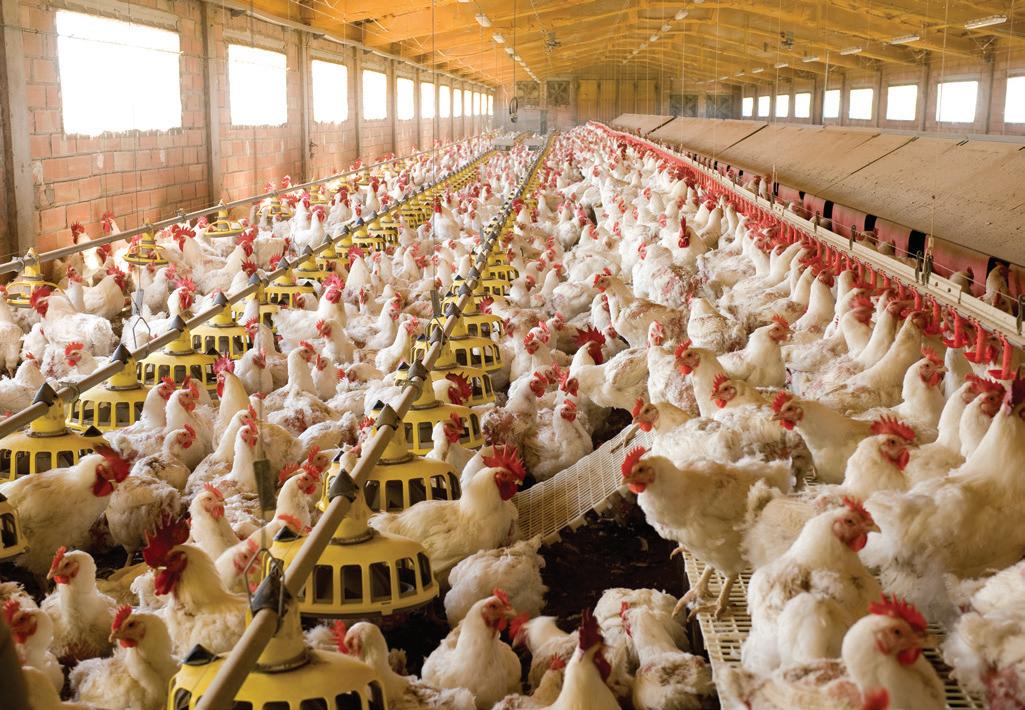
Feed production involves thermal processing which can denature enzymes, reducing their efficacy or inactivating them completely. Thermostable enzymes maintain their activity throughout processing and resist inactivation during storage, guaranteeing their concentration in the final feed.
The effectiveness of enzymes in animal diets is closely linked to varying pH levels encountered throughout the digestive tract. Each enzyme operates optimally within a specific pH range, with deviations outside this range potentially slowing enzymatic activity or in extreme cases, leading to its inactivation.
An enzyme’s optimal pH range needs to align with the site in the animal’s gastrointestinal tract where its benefits are maximised, taking into account the transit times of feed within the digestive system.
For example, ß-mannanase enzymes hydrolyse large ß-mannans into smaller, non-immunologically active fragments through numerous hydrolysis cycles. To do this effectively they need to have an optimum pH that is alkaline, which maximises enzyme activity and retention time in the small intestine.
Enzymes also need to have a natural resistance to digestive enzymes (pepsin, trypsin and chymotrypsin) present in the gastrointestinal tract of animals which can degrade enzymes supplemented in feed before they can be effective.
What are the most common enzymes included in monogastric rations and why?
We tend to see four major enzyme classes used in monogastric diets. Phytases improve phosphorus and calcium availability in the diet, contributing to better skeletal development, eggshell quality and decreasing phosphorus excretion.
Non-starch polysaccharide (NSP) enzymes (xylanases and beta-glucanases) target fibre-rich ingredients to unlock additional dietary energy and reduce digesta viscosity. Proteases aid in protein digestion and have the potential to reduce feed costs.
Another unique enzyme is ß-mannanase which breaks down ß-mannans, immunogenic compounds found in feed that provoke a strong and wasteful innate immune response. Through their unique energy sparing mechanism, these enzymes have a positive effect on gut health and improve energy efficiency.

When would you tend to use an energy sparing feed enzyme like β -mannanase?
Diets containing over 12% plant-based raw materials (soya, sunflower, wheat) are prone to high levels of β -mannans. Incorporating an enzyme like Hemicell™ XT mitigates this risk, preventing a feed-induced immune response (FIIR) and improving feed efficiency.
The cost saving of preventing a FIIR will depend on the feed price, raw material present in the diet and by how much you can lower the energy density of the diet. As a guide, we know that a FIIR can waste 3% of the energy – this equates to a 3% reduction in performance.
“A lifecycle assessment analysis has shown that including Hemicell XT in pig and poultry diets leads to a reduction in carbon footprint between 2.7% to 3.3% for broilers and 1.1% and 4.4% for pigs.”
The improved feed utilisation delivered by Hemicell XT allows producers to reduce ration energy levels by up to 90 kcal/kg ME, which equates to a customer cost saving of £11 to £15 per tonne (dependent on diet and feed price).
What role can enzymes play in improving sustainability?
Enzymes play a significant role in promoting sustainability, including improving resource efficiency, by allowing animals to extract more nutrients from the same amount of feed, leading to less land and water usage for feed production and reducing the amount of undigested nutrients that end up in animal waste. Depending on the enzyme itself, they can also reduce the carbon footprint of diets.
All retailers have committed to reducing their carbon footprint, which may mean a 20 to 30% reduction in the CO2 equivalent in the products being produced on farm over the next five to ten years.
To achieve this there will need to be a series of incremental improvements, and with compound feed making up 70% of broiler and pig diets, this is one area where improvements are going to have to be made. Enzymes can play a role in these incremental improvements.
A lifecycle assessment analysis has shown that including Hemicell XT in pig and poultry diets leads to a reduction in carbon footprint between 2.7% to 3.3% for broilers and 1.1% and 4.4% for pigs, depending on the formulation and source of the ingredients.
When it comes to the big picture of improving carbon footprints, a 3% reduction in the footprint of compound feed, which is 70% of the overall footprint, means a 2% reduction in the footprint of the final product. This 2% is a significant part of the 25% reduction the producer may need to reach for his retailer.
In conclusion, selecting enzymes for animal feed requires a comprehensive understanding of the animal’s dietary needs, the quality of raw materials, and the unique properties of the enzymes. The primary objective is to choose enzymes that yield tangible benefits for both the animal and the producer. A strategic selection of enzymes can enhance feed efficiency, optimise animal performance, and foster sustainable production practices.

1.1-4.2%*1
2.7-3.3%*1 in swine in broilers

• Retailers have committed to a reduction in their carbon footprint/net zero – this may mean 20 to 30% reduction in the CO2 equivalent in the product they receive over the next 5 to 10 years.
To achieve this, a series of incremental improvements is needed. Hemicell™ is one such improvement.
• A 3% reduction in the footprint of compound feed, which is 70% of the footprint, means a 2% reduction in the final product
• 2% is a significant part of the 25% reduction the producer may need to reach for his retailer customer.

*Depending on geography and growth phase scenario. These improvements are very sensitive to the ingredient composition of the feeds and assumptions taken, especially regarding Land Use Change (LUC). The change in the carbon footprint of the diet with Hemicell™ included is therefore variable. However, depending on the customer. Hemicell™’s use allowing calorie removal, has the potential to contribute significantly to the carbon footprint reduction of poultry and swine meat products. 1. Blonk consultants. (2023) A lifecycle assessment (LCA) of both Hemicell production and the comparative performance of feeds containing it. Data available upon request. Int ref no.23491. Hemicell, Elanco and the diagonal bar logo are trademarks of Elanco or its affiliates. ©2024 Elanco or its affiliates. Date of prep: May 2024. PM-UK-24-0276. Use medicines responsibly. www.noah.co.uk/responsible.
In the dynamic landscape of the global pork value chain, downstream influencers such as consumers and retailers play a pivotal role in setting the trajectory for upstream participants. Consumer preferences are increasingly shaped by seven overarching global trends, spanning transparency, sustainability, plant-based alternatives, omnichannel distribution, health-centric choices, and affordability. Against the backdrop of a burgeoning global population projected to reach 9-10 billion by 2050, the imperative to boost animal protein supply by 60% presents formidable challenges in land utilization. Notably, Europe stands out with a strong commitment to sustainability, evident in initiatives like the EU Green Deal and the 2030 Farm to Fork strategy, reshaping the agricultural paradigm. Within this context, the swine industry is undergoing a transformation, with companies aligning with Science Based Targets (SBT) initiatives, aiming for emission reductions and broader sustainability objectives in the medium to long term.
Swine feed accounts for as much as 62% of the carbon footprint of a kilogram of pork. The major contributors to this are conventional cereal and oilseed ingredients (corn, wheat, barley and especially soybean meal) as shown in Figure 1. Therefore, feeding pigs with
a lower carbon footprint diet will already have an impact on a swine producer’s environmental footprint.
Soybean meal commonly used as a protein source for pigs can have a substantial environmental impact based on where it originates from. Soybean meal from Latin America for instance, has a very high carbon footprint due to the impact of land use. So much so that new legislation will require soy or soy products being sold in the European market to demonstrate proof of origin from non-deforested land by the end of 2024.
Therefore, one of the strategies that can be adopted to reduce the carbon footprint of feed is to reduce reliance on soy-based protein from deforested land but also reduce the need for soy overall. Lowering the crude protein content of feed and meeting the amino acid requirements of the animal by using synthetic amino acids where cost-efficient, not only negates the need for so much protein meal but also reduces the nitrogen emissions from the system. In addition, incorporating protein from other non-human edible, locally sourced raw materials such as sunflower, rapeseed meal, field peas, etc. and/or non-traditional raw materials such as insect meal and algae protein will potentially reduce the environmental impact of pig feed.
Commercial pig diets are becoming more diverse as a result. The incorporation of alternative raw materials brings some additional complexity in the form of more fibre, indigestible protein, mycotoxins,
Figure 1. Percentage contribution of each ingredient to the total estimated carbon footprint (expressed as CO2 equivalents per kilogram of feed) of a typical grower and finisher pig diet in Benelux (Source: dsm-firmenich).

and anti-nutrients that all need to be considered. Producers can make use of NIR technology to understand how much nutrients such as energy, phosphorus and amino acids can be extracted by using tailored feed enzyme solutions. Screening for mycotoxins provides a clear understanding of feed quality and potential risks to animals that can be mitigated through an effective mycotoxin risk management solution.
To facilitate the transition towards more sustainable swine production, a comprehensive approach is needed to manage all aspects of the production system from the feed to animal performance and the management of the manure. Clearly, this approach will require a collaborative ecosystem of stakeholders including feed manufacturers, additive suppliers, experts on manure management, veterinarians, nutritionists, and retailers to name a few from all across the value chain all working together to achieve this goal. Producers must also have effective means to measure their environmental footprint in the first place.
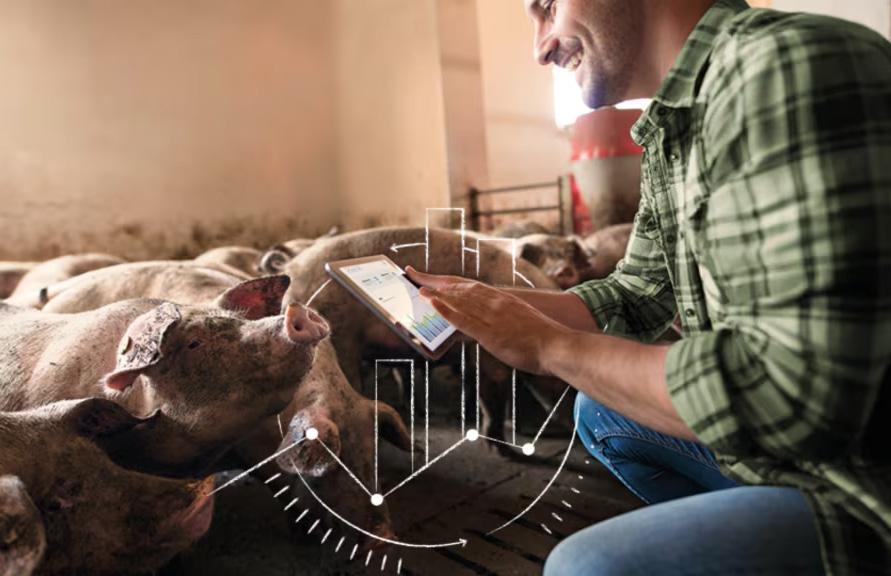
Clear steps towards a sustainable swine production dsm-firmenich Animal Nutrition & Health experts work closely with you to shape a strong future for your business following a stepwise approach.
1. Start with a thorough assessment of your operations, creating a roadmap to turn challenges into opportunities with tools like Sustell™. It allows for a precise and credible calculation of feed and farm environmental footprint unlocking sustainability’s value, providing practical, science-based solutions for your business goals.
2. Set the sustainability targets for your operations.
3. Assess available strategies, selecting those with the optimal economic and environmental impact.
4. Pilot, implement, measure and adjust.
Given that feed is responsible for over 60% of a pig farm’s carbon footprint, nutritional strategies can play an important role in reducing it. Because each farm is different, the baseline starting point of each farm is also different. Once that baseline is established, a variety of strategies can be applied to improve efficiency and reduce the environmental footprint.
Figure 2 illustrates how diet reformulation to meet animal requirements, improving the digestibility of raw materials, enhancing gastrointestinal functionality and productivity improvement can be combined to achieve a 15% reduction in the footprint of a swine fattening system.
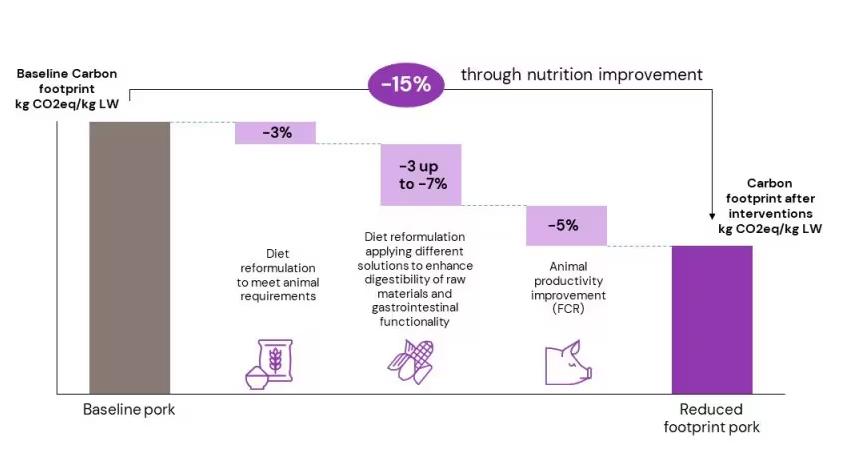
Figure 2. Measurement and nutritional strategies reduce the environmental footprint of pork (Source: Based on dsm-firmenich data in 2023 for selected solutions, according to FAO LEAP Guidelines and ISO standards).
In response to global demands for sustainable pork production, the swine industry is adapting to address environmental concerns. Key strategies include reducing reliance on high-carbon soy-based feed, incorporating alternative raw materials, and fostering a collaborative ecosystem across the value chain. dsm-firmenich plays a proactive role, leveraging its new intelligent sustainability service Sustell™ for precise and credible calculation of feed and farm environmental footprint.
An approach utilizing feed enzymes, mycotoxin risk management, and innovative ingredients like VevoVitallTM, will help producers save costs, and get the most value from locally sourced raw materials while reducing environmental emissions, all without ever compromising on performance.
Article previously published on DSM Feed Talks

Dr. Maria Walsh - Global Swine
Marketing Director, dsm-firmenich
Animal Nutrition & Health
Maria Walsh is the Global Swine
Marketing Director in dsm-firmenich
Animal Nutrition & Health. Maria is an Irish national with a PhD in Animal Science from Purdue University in West Lafayette, Indiana, USA. She has more than 15 years of experience as a scientist and researcher. She joined dsm-firmenich in 2018 as a Senior Scientist, and has managed the swine innovation pipeline for the Animal Nutrition & Health business, including new product development and application solutions from ideation to commercialization.
Copper (Cu) is an essential element to all living beings as it plays an important role in many biological processes. For this reason, it has to be supplemented in the diet in order to cover animal’s requirements. However, Cu is also a non-renewable resource, and some estimates of world reserves indicated that Cu scarcity may occur in the next 20–30 years. Furthermore, when excreted into the environment, it may impose a medium- or long-term toxicity risk to plants and micro-organisms.
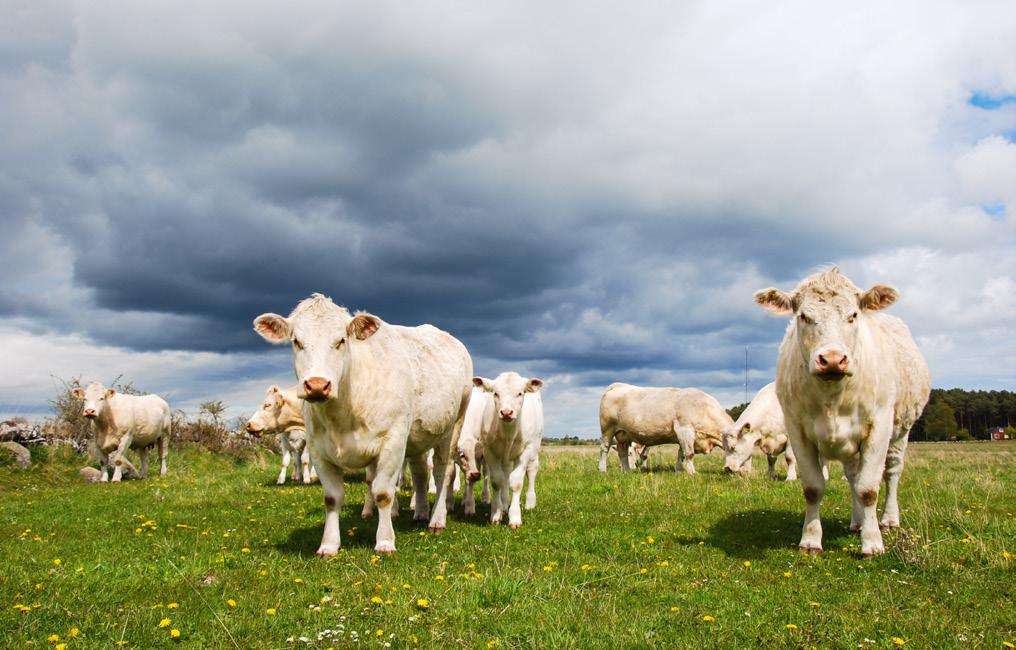
Copper serves as a co-factor of several important enzymes, including lysyl-oxidase, tyrosinase, and cytochrome c oxidase. These enzymes are essential for the synthesis of erythrocytes, myelin, keratin and collagen, as well as for supporting effective immune and anti-oxidant responses. Unlike monogastric animals, ruminants exhibit poor homeostatic control of Cu levels. Ensuring adequate Cu supplementation in ruminants is challenging for nutritionists due to the complexity of Cu metabolism and the very small margin between deficiency and toxicity. Copper deficiency occurs due to either a primary or a secondary deficiency. The primary deficiency is mainly associated with low Cu diets (<4 ppm), while the secondary deficiency happens even at the adequate
level of Cu supplementation due to the three-way interaction between Cu, molybdenum and sulfur (Cu-Mo-S) in the rumen. To guarantee Cu absorption regardless of the presence of antagonists, there is a tendency to supplement Cu above nutritional requirements. The narrow margin between the copper physiological needs and the copper concentrations at which toxic effects can occur makes the establishment of a maximum tolerable level in ruminants a difficult task.
The use of Cu in ruminant nutrition, and in livestock in general, as a dietary supplement contributes to the overall environmental exposure of this element. Copper intake by ruminants is almost entirely excreted in the manure, which is spread on arable land and grassland as part of normal farming practices. Copper is mainly eliminated via the faecal tract, with most of it represented by dietary Cu that has not been absorbed, along with a small amount of Cu from cell desquamation. In addition, Cu is eliminated via the biliary route, and to a lesser extent via urinary and mammary tracts. In adult ruminants, only 2-10% of dietary Cu is absorbed, leaving 90-98% of dietary Cu in the faeces.
In this context, feed manipulations are an area where Cu can be improved. To know the contribution of Cu reduction in the feed, a simulation was performed by EFSA (2016) for dairy cows and cattle for fattening, based on the average EU feed production for each category and the current Cu level supplemented in the feed (Table 1).
According to the simulations, a reduction in 5 mg/kg in the Cu supplemented (14% in Cu supplementation) can save 113 tonnes of Cu in the dairy cow feed per year. This means that tonnes of a nonrenewable resource can be saved thanks to this small adjustment. If we go further in the simulations, other scenarios could be explored, with reductions of 28% in Cu supplementation (which means a reduction of 10 mg/kg in Cu supplementation).
Data from the Scientific Opinion of EFSA on copper content in complete feed (2016).
How the Cu source can help with decarbonization?
All the Cu sources emit CO2 to the environment during the extraction, processing and transport. The primary melting process used to extract Cu from its ore involves the combustion of fossil fuels, such as coal and oil, to generate the high heat required for smelting and refining.
However, not all the Cu sources emit the same amount of CO2 Emissions depend on the energy required for the extraction process and the final concentration of the product. For example, 1 kg of Cu from CuSO4 emits 8.82 kg of CO2, whereas the same quantity of Cu from the Animine Cu source (CoRouge®) emits only 3.30 kg of CO2
Taking into account the current Cu overdosage in European dairy farms, and following the proposal of the previous simulation where Cu supplementation was reduced by 28%, another simulation has been made to assess the reduction in CO2 emissions resulting from a similar decrease in Cu supplementation (Figure 2).
This simulation was done for a dairy farm with 100 cows and an average dry matter intake of 18 kg. By reducing Cu supplementation from 20 ppm with CuSO4 to 14.4 ppm with CoRouge® (28% less Cu), this farm would reduce in one year the CO2 emission from 116 kg to 31 kg, meaning 73% less CO2
Conclusions:
Over-supplementing Cu in feed leads to the excretion of this nonrenewable source into the soils and the environment. Aside

Figure 2. Copper supplementation level (ppm, grey bars) and amount of CO2 emitted to the environment (red line).
from CO2 emission, the extraction of raw Cu is causing damage to surrounding ecosystems as well as marine pollution from the mining operations, but also significant land and water use. The reduction of dietary Cu to cope with the requirements is one of the most effective ways towards the sustainability of Cu use in animal nutrition. With the right Cu dosage and with a more bioavailable source, it is possible today to maintain animal performances and to reduce CO2 emission as well as the total amount of Cu excreted into the soils.
Applications are now open for the Edgar Pye Scholarship 2024. The Edgar Pye Research Scholarship Trust was founded following the untimely death of R. Edgar Pye in July 1989, President of the Society of Feed Technologists, to perpetuate his memory by offering research scholarships relating to the animal feed industry.
The Trust welcomes applications from anyone studying agriculture or a related subject, or who is already employed in the Animal Feed Industry in the UK or Ireland, and is resident in the United Kingdom or the Republic of Ireland.
The award will be given to the applicant, who, in the opinion of the panel of judges, has most capably:
• Identified an area of research relevant to the UK and Irish Compound Feed Industry in the
• forthcoming five years
• Prepared a programme thoroughly, including sources of information
• Provided a realistic budget for the costs of the project
• Presented the proposals clearly and according to the rules
In 2023, an award of £2000 was given to one applicant for the project: Identifying optimal ratios of porcine milk oligosaccharides for supplemental use in enhancing gut health and pre-weaning survival using an in vitro piglet hindgut model.
In addition to the monetary award, successful applicants receive early
exposure to the feed industry with enhanced employment opportunities and actively contribute to developments in the animal feed industry.
John Dunne, David Wilde, Richard Remmer and Dr. Jules TaylorPickard have been appointed judges for 2024. The judges are at liberty to seek specialist assistance as required.
The closing date for submissions is 31st October 2024 and applications should be sent to secretary@sft.uk.com. Applications should be typewritten, double-spaced, not exceeding 5,000 words and single sided on A4 paper. The proposed research must be within the broad subject areas of farm animal feeding including animal nutrition, management, welfare, feed production and marketing. Please ask if uncertain.
The Society of Feed Technologists undertakes the management of the Trust and the Research Scholarship. The activities of the Trust are financed from a modest investment fund and the generosity of sponsors without whom the award levels would not be possible.
The Trust gratefully acknowledges the support in 2023 of Premier Nutrition, DSM, Devenish, John Long, Trouw Nutrition, Zinpro and De Lacy. To download the full information pack please scan the QR code below.


As innovators in nutrition, health, and beauty, dsmfirmenich reinvents, manufactures, and combines vital nutrients, flavours, and fragrances for the world’s growing population to thrive. With our comprehensive range of solutions, with natural and renewable ingredients and renowned science and technology capabilities, we work to create what is essential for life, desirable for consumers, and more sustainable for the planet.
As dsm-firmenich, we know that as the world’s population grows, demand for animal protein will continue to rise. By harnessing our smart science, innovation capabilities, and working in partnership with our customers, we’re transitioning the industry to a more sustainable animal farming future.
At Animal Nutrition & Health, we offer our customers a true end-to-end portfolio. This includes essential products that are fundamental for the production of healthy, sustainable animal protein. Performance solutions, that create additional value and desire beyond the essentials. And data-driven precision services that make the invisible visible by providing targeted insights to improve sustainability and animal health.
Our farm-to-fork solutions help farmers reduce their environmental impact, improve animal performance and welfare, while securing sustainable livelihoods.
All while putting high-quality animal protein on consumers plates: protein that’s healthy, nutritious, safe, and affordable.
Feed mills and their customers are increasingly called upon to demonstrate the sustainability of their activities. For those able to overcome the challenges of data collection and credible footprint calculation, there lie genuine opportunities to capture new sources of value for their businesses.
Feed mills face several challenges when collecting data to determine the full environmental footprint of their activities, stemming from various factors, including the complexity of the supply chain, the fragmented nature of data sources, and the need for comprehensive and accurate information. Sustell™ makes precise, tailored environmental foot printing - the new normal across the animal farming value chain, opening the door to multiple commercial opportunities and a more sustainable food system.
Understanding and addressing environmental footprints offers significant opportunities for the industry. By leveraging primary data and focusing on real sustainability improvements, feed mills can unlock commercial value through increased efficiency, productivity, and premium positioning. Additionally, initiatives such as enabling downstream value chains to measure and report scope 3

emissions, exploring abatement strategies, and implementing science-based eco-labels can further enhance sustainability efforts and consumer confidence.
One crucial aspect is the ability to measure and manage environmental footprints effectively. Sustell™, the leading environmental foot printing solution for feed and animal protein, offers a business insights dashboard that makes this possible by providing visibility into the environmental impact of various farms and feeds. This enables feed mills to identify hot spots for improvement, compare performance against benchmarks, and take targeted actions to reduce their footprint while meeting customer requirements.
In conclusion, unlocking the value of a feed mill‘s environmental footprint requires a holistic approach that integrates accurate measurement, sciencebased solutions, collaborative partnerships, and a commitment to continuous improvement. By embracing sustainability initiatives, feed mills can not only reduce their environmental impact but also create new value streams and contribute to a more sustainable food system.
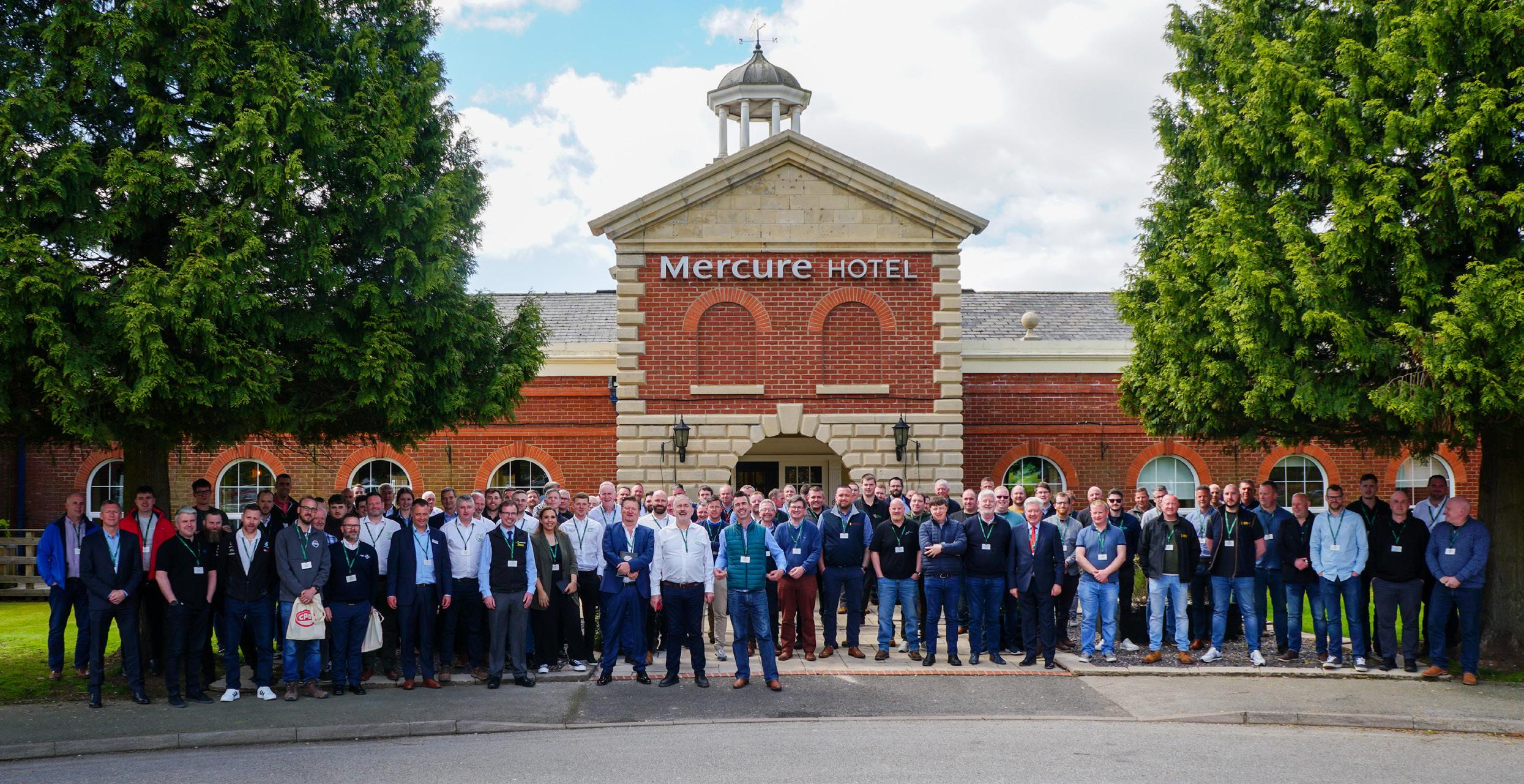
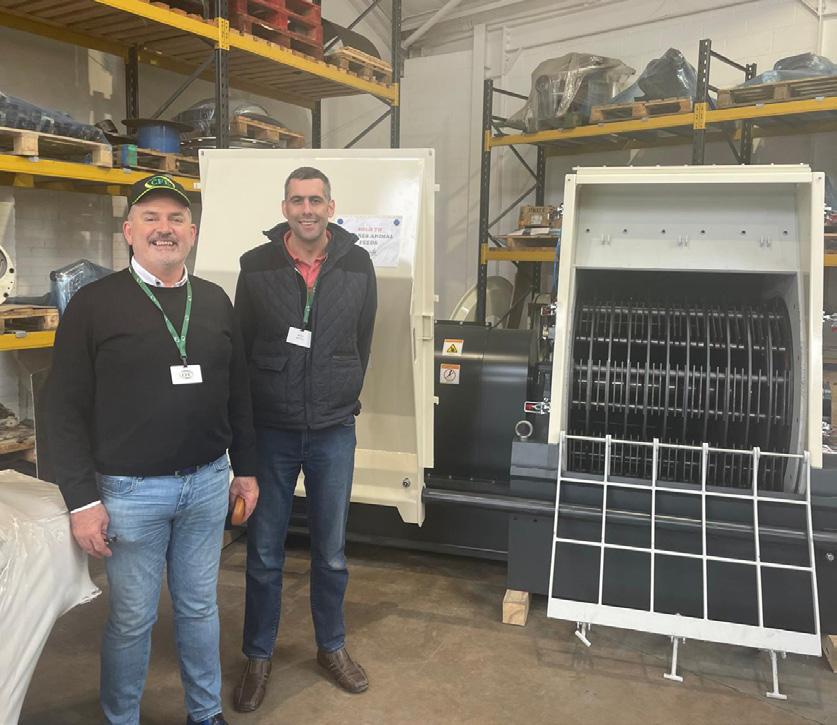
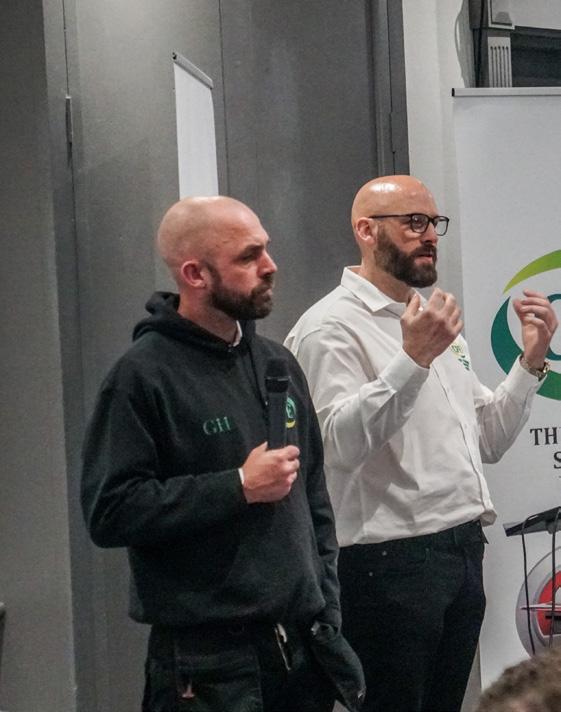
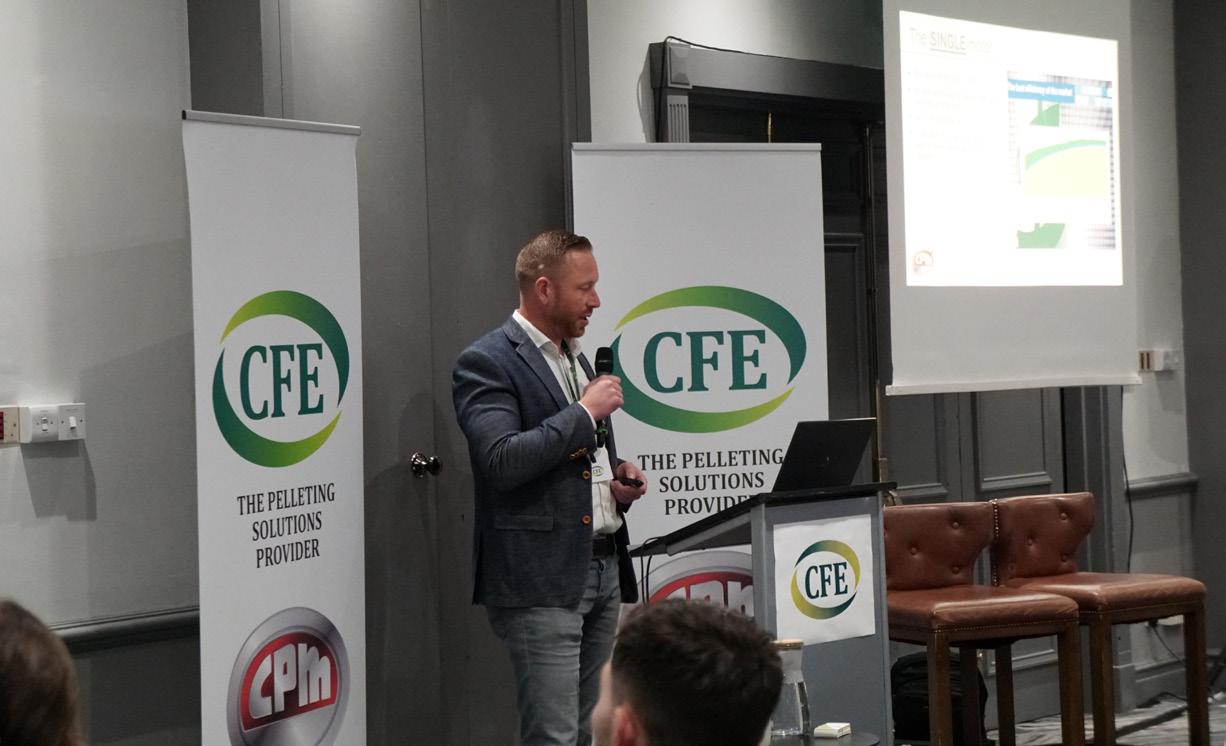
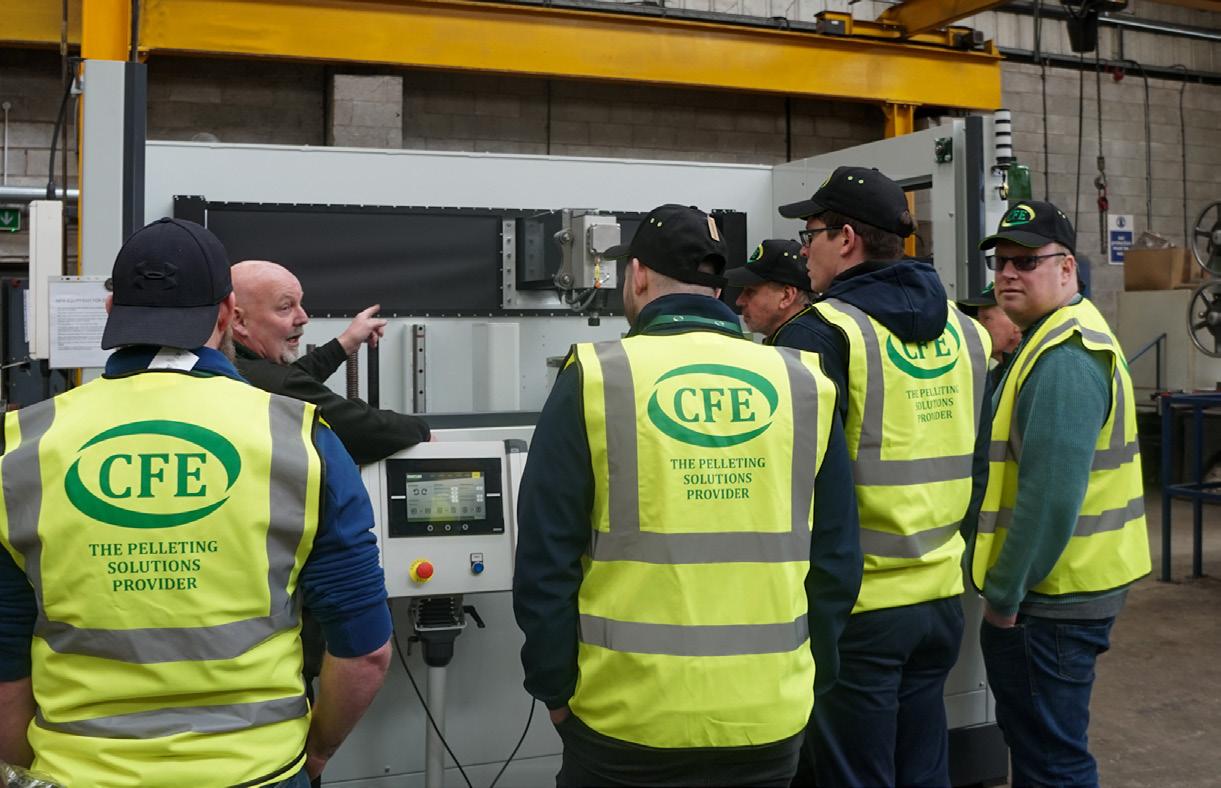
CFE Group recently organised a highly successful two-day seminar at the Mercure Hotel and their facility in Haydock and Arrox Park on April 24th and 25th, 2024. The event welcomed 110 customers from the Feed Mill industry travelling from Ireland, UK and Belgium.
On the first day (24th April), representatives from CPM, IVS, Geelen, and CFE delivered presentations covering topics such as Conditioning/T-Shape Paddle Technology, Steam Utilisation, Cooling, and the latest Dust Emission Legislation. These presentations offered attendees a comprehensive understanding of the key challenges and opportunities within pellet milling operations.
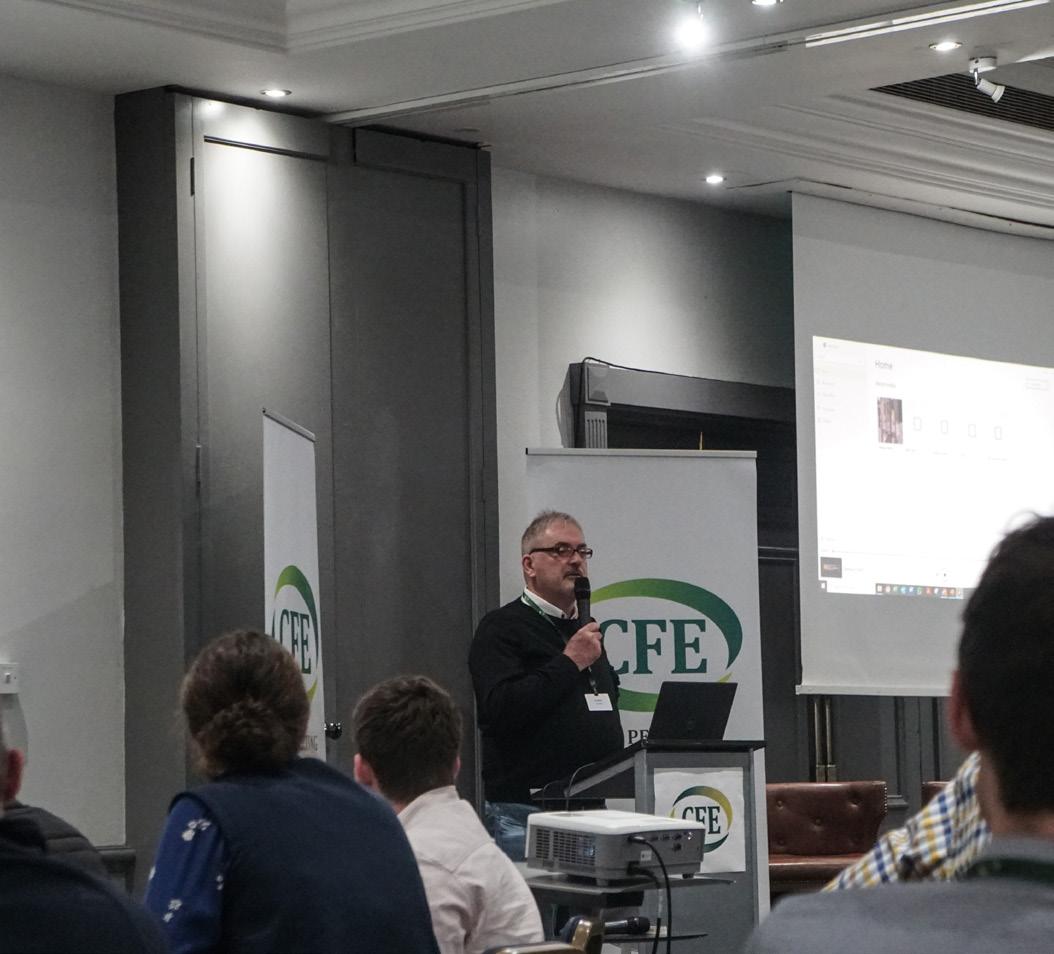
During the evening, CFE hosted a seminar dinner at the Mercure Hotel, featuring a Guest Speaker, Geordan Murphy, renowned for his exceptional career in English Premiership Rugby. Mr. Murphy, known for his illustrious stints with Leicester

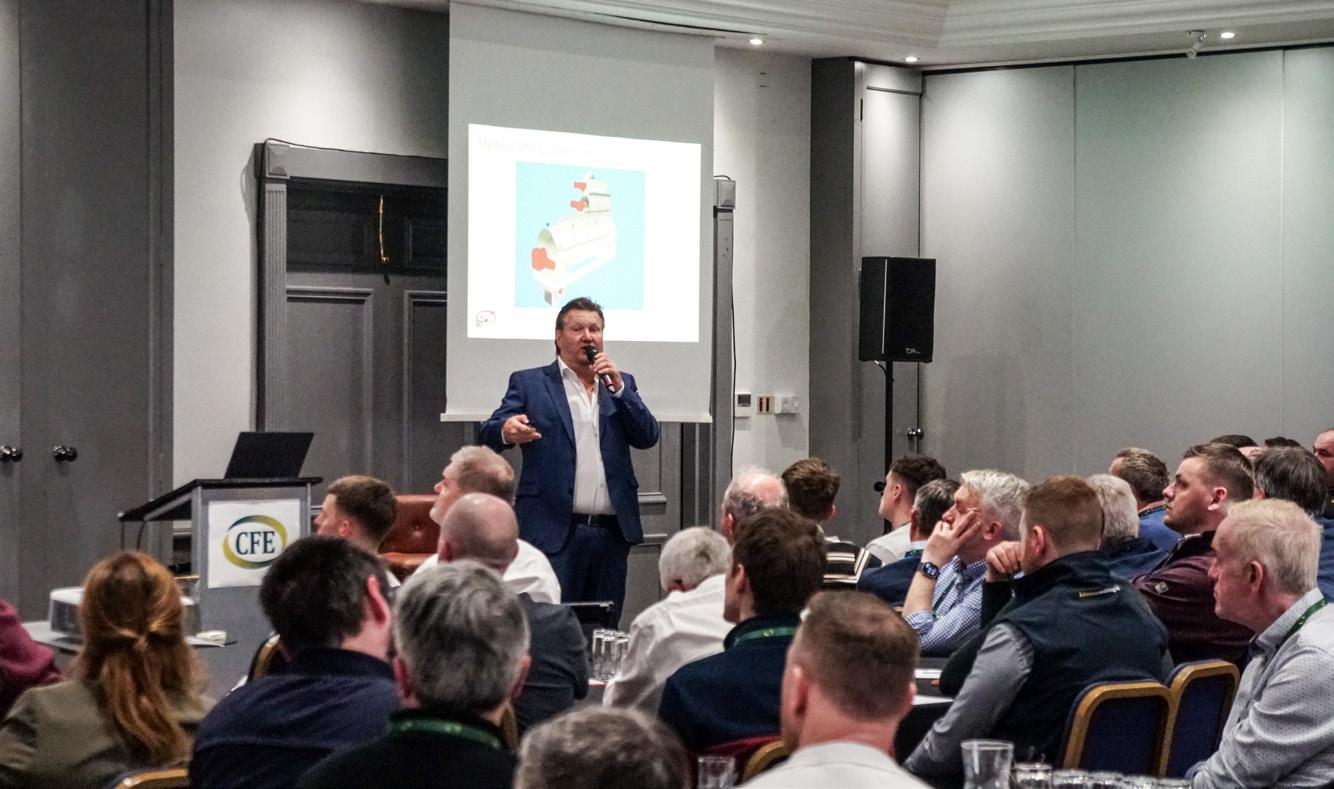
 Left: CFE Group CEO, Con Lynch. Right: William Moore
110 attendees were welcomed to CFE Group’s two day seminar
Con Lynch opening the two day seminar
Carl Robinson and Gary Holt
Jorn van de Burgwal introducing CPM direct motors
Chris Byrom (l) with Peter Carmichael (r)
Arthur vom Hofe introducing CPM conditioners
Left: CFE Group CEO, Con Lynch. Right: William Moore
110 attendees were welcomed to CFE Group’s two day seminar
Con Lynch opening the two day seminar
Carl Robinson and Gary Holt
Jorn van de Burgwal introducing CPM direct motors
Chris Byrom (l) with Peter Carmichael (r)
Arthur vom Hofe introducing CPM conditioners
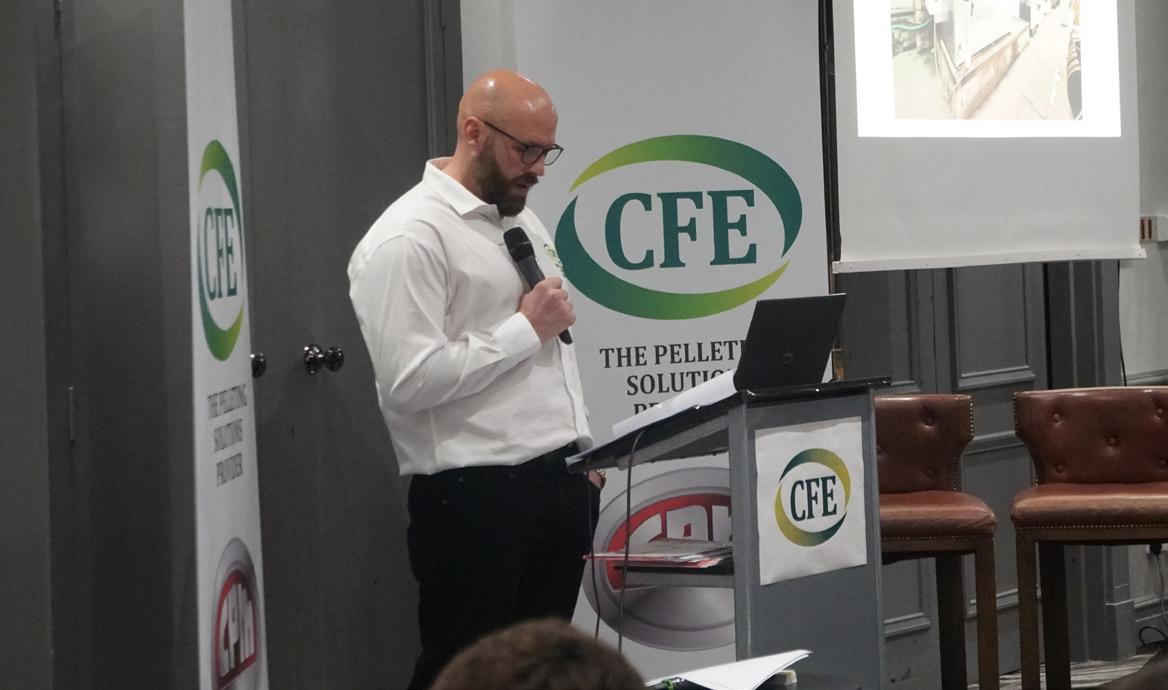

Tigers and representing Ireland and The British & Irish Lions, shared valuable insights from his professional journey, making the evening insightful for all attendees.
The following day (25 th April) provided opportunities for networking among attendees and industry specialists, fostering connections and potential collaborations. Additionally, participants had the chance to tour CFE’s engineering facilities at Arrox Park and Haydock Lane. At Arrow Park, visitors observed a pellet station with Double Conditioning and a CPM 7936-12 Pellet Mill with Lineator and RSM. The tour of Haydock Lane showcased Europe’s most advanced Die and Roll Refurbishing facility, allowing for interactive Q&A sessions and the exchange of ideas and experiences among customers, speakers, and industry professionals in a relaxed environment. For more information please visit: www.cfegroup.com
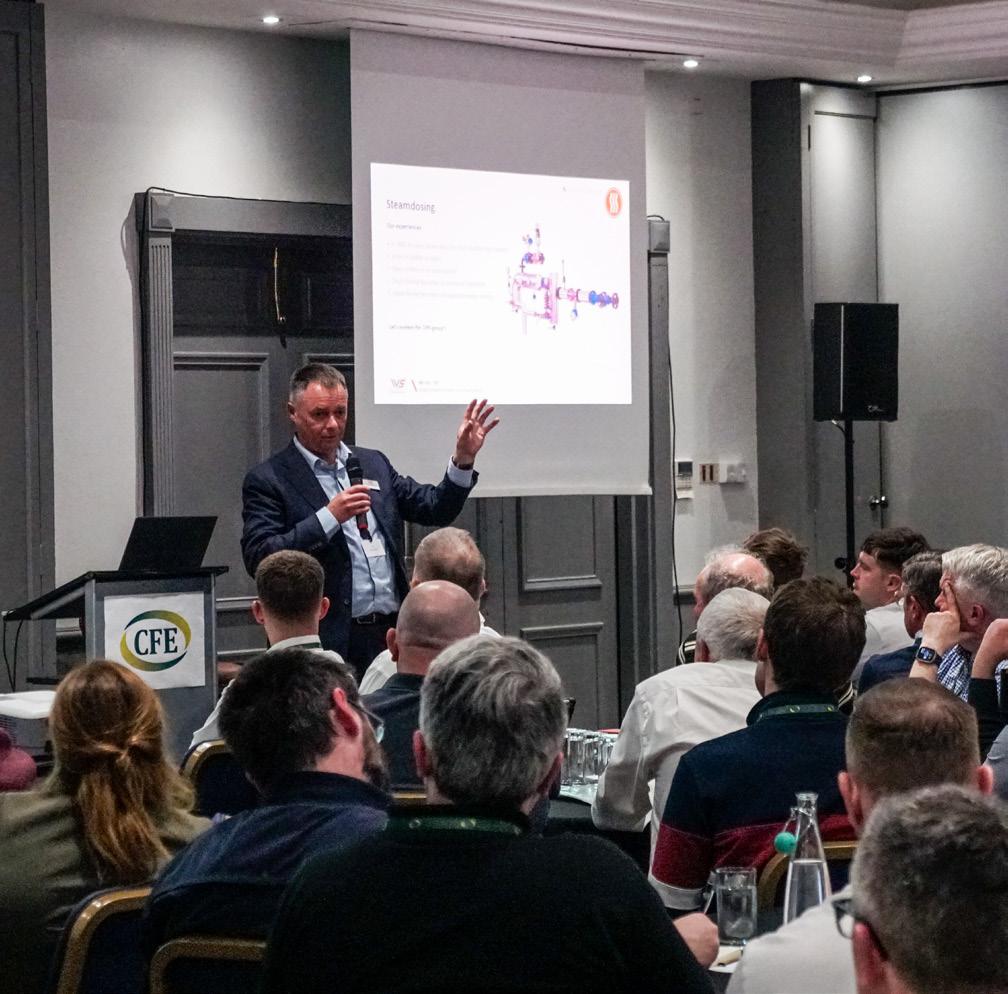

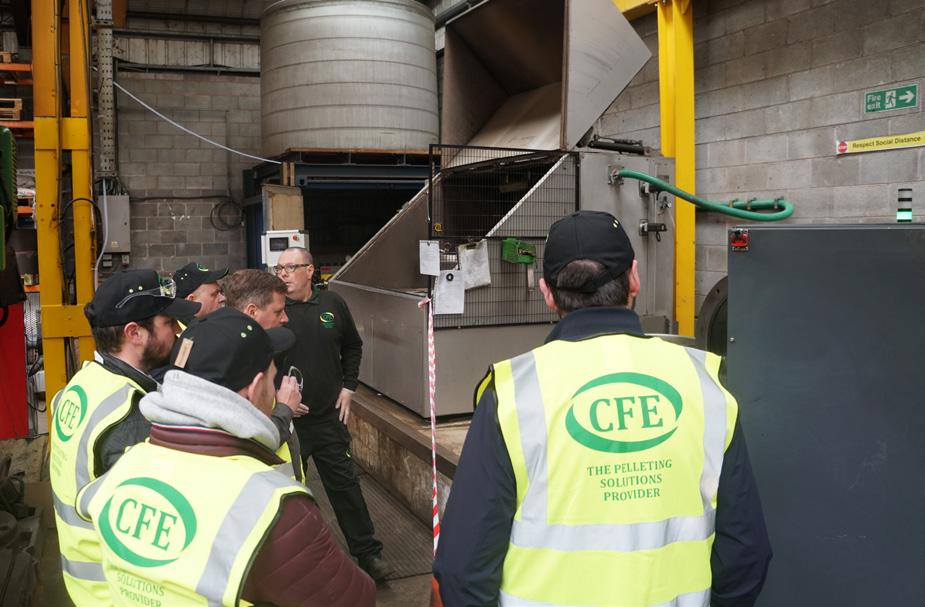




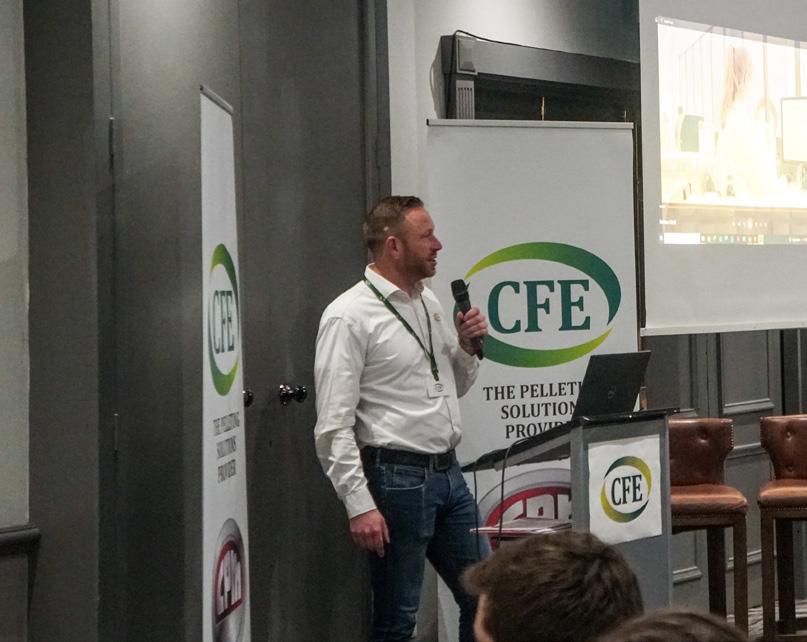
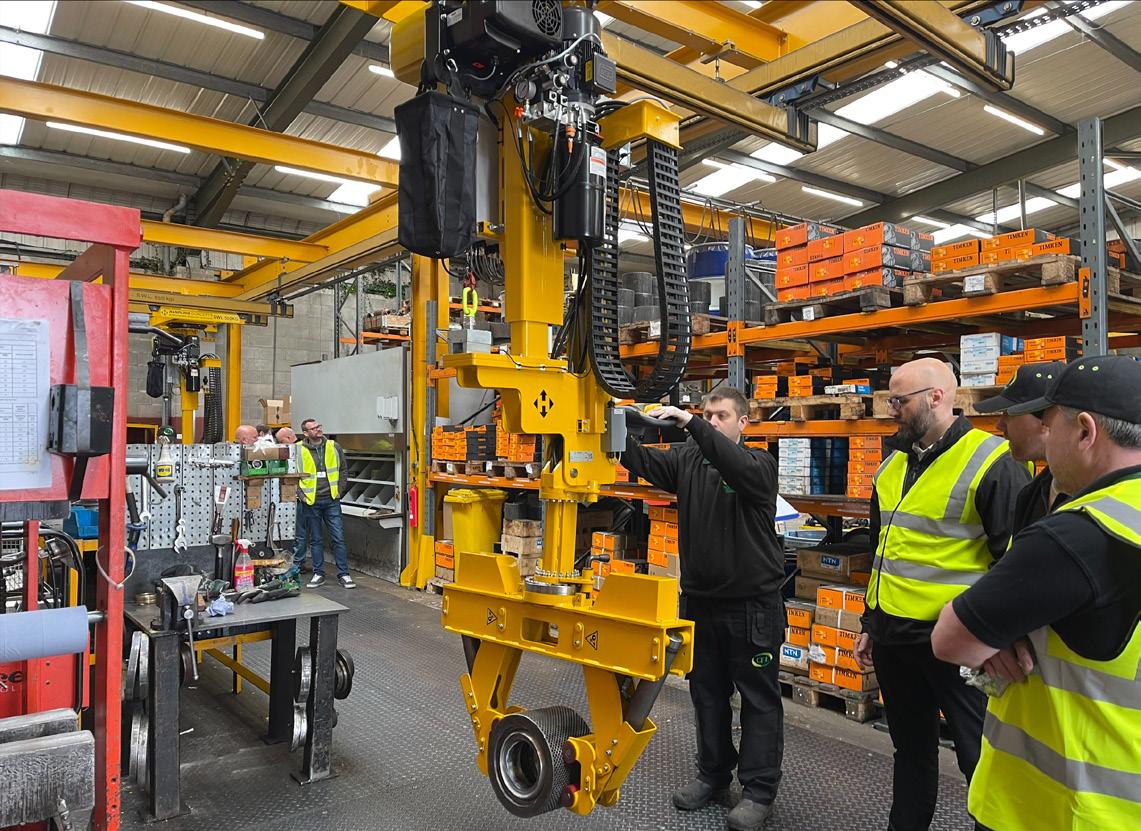
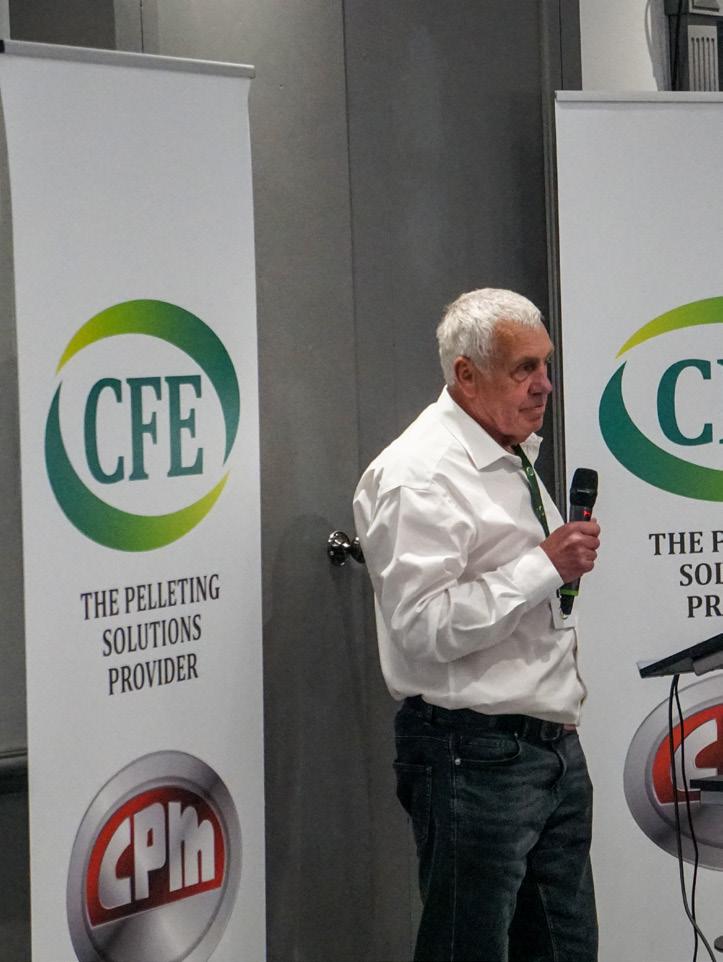 From right to left : Steve Ridout; Wes Larner; Gary Holt; Matt Wood
Gert-Jaap Dekker introducing steaming
John Byrom
Middle: Chris Webb Right: Carl Robinson; Jay Baldwin; Paul Gladwell
Left middle: Gert-Jaap Dekker; Right: Pat Dennehy
Nigel Hillyer introducing feed production sustainability
Jorn van de Burgwal introducing CPM heat treatment
Raymond Blom introducing cooling
Guest Speaker, Geordan Murphy
Carl Robinson introducing dies and rolls
Robin Calcutt talking with customers
Showcasing the features of CPM pellet mills tower
From right to left : Steve Ridout; Wes Larner; Gary Holt; Matt Wood
Gert-Jaap Dekker introducing steaming
John Byrom
Middle: Chris Webb Right: Carl Robinson; Jay Baldwin; Paul Gladwell
Left middle: Gert-Jaap Dekker; Right: Pat Dennehy
Nigel Hillyer introducing feed production sustainability
Jorn van de Burgwal introducing CPM heat treatment
Raymond Blom introducing cooling
Guest Speaker, Geordan Murphy
Carl Robinson introducing dies and rolls
Robin Calcutt talking with customers
Showcasing the features of CPM pellet mills tower
Obviously, a business would not exist without customers, but it is only one piece of the puzzle, with many other things to manage and control; nonetheless, it is a critical component of the business and is not usually its main focus.
Sales teams frequently focus entirely on acquiring new customers, ignoring the retention aspect and if the customer account is viable, lucrative, meeting its original targets, and, most importantly, satisfied with the business.
A CRM solution can certainly help manage customers and prospects, but what does CRM actually mean and where is the cutoff between that and the ERP system which manages day-to-day transactional activity.
It’s true that a CRM solution can handle prospects and customers, build sleek marketing campaigns, and so on, but once a customer becomes a prospect, you generally lose sight of that client in the CRM.
By integrating CRM processes into the ERP system, you consolidate prospect management and unify data for streamlined customer account creation upon winning business. This cohesive approach ensures a foundational understanding of each account, enriching the ERP system’s repository of customer data over time. However, the effectiveness of this system is often hindered by disjointed functions scattered throughout.
A unified view of customer information in a singular location empowers any authorized user within the organization to access comprehensive insights, facilitating a clearer understanding of risks and opportunities.
Too frequently, businesses silo data, leaving sales teams uninformed about crucial insights held by the finance department. While consistent sales to a customer may seem promising, it’s essential to
gauge the viability of these transactions in light of the customer’s financial health, payment behaviours, and credit management.
Integration with credit check agencies and comprehensive document storage further enhances the holistic view of each customer, providing valuable context.
Centralized communication recording prevents redundant efforts and miscommunication by ensuring everyone has visibility into past interactions and commitments made to customers.
In many cases, companies aspire to be comprehensive solution providers for their customers, offering a range of products and services. However, this often leads to disjointed operations across departments, resulting in missed cross-selling opportunities. Consolidating enterprise information about customers reveals potential synergies and enables targeted cross-selling based on actual sales data.
While no business welcomes complaints, they inevitably occur. Incorporating complaint data into customer accounts provides insights into both current issues and historical patterns.
Effective data analysis and business intelligence are paramount. A proficient ERP partner, versed in both data analytics and industry dynamics, ensures a tailored focus on the business’s needs and customer understanding.
Sophisticated data analysis unveils trends and anticipates issues, offering historical perspectives to inform future planning and detect customer behaviour patterns. Embedded within a unified customer view, this analysis provides a comprehensive portrait of each customer’s financial trends, costs, margins, ordering patterns, and predictive insights.
The introduction of AI and machine learning presents a whole world of opportunities to leverage ERP data for enhanced decision-making and strategic initiatives.

Formulation and ingredient selection are thought to control about 40% of pellet quality. Oftentimes, ingredients are dictated by economics or nutrient requirements, and the options for change are limited. However, changes in ingredients that make up less than 1% of the formulation can make significant differences. Selection of phosphate source, addition point of fat or the use of binders will all have a strong influence on both the pelleting process and subsequent pellet durability.
How can pellet binders improve chicken feed quality?
Pelleting is the most common thermal processing system in the production of poultry feed. The main purpose of pelleting is to agglomerate smaller feed particles using mechanical pressure, moisture and heat. Pellet quality depends on feed processing equipment, conditions, and feed formulation. Pelletability of feed components, depending on the presence or absence of natural binders and the addition of artificial binders in chicken feed, are key formula factors that affect pellet quality. Since natural binders are required in high inclusion levels to succeed and frequently have high variability, a good quality pellet binder allows feed producers the chance for increased formulation flexibility, cost reduction per unit binding capability, and constant quality. The maximum quality of pellet binders increases the efficacy of poultry feed by shielding feed from extreme heat and moisture. While 15 to 18% of fines are generated in the crumbling process. This improves overall quality by boosting pellet durability and significantly cutting down the number of fines in chicken feed.
Advantages of pellet binders:
• Improve the output of broiler poultry feed at the pellet mill by 10-15 per cent.
• Reduce energy costs by roughly 3 per cent.
• Shield the physical quality of pellets throughout transportation.
• Crumbles with minimum fines can only be achieved with high quality pellets. Chicken feed performance improves considerably when fines in crumble feed are minimalised.
Pellet binders save money, time, and resources and also can improve the quality of your stock by enhancing the quality of the feed. Binders are binding/firming agents that develop solid bridges through chemical reactions to make strong interparticle bonding. They are used to strengthen pellets, improve pellets integrity, durability and stability, reduce nutrient leaching and prevent fragmentation and abrasion of pellets during handling, transportation and storage.
Some have adhesive forces that help to glue and consolidate particles. Supplementing binders in feed are distinct for different animal species’ diets. Therefore, the selection of binders is based on their binding properties and how they affect the nutritional properties of feed. Fundamentally, for proper optimisation and activation of the pellet binder, steam conditioning is vital to provide heat and moisture.
Starch:
Starch is a D-glucose polymer with branched (amylopectin) or un-branched (amylose) chains. The behaviour of starch is mainly controlled by the gelatinisation process it undergoes at high processing temperatures. Starch granules at higher temperatures and moisture contents influence the textural properties of many foods and feeds. The gelatinisation reaction leads to the formation of starch crosslinking with the other biomass components. The ability of starch to form gel is the basis of its use as a binding agent.
At a specific temperature of 55-70 ° C during heating in the presence of moisture, the kinetic energy gained by the starch molecules causes the breakdown of the intermolecular hydrogen bonding of the starch granule. The granule swells rapidly with time as a result of solvation of the amorphous regions, loss of the crystalline order and water diffusion inside the granular structure. Starch paste is formed during the swelling of the granules when there is continuous leaching out of the linear amylose molecules. Cooling of the starch paste will result in a strong gel when it thickens due to the formation of hydrogen bonds. Due to their unique properties of forming gel, starch is widely applied as thickeners, stabilisers and
texture enhancers in the food industry. Apart from improving the feed’s nutritional value, starch acts as a natural binder and is vital in producing quality pellets in the feed industry. During the feed and food pelleting process, starch not only acts as a binder but also as a lubricating agent, and helps to ease the flow of materials through a pellet mill or an extruder.
Protein is a macromolecule consisting of linear chains of amino acids arranged in a three-dimensional shape. It is made up of primary, secondary, tertiary and quaternary levels of structure. Protein will plasticise under heat and act as a binder thereby improving pellet durability. During feed pelleting, protein is heated and undergoes denaturisation leading to the formation of new bonds and structures with other proteins, lipids and starch available in biomass and improves the binding capacity.
Proteins are widely used in the food and beverage industry due to their properties such as water holding capacity, solubility, gelation, cohesion, and binding abilities. Proteins play a significant role in pellet binding because they exert adhesive forces useful in binding feed particulates. In addition, using raw protein during the pelletisation of biomass improves the physical quality of the pellets compared to denatured proteins.
Lignin is a highly branched aromatic biopolymer extracted from the cell walls of wood where it constitutes up to 30%. It is the world’s second most abundant organic molecule. It makes cell walls rigid and gives resistance to wood, preventing it from bending due to external forces. Due to their adhesive properties, lignin molecules have strong binding activity which is negatively affected by very high moisture content.
Lignosulfonates are lignin products obtained as a by-product from the sulfite pulping of wood. They are sulfonate salts containing magnesium, calcium, and sodium made from lignin of sulfite pulpmill liquors at different pH levels. Lignosulfonates are commercially available as sodium and calcium. Sodium lignosulfonates usually have a lower viscosity compared to calcium lignosulfonates; this is because sodium has a stronger electrokinetic repulsive force which increases repulsion thereby reducing viscosity.
Lignosulfonates are highly branched macromolecules composed of propylphenol side chains connected irregularly by ether or C–C bonds attached to aromatic rings (Figure 1). During the pelleting process, the application of pressure increases interparticle contact thus, promoting interparticle attraction between close particles through weak van der Waals forces. Particle deformation caused by the application of pressure results in smaller particles filling the voids between larger particles, this may contribute to
mechanical interlocking between close particles. Thus, improving pellet durability. Due to their unique properties, lignosulfonates have a vast range of applications and are used as binders, emulsifiers and dispersants in the feed and construction industry. They are non-hazardous; thus, lignosulfonates are suitable for use as binders in animal feed.
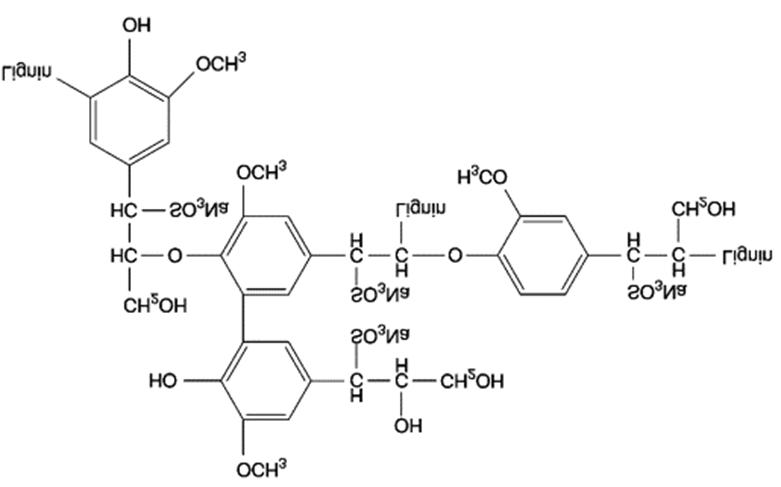
Clays are naturally occurring fine-grained minerals containing hydrous aluminium phyllosilicates that imparts plasticity when wet and harden upon drying. Clays like bentonite and sepiolite are used as binders in producing animal feed. Clays are sometimes used as binders for pelleted feeds. They are often inexpensive and may be cost-effective fillers in rations that are not nutritionally dense.
a. Bentonite
Bentonite is an aluminium phyllosilicate clay principally composed of montmorillonite as the mineral constituent. Also, bentonite is a smectite clay mineral, which contributes greatly to the properties of bentonites, especially swelling. Bentonites have excellent rheological and absorbent properties. In addition, bentonite has excellent plasticity and lubricity, high dry bonding strength, high shear and compressive strength, good impermeability and low compressibility properties. Their high swelling capacity contributes to their ability to form gel-like masses in the presence of moisture. Bentonite expands when water is added due to hydration/ adsorption of interlayer cations (Na+ and Ca2+). After expanding, they disperse in water and form a thin adsorption layer to coat the surface of particles like a gel contributing to its effectiveness as a binder. Bentonite acts as a filler and reduces porous space in feed pellets. Based on these unique properties, bentonite is used as a binder in the iron ore and feed industries. Inclusion of sodium bentonite in feed formulation improves Pellet Durability Index (PDI) and pellet hardness.
b. Sepiolite
Sepiolite is a hydrated magnesium silicate (Si12Mg8O30(OH2)4(OH)4) belonging to the group of phyllosilicates. Structurally, sepiolite is made
of two parallel layers of silicon tetrahedra connected with a layer of magnesium octahedra. Sepiolite is a hydrated magnesium aluminium silicate and it has a thin elongate chain type structure. The elongate structures are immobile and non-swelling when dissolved in water resulting in the formation of a random network capable of trapping liquid and providing excellent thickening, suspending, and gelling properties. This clay is stable at high temperatures, unaffected by electrolytes thereby retaining their viscosity. Sepiolite is used as a binder for pelleted animal feed. Naturally, sepiolite is a feed additive used as a binder or lubricant as a result of its physical and chemical properties.
Agar is a hydrocolloid composing two galactose-based polymers, agarose and agaropectin (Figure 2). Agarose has the greatest gelling capacity compared to agaropectin. Primarily, agar is obtained from the cell wall of red algae Gelidium and Gracilaria as an amorphous and translucent product consisting of repeating units of l-galactose and 3,6-anhydro-l-galactose with low degrees of sulfonic groups. It is insoluble in cold water but solubilises in hot water at 40°C and forms gel at a temperature lower than its melting point ( 38°C). Dissolving agar powder in boiling water and then cooled to room temperature, forms a reversible elastic and turbid gel network.
Due to its unique properties such as a clarifying, thickening and gelling agent, it is applied in the feed, food, pharmaceutical and cosmetic industries. Agar is used as a food/feed binder due to its structure, rheological behaviour and stability.

Carboxymethylcellulose (CMC) is an anionic, water soluble, cellulose derivative with carboxymethyl groups. Structurally, the carboxymethyl groups connected to hydroxyl groups of the glucopyranose monomers form the cellulose polymer. CMC hydrates rapidly due to its ability to absorb water. Its ability to dissolve in water at any temperature depends on the polymerisation rate, substitution rate and how evenly the substitution is distributed. Hence, an increase in the rate of polymerisation and a decrease in the substitution rate and uniformity enhances the water solubility of CMC. The rate of polymerisation,
concentration, ionic strength and pH affect the viscosity of CMC. Thus, as the polymerisation rate increases, the viscosity increases with an increase in concentration.
Also, at high concentrations, CMC forms a thermoreversible gel. In addition, increasing ionic strength and decreasing pH causes viscosity to reduce. CMC is an organic binder used in the iron ore, food and feed industry.
It is a natural polymer of D- galacturonic acid that contains methyl ester groups and occurs as structural materials in plants (Figure 3). Viscosity and gelling ability of pectin are influenced by source and method of extraction. Commercial pectin is obtained from citrus peel or from apple pomace due to the good gelling properties of pectin from these sources.
The properties of pectin to form gel are influenced by the degree of esterification/methylation, pH, presence of other solutes, molecular size, number and arrangement of side chains, and molecule charge density. It is able to form gel in the presence of Ca2+, sugar or acids at low pH values and gel strength depends on Ca2+ concentration, temperature and acidity. The viscosity of pectin solutions and gel formation depend on their solubility. Pectin solubility increases when the degree of methylation increases but decreases when polymer size increases. High concentration increased viscosity but viscosity decreased when temperature increased. High pectin concentration may reduce intermolecular distances and increase intermolecular interactions such as hydrogen bonding. As temperature increases the kinetic energy of molecules increases as a result, intermolecular distances also increase and viscosity declines. Its application in the food and feed industry is based on the gelling property.

For more information please contact: amirattar58@yahoo.com or samira_hasanpor63@yahoo.com
Global animal feed production remained steady in 2023 at 1.29 billion metric tonnes (BMT), a slight decrease of 2.6 million metric tonnes (MMT) — or 0.2% — from 2022’s estimates, according to the 2024 Agri-Food Outlook released by Alltech. The annual survey, now in its 13th year, includes data from 142 countries and more than 27,000 feed mills.
The overall lower demand for feed was due, in part, to the more efficient use of feed made possible by intensive production systems that focus on using animal nutrition, farm management and other technologies to lower feed intake while producing the same amount of protein, or more. A slowdown in the overall production of animal protein, in response to tight margins experienced by many feed and animal protein companies, also contributed to lower feed demand. Changing consumption patterns caused by inflation and dietary trends, higher production costs and geopolitical tensions also influenced feed production in 2023.
The top 10 feed-producing countries are China (262.71 MMT, +0.76%), the U.S. (238.09 MMT, 1.13%), Brazil (83.32 MMT, +1.84%), India (52.83 MMT, +13.43%), Mexico (40.42 MMT, +0.02%), Russia (35.46 MMT, +3.83%), Spain (27.53 MMT, -11.88%), Vietnam (24.15 MMT, -9.63%), Japan (23.94 MMT, -1.15%) and Türkiye (23.37 MMT, -11.48%). Together, the top 10 countries produced 63.1% of the world’s feed production (same as in 2022), and almost half of the world’s global feed production is concentrated in four countries: China, the U.S., Brazil and India.
Notable species results and outlook:
• Poultry experienced an increase in broiler feed production (385.04 MMT, +13.10 MMT, +3.5%) and remained steady with a slight increase for layers (170.88 MMT, +0.01 MMT, 0%).
• Broiler feed now accounts for 29.9% of the total feed tonnage in the world thanks to a 3.5% increase in overall tonnage in 2023. While this growth was not uniform across all regions, the poultry sector is poised to keep holding strong in 2024 thanks to a combination of regional successes and global market dynamics. Some of the biggest factors that will contribute to the resilience of the broiler sector include reduced costs for inputs, such as feed and energy, and increases in margins and profitability.
• For layers , there are industry-wide efforts to optimise feed efficiency and to keep pace with changing dietary trends and new purchasing power. Some markets around the globe were significantly impacted by macroeconomic challenges and disease outbreaks, which can disrupt production cycles. Still, the general outlook for the layer industry remains positive thanks to its resilience in the face of difficult circumstances, when other protein sectors often struggle to adapt.
• The poultry sector is poised for continued strength, driven by a blend of regional successes and global market dynamics. The broiler forecast remains optimistic thanks to lower input costs, increased industrial margins and shifting consumer behaviours. For layers, challenges persist, but there are pockets of resilience and growth.
• The global pig feed production sector faced many challenges in 2023, which led to an overall decrease in pig feed production of 1.23% (320.80 MMT, -4.01 MMT).
• Latin America stood out as the only region that achieved an increase in pig feed production in 2023, while Europe, Asia-Pacific and North America — which have traditionally been the top pig feed-producing regions in the world — all faced challenges. African swine fever (ASF) continues to wreak havoc on pig production in China and Southeast Asia, where repopulation efforts are slowly proceeding.
• The trends highlight the complex relationship between economic factors, supply dynamics and disease management in the global pig feed industry. Addressing these challenges will be crucial for sustaining animal agriculture and ensuring food security.
• Dairy feed tonnage decreased by 2.3% (126.23 MMT, -2.28%), primarily due to the high cost of feed combined with low milk prices, which led farmers to make strategic adjustments that included reducing their cow numbers and/or relying more on non-commercial feed sources.
• In Europe, dairy producers will continue to grapple with stricter environmental policies in the years ahead, and they will need to find new ways to continue growing.
• Asia-Pacific managed to buck the downward trend and emerged as the only region that increased its dairy feed
tonnage in 2023. This growth was fueled by a continued increase in the consumption of milk products there, as well as an expansion of feed production in co-operatives.
• This shift reflects the delicate balance between economic factors and the need to sustain dairy production. Lower feed costs and higher milk prices would help right the ship.
• Beef feed production decreased by 4.36% (117.49 MMT, -5.35 MMT) globally — the most pronounced downward change among all species sectors last year. Changes in cattle cycles in the United States and stricter sustainability policies in Europe had major impacts, with the Asia-Pacific beef sector notably surpassing Europe’s in 2023.
• The substantial decline in North America was the result of lingering droughts and high production costs, among other issues.
• While the European and North American beef industries are expected to continue declining in 2024, growth is expected in China, Brazil and Australia — highlighting the complex dynamics and landscape of beef feed production around the world.
• The aquaculture sector experienced a decline of 4.4% (52.09 MMT, -2.42 MMT).
• This decline was driven in part by a significant drop in China’s supply of aqua feed due to lower fish prices, which had a far-reaching impact.
• Latin America grew by 0.27 MMT (3.87%). Despite adverse weather conditions in that region, the demand for aqua products is still strong in Latin America, which helped aqua producers there remain resilient.
• The global pet feed industry continues to grow, albeit at a slower pace of 0.74% (34.96 MMT, +0.26 MMT) in 2023. Demand for high-quality pet products and services remains high from pet owners who want only the best for their animal companions.
• The Latin American and North American markets were the primary drivers of this growth, with the pet food sector in North America surpassing Europe’s this year.
• Europe was the only market experiencing a decline in pet food production in 2023. Supply-chain disruptions and inflationary pressures were the key factors contributing to this decrease.
• The equine feed industry experienced a decrease of 3.9% (7.98 MMT, -0.32 MMT) in 2023.
• The top challenges in the equine sector include high labour and material prices.
• The top technologies impacting the sector are biosecurity,
microchipping, genetics and nutritional solutions.
• Survey respondents said the biggest opportunities for nutritional solutions are gut health management and feed efficiency.
• Equine feed is expected to decrease both in price and in volume during the coming year.
• North America saw a decrease of 2.8 MMT (259.26 MMT, -1.1%), with beef feed tonnage down significantly. The pig and dairy sectors also slipped slightly, but the broiler, layer and pet sectors more than made up the difference. Feed tonnage in the broiler sector was up nearly 2.9%.
• Latin America experienced growth in 2023 by 2.46 MMT (200.67 MMT, +1.24%). Despite high production costs, geopolitical tensions and changing consumer behaviour due to economic reasons, the region continues to lead global growth, mainly because of its export-driven aquaculture, poultry and pork markets.
• Europe continued its downward trend in feed production, with a decrease of 10.07 MMT (253.19 MMT, -3.82%) due to issues that included the invasion in Ukraine and the spread of animal diseases such as African swine fever (ASF) and avian influenza (AI).
• Asia-Pacific led feed production growth in 2023, with an increase of 6.54 MMT (475.33 MMT, +1.4%). Feed production growth in the region’s ruminant sectors offset a setback in the aqua sector. The region is home to several of the top 10 feedproducing countries, including China, India, Vietnam and Japan.
• Africa experienced continued but slower growth with an increase of 1.95%, nearly 1 MMT to a total of 51.42 MMT.
• The Middle East saw a slight decrease of 0.12 MMT (35.93 MMT, -0.32%).
• Oceania had the third-highest growth, 3.71% or 0.39 MMT to a total of 10.78 MMT.
Alltech works together with feed mills and industry and government entities around the world to compile data and insights to provide an assessment of feed production each year. Compound feed production and prices were collected by Alltech’s global sales team and in partnership with local feed associations in the first quarter of 2024. These figures are estimates and are intended to serve as an information resource for industry stakeholders.
To access more data and insights from the 2024 Alltech Agri-Food Outlook, including an interactive global map, please scan the QR Code adjacent

Extracting the maximum value out of feed becomes a real priority to deal with when ingredient costs are high. In this regard, enzymes play an important role. You can save a few cents per ton of feed by not using enzymes, but in doing so, lose a lot in converting your feed to meat (FCR).

To achieve the best cost savings without sacrificing performance, Adisseo recommends using Rovabio ® Advance Phy. This enzyme solution is a cocktail of 19 different carbohydrases and phytase, which deliver an average energy and amino acid uplift of 5%, as well as an improvement in phosphorus and calcium digestibility. The most costefficient strategy is to use Rovabio® Advance Phy with its full matrix. In addition, Adisseo have strongly invested in improvement of their database to predict the nutritional and anti-nutritional characteristics of a feed formula. Predictor is a web application that simplifies the use of enzymes. Based on field experience and scientific data, Adisseo’s technical teams have built accurate algorithms to predict the potential uplifts created by using Rovabio in a diet.
Together with Adisseo’s Precision Nutrition Evaluation (PNE) service, using raw material NIR spectra, we can really customize your values, including arabinoxylan content-NSPase substrate. It allows you to compare enzymatic potential under different feed programs or different enzyme potential under the same formula. Predictor is a reliable tool to estimate your savings on raw material utilization.
Contact: Sarah Davies – Adisseo
Email: sarah.davies@adisseo.com
Web: www.predictor.adisseo.com and www.adisseo.com
DSM-FIRMENICH - ANIMAL NUTRITION & HEALTH
In addition, RONOZYME® LIQUID BLENDS are available direct from DSM Heanor to meet the market need for post-pellet addition of enzymes.
RONOZYME® WX is an outstanding xylanase with high affinity for both soluble and insoluble arabinoxylans and is the ideal product for wheat-based diets.
RONOZYME ® MultiGrain is an innovative thermostable multicomponent carbohydrase with principal activities of xylanase, β -glucanase and cellulase. It is the enzyme of choice for diets consisting of barley to reduce gut viscosity and improve feed utilisation.
RONOZYME ® VP is a multi-enzyme complex containing β-glucanase, hemicellulase and a high level of pectinase activity. It breaks down pectic substances and other Non-Starch Polysaccharides (NSPs) in vegetable proteins, increasing the availability of amino acids and energy.
RONOZYME® ProAct is a mono-component protease enzyme which increases digestibility of a broad range of feed protein sources and complements the performance of other endogenous and exogenous enzyme to offer feed cost savings, whilst maintaining broiler performance.
RONOZYME® HiPhos is a superior, high-performance phytase effective at releasing bound phosphorus from phytic acid. This product offers a cost saving solution as well as a reduced environmental impact.
RONOZYME® RumiStar™ is a pure amylase which provides more starch energy to the animal and increases forage digestion. This helps farmers to achieve increased feed efficiency as a result of cows making better use of their total diet.
web: www.dsm-firmenich.com
Stay connected:
The RONOZYME ® feed enzyme range from DSM offers a comprehensive spectrum of enzyme activities to increase feed ingredient nutrient digestibility resulting in improved utilisation of feed. This assists in reducing feed costs and the environmental impact of rearing animals for food.
The RONOZYME® products are produced as unique free flowing, virtually dust free, thermostable granular forms, ensuring superior handling characteristics and stability during feed manufacture.
Hemicell™ XT is a patented feed enzyme that uses a unique mechanism to enhance pig and poultry performance. It works by breaking down β-mannans found in various vegetable feeds such as soya, sunflower, wheat and barley, which are otherwise indigestible and can trigger
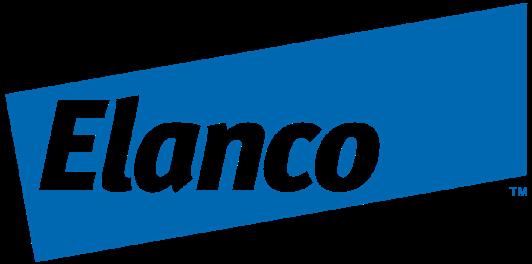
an unwanted immune response. This reaction not only consumes valuable energy, but also affects animal health negatively.
This means that, unlike other feed enzymes, Hemicell XT acts as an energy-sparing enzyme rather than just an energy-releasing one.
Typically, enzymes attempt to extract more nutrients from the feed, whereas Hemicell XT focuses on preventing unnecessary energy expenditure by neutralising the β-mannans that provoke an immune response.
This action preserves energy that can be better utilised towards growth, production, and maintaining good Intestinal Integrity. This results in an improvement in feed efficiency, a reduction in feed costs, and enhanced overall sustainability in pig and poultry production.
When Hemicell XT is used to create cost saving in diets, through calorie removal, it has the potential to contribute significantly to the carbon footprint reduction of poultry and swine meat products.
By preventing feed-induced immune responses (FIIR), Hemicell XT supports better Intestinal Integrity, which is crucial for animal welfare and productivity, making it a valuable addition to standard feed regimes.
These advantages make Hemicell XT an essential tool for producers aiming for sustainable and cost-effective practices.
For example, the use of Hemicell XT leads to a reduction in carbon footprint of between 2.7% to 3.3% in broiler diets and 1.1% to 4.2% in swine diets, depending on the formulation and source of ingredients.
Find more information on Hemicell XT here: https://my.elanco.com/en_gb/product-support/pig-and-poultry/hemicell
and in January 2021 in the EU, OptiPhos® Plus has already received excellent feedback following use in the field. With this new approval, the UK market can now also enjoy the benefits of OptiPhos® Plus.

Huvepharma is a leader in fermentation technology and has over 10,000 m3 of fermentation capacity in the EU. These facilities ensure that Huvepharma has quality control over the whole production line from inclusion to finished formulated product.
References are available upon request. For further information, please contact Lauren McCallie, Feed Additives and Poultry Business Manager for Huvepharma at: Lauren.McCallie@huvepharma.com or on Tel: +44(0)7841574565.
Web: www.huvepharma.com
A multi-fermentation enzyme system for modern diets
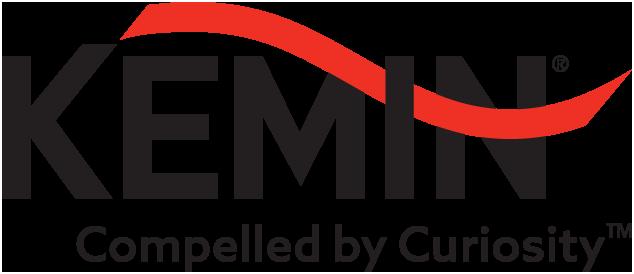
KEMZYME® Plus is a synergistic multi-enzyme product, the only one registered in the EU containing five declared and quantified enzyme activities, which offers a wide range of benefits to poultry nutritionists. It shows high affinity for various feed substrates as it supplies 3 different NSP-ases, a protease and an alpha-amylase, to maximize valuable nutrient release.

OptiPhos® Plus ‘Beats the Heat’ In 2022, Huvepharma® UK received authorisation for its newest phytase, OptiPhos® Plus, for all pig and poultry species at a minimum inclusion level of 250 FTU/kg (Reg. number 4a32)
The key points of OptiPhos® Plus are twofold: (a) its high (thermo) stability and( b) its reliable matrix values.
OptiPhos® Plus is an intrinsically heat stable phytase, surviving pelleting temperatures up to 85°C when used in its granular form (G), and up to 95 ° C when coated (CT). Also, when applied in a concentrated premix it has shown stability of at least 6 months.
OptiPhos® Plus combines stability with fast and efficient phytase activity, providing reliable matrix values. Launched in March 2019
The combination of both fungal and bacterial enzymes enables an optimal activity throughout the entire GIT, resulting in increased starch, amino acid and protein digestibility and extra release of energy.
KEMZYME® Plus offers reliable and well researched matrix values on crude protein (CP), amino acids (AAs) and apparent metabolizable energy (AME), obtained from various trials in broilers, turkeys and laying hens, ensuring consistent feed efficiency while saving up to €12/tonne in diet costs. It allows the flexibility of introducing alternative raw materials with a lower nutritional value and higher fiber content into your diets, reducing the dependency on corn, soybean meal and vegetable oil.
KEMZYME® Plus adds value to your diet with a profitable return on investment As every enzyme activity is derived from non-GMO fermentation, KEMZYME® Plus can also be used in organic farming. For more information on KEMZYME® Plus please visit: https://www.kemin.com/eu/en/products/kemzyme

DM Scientific Ltd are a family run UKAS accredited contract laboratory. We provide quality nutritional analysis for the Animal Feed Industry. Our dedicated team deliver a competent analytical service, testing a variety of feed and raw material samples from all around the UK and Europe. We offer a wide range of analysis:
• Proximate
• Oils and Fats
• Protein
• Energy Calculations
• Minerals
• Medicinal Additive testing -Monensin, Narasin, Salinomycin, CTC, Flubendazole and Nicarbazin.
• NIR Forage testing using the dry and grind CNCPS system
To ensure the quality of our analysis we participate in the AAFCO proficiency testing scheme. We are UKAS accredited to ISO 17025:2017 and our most up to date schedule of accreditation is available at: www. ukas.org/testing.
All our customers are important to us big or small, we pride ourselves in offering a service that is tailored to your needs.
DM Scientific Ltd, Main Site, Dalton, Thirsk, North Yorkshire YO7 3JA
Contact: David Macmillan
Tel: 01845 577757
Email: dmacmillan@dmscientific.co.uk
Web: www.dmscientific.co.uk

SmartMoisture boosts environmental and economic sustainability through moisture management in feed production
The patented technology, developed in partnership with Perstorp helps animal feed mills to improve milling efficiency, prevent loss of
volume, and ultimately reduce energy consumption and wastage during the milling process.
SmartMoisture is a unique moisture management product designed to maintain target moisture levels during the manufacturing process which delivers a range of production, performance, and economic benefits.
Globally, between 1-3% of animal feed is lost due to moisture loss and evaporation during storage and the milling process, which equates to approximately 30 million tonnes of feed wasted each year. Managing feed moisture as a feed ingredient is key to ensuring consistent feed quality and preventing these losses.
Trials carried out by Devenish have shown that up to 3% moisture can be reintroduced into feed using SmartMoisture in pelleted feed and up to 4% in extruded feed, with no adverse impact on either animal performance or product quality. That is due to its ability to reduce water activity. Moisture content merely describes how much water is in the product. Water activity describes how much of that water is free and therefore available to microorganisms for growth. By managing the water activity of feed during processing and storage, SmartMoisture can reduce the proliferation of microorganisms and improve feed safety.
One of the product’s unique features is that it uses the esters of propionic acid – rather than the more common salts of organic acids – which directly prevent the growth of moulds and offer longer protection to the treated feed.
For more information, please visit: smartmoisture.com

Imperium4Feed, winner of the New Product Showcase IPPE 2023 Best of the Best in Animal Feed, is the new mill control system offered by DSL Systems and Datastor Systems. Combining their wealth of knowledge and experience to provide leading-edge process control, planning and information software for mills of all sizes. Implementing an Imperium4Feed mill control system will help improve quality and consistency of production.
The system has comprehensive facilities for capturing, monitoring
and analysing quality control data. In the event of quality issues, the lot traceability feature allows problem supplies and deliveries to be identified in a few seconds.
Raw material quality tests can be configured per material with acceptable ranges. Deliveries out of range are automatically rejected unless authorised by a high-level user.

Production quality results can be captured automatically through communication links with TekPro’s Holmen testers, moisture meters and NIR units. Alternatively, results can be manually entered with the production records. A variety of reports and graphs provide analysis of results which can also be used for process optimisation. DSL’s web based OEE4Imperium system uses the quality data to display KPIs and OEE figures.
Imperium4Feed is modular and fully configurable software based on its predecessor’s AutoPilot4Feed engine which simplifies modifications and expansion. The user interface has been completely redeveloped using the latest web technologies to provide intuitive operation and rapid deployment to desktop, tablet or smart phone

users via standard web browsers.
Imperium4Feed is software for life that is continually updated and improved through a licence subscription to provide compatibility, a best in practice platform to produce animal feed and eliminates disruptive major upgrades. The licence subscription includes 24/7 support.
Imperium4Feed runs on standard or virtual Windows Servers and has hardware redundancy built-in to minimise down time and provide maximum reliability. All data is stored in an open Microsoft SQL Server database for many years and integration is possible with back-office systems.
For further information or to arrange a demonstration, please contact:
Web: www.imperium4.com
Matthew Swallow - Tel: + 44 (0)1159 813700,
Email: matthewswallow@dsl-systems.com
Web: dsl-systems.com
Bill Wright – Tel: +44 (0) 1260 277025
Email: billwright@datastorsystems.com
Web: datastorsystems.com

•
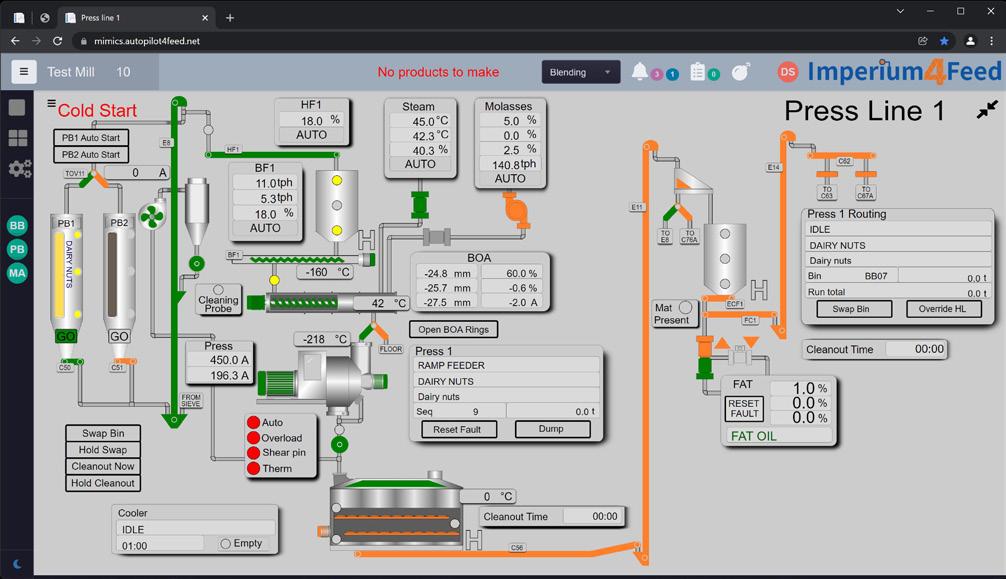
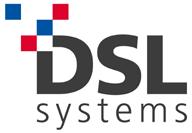

Helping assess feed quality to optimise animal performance and profitability

With dairy producer margins under ever increasing pressure, a focus on feed efficiencies and making the most out of home-grown forages is crucial. Therefore, understanding the baseline of rations and forage quality represents a key parameter to maximising profitability.
“Purchasing decisions can be supported, and feeds formulated closer to specification, by applying feed intelligence and understanding the variations in raw materials,” explains Trident MicroNutri technical services manager Angharad Loveluck.
“Near Infra-Red (NIR) spectroscopy services provide accurate predictions of the nutritional components of feedstuffs, to help optimise diet formulation and ensure quality control,” she adds.
As a full service NIR provider, Trident MicroNutri can help identify inefficiencies across the production process, by monitoring variability and controlling the quality of raw materials and feed.
The Handheld NIR (HHNIR), developed and powered by AB Vista,
enables Trident MicroNutri to provide flexible, in-situ analysis, with results shown instantly on the device and synchronised with a web portal for viewing and sharing more widely. The presentation of data on the screen can also be personalised and branded.
The handheld devices use the same NIR technology as used in AB Vista’s laboratories. The calibrations have been developed over 25 years, incorporating more than 400,000 global reference samples and more than 4 million spectra plus reference values, resulting in a robust calibration database that is constantly developing.
“Traditionally used to predict forage nutrient content quickly and accurately, a new HHNIR calibration has been developed that can predict the dry matter (DM), crude protein (CP), neutral detergent fibre (NDF) and organic matter (OM) content of dairy manure,” continues Ms Loveluck.
“Our HHNIR devices and services can help improve efficiencies, from understanding forage quality and helping to make buying decisions, to introducing ruminal digestion aids or ration pre-treatments,” concludes Ms Loveluck.
To learn more please call use on 02894 473 478 or email us at tmnorder@abagri.org
AB Neo has secured substantial funding for two groundbreaking projects: “Protein Digestion Kinetics” and “Carbohydrate Fermentation Kinetics”. These pioneering initiatives, in development since 2018, have been led by AB Neo’s Dr. Mai Anh Ton Nu.
The carbohydrate fermentation kinetics project has received a substantial boost from the Spanish Ministry of Science and Innovation as part of the public-private collaboration project between AB Neo and the University Autonoma Barcelona, underscoring the government’s commitment to advancing animal nutrition. The Ministry will provide €538,000 to support the project (representing 50% of the total budget of €1M), marking a significant milestone in the quest for sustainable, efficient livestock nutrition.
The animal nutrition industry grapples with the formidable task of accurately assessing the nutritive value and functional properties of proteins and fibers, particularly concerning gut health, in feed ingredients and diets. This challenge becomes even more critical when dealing with young animals, such as weaned piglets. Presently, there is a noticeable absence of reliable matrix values tailored for the distinct needs of young animals. Dr. Mai Anh Ton Nu and her colleagues of the AB Neo R & D team aim to bridge this knowledge gap and stimulate innovation through a holistic approach.
1. New Matrix Values: AB Neo is committed to innovating novel matrix values that provide a more nuanced and precise description of protein quality and carbohydrate profiles, specifically designed for weaned piglets.
2. Fast and cost-effective tools: Innovative tools are in development to expedite the evaluation of protein quality and carbohydrate profiles in feed ingredients and diets for weaned piglets. This endeavour promises a faster and more cost-effective solution for the industry.
3. Exploration of alternative ingredients: AB Neo’s scientists are actively exploring and developing locally sourced alternative
ingredients, and industrial co-products. These innovations aim to reduce production costs and mitigate the environmental carbon footprint impact and support more sustainable production.
The launch of the AB Neo Lab is a pivotal step in this journey, serving as the cornerstone for the success of these projects. The Lab will amass a treasure trove of data on protein and fiber quality in common and local feed ingredients. This data will form the basis for creating NIR (near-infrared) calibration models for protein and fiber quality parameters in young animals’ diets, a vital component for precision in feed ingredient assessment. This infrastructure is indispensable for the fine-tuning feed ingredient optimisation and driving the creation of innovative formulation concepts grounded in both protein digestion kinetics and carbohydrate fermentation kinetics. The focus on protein digestion kinetics is critical due to its direct influence on how the body metabolises protein and amino acids, directly impacting the growth and gut health of young animals. Efficient protein digestion can lead to enhanced growth and performance, whereas inefficient protein digestion can result in energy wastage or even microbial fermentation, which has been linked to diarrhea in weaned piglets.
Proteins, carbohydrates, and particularly fiber play a central role in providing energy and maintaining gut health in young animals. Understanding how fiber is fermented in the digestive tract of young animals is vital to optimise nutrient utilisation, reduce waste, enhance gut health, and improve the overall efficiency of the livestock industry.
This collaborative effort between AB Neo and the University Autonoma Barcelona aims to illuminate the realm of carbohydrate fermentation kinetics, contributing to the development of comprehensive nutritional guidelines for young animals. Dr. Mai Anh Ton Nu and Dr. Laia Blavi of AB Neo will join forces with a team of experts led by Dr. Jose Francisco Pérez and Dr. David Solà from the University Autonoma Barcelona.
Striving to be as efficient as possible benefits the farm no matter the situation. A feed efficient animal should eat less whilst maintaining production or eat the same with increasing production. We must achieve feed efficiency whilst maintaining the health of the cow and emitting less emissions. With an improvement in feed efficiency, fewer nutrients should be wasted and it should lead to less land and resources required for feed production. For example, for a 30 L dairy cow, to improve feed efficiency from 1.4 (l/Kg DM) to 1.5 means that we save around 1.4 Kg DM intake / cow/d.
To improve feed efficiency in ruminants’ nutrition is one of the main focuses. Of course, other factors come into play such as breed (selecting genetically more efficient animals), days in milk, weather, and management. When it comes to nutrition, feedstuffs should be chosen for their digestibility and nutrient bioavailability, but they should also be cost effective and more environmentally friendly.
Feed additives such as ELENSIS and NOVATAN can help in achieving feed efficiency. They can be included into diets through top feeding to achieve higher production which benefits when milk prices are high, or they can be formulated into diets to increase performance or decrease the feed cost of diets without degrading animal performance. Both ELENSIS and NOVATAN can be a cost-effective solution no matter the situation as they are adaptable and less subject to price volatility (Figure 1).
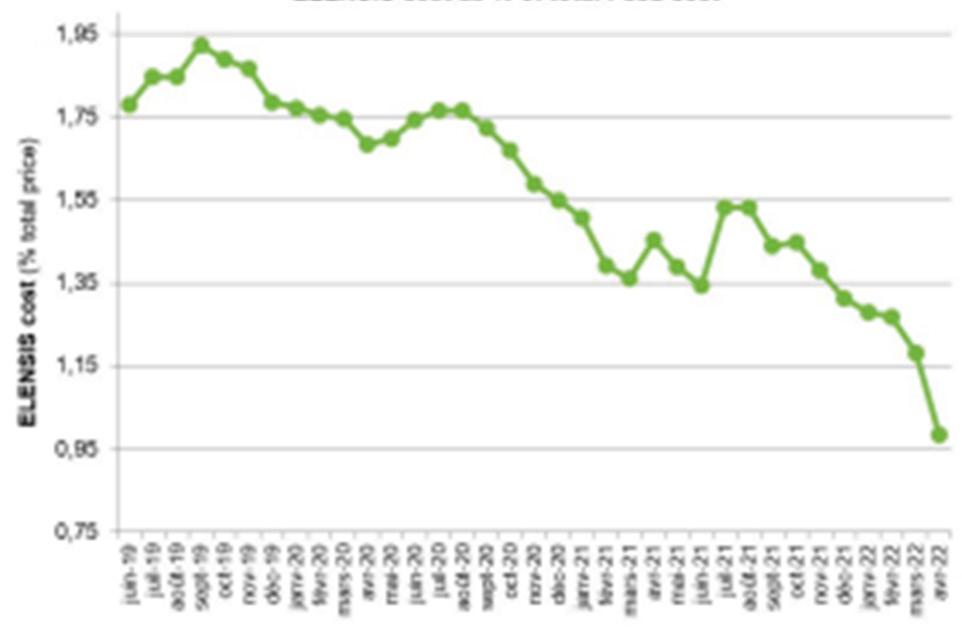
ELENSIS and NOVATAN are feed additives based on essential oils (EO) and plant extracts. EO are the aromatic volatile fraction of plant secondary metabolites. They can be considered as modulators of rumen fermentation. Selecting specific blends of EO allows for a targeted antimicrobial approach with regards to controlling rumen fermentation, for example reducing proteolytic activity in the rumen or increasing VFA production (Macheboeuf et al. 2008). Numerous studies
have demonstrated the ability of EO and their main active components to shift rumen microbial fermentation to participate in improving rumen metabolism of protein (NOVATAN) and energy (ELENSIS). Essential oils are known to modify rumen microbial activity including the possibility of enhancing or inhibiting specific microbial populations to optimise carbohydrate fermentations (Calsamiglia et al. 2007; Bodas et al. 2012). Different scientific publications have shown the potential of essential oils and other natural active ingredients to improve performances in ruminants (Calsamiglia et al. 2021).
NOVATAN is a blend that has a targeted action on reducing protein breakdown in the rumen offering a sustainable way to improve protein efficiency and/ or give the possibility to substitute protected meals, achieving the same level of bypass protein, and reducing the cost of the diet. Thanks to the best availability of amino acids into the hindgut, milk composition is also improved. Another way of using NOVATAN is to place it on top of diets to improve protein efficiency! Adding it on top of the diet is of particular benefit at grazing when there is an excess of rumen degradable protein. The results will be a better milk yield, milk quality and fertility.
ELENSIS improves energy efficiency in the digestive tract of ruminants. The essential oils have been specifically selected to have a synergistic action in the rumen and in the hindgut. It improves the rumen balance by shifting fermentation towards propionic acid (glucose precursor) which is the most efficient VFA for energy utilisation. The essential oils have two specific coatings for targeted release within the rumen and hindgut - a slow release and fast release coating meaning that the product is effective over time in the rumen and bypasses the rumen to be effective in the hindgut. ELENSIS can be formulated into feeds to reduce fat and use competitive raw materials, where feeds can be formulated at least cost but without compromising on quality and digestibility. Alternatively, it can be added on top of diets to give extra energy to the diet and improve animal production (+ 1.2 l of milk as an average). ELENSIS can be used at grazing, particularly near the end of grazing when energy is lower.
NOVATAN and ELENSIS can offer a cost-effective solution whilst being less subject to price volatility. They can help with improving feed efficiency. However, whatever the strategy is, it is important to formulate the diet according to the animal’s need and secure the quality of energy and protein whilst being cost effective.
Contact Jamie-Leigh Douglas, Techna’s Ruminant Technical Sales Manager on 07586323955 or jamie-leigh.douglas@groupe-techna. com for more details.
AniGun ®, your ally for trace minerals analysis

Precise mineral supplementation is the art of giving the animals exactly the amount of minerals that they need. It means that, to the total requirement of one mineral, the amount coming from native feedstuffs (forages, concentrates, etc.) has to be deducted. Also, the amount of antagonist should be taken into account because they can reduce the bioavailability of some important trace minerals (TM). What is the most important limiting factor in our industry to this approach?
The challenge is to assess accurately and regularly the amounts of micro-minerals naturally contained in the forage and other feedstuffs at the farm.
Nowadays TM analyses are not done on a regular basis, are taking time and are relatively costly. Normally these analyses are done by wet chemistry, in a laboratory located far away from the farm & requiring sample management and shipment. In order to perform more accurate mineral supplementation in an accessible and immediate way at the farm, Animine developed AniGun, a handheld analytical instrument for assessing TM content in forages. It uses the XRF (X-ray fluorescence spectrometry) technology, adapted from other industries for the animal feeding objective.

After proper calibration by Animine, this handheld device can measure precisely both macro (P, Ca, S, etc.) and micro (Zn, Mn, Fe, etc.) minerals and some antagonists (Mo, S, etc.) in forages rapidly and in an affordable way. When NIR is only adapted to organic fraction, XRF is essential to obtain inorganic fraction data. Consequently, XRF is a complementary option to the NIR portable device.
AniGun helps farmers and feed manufacturers to evaluate the TM content in the basal diet. This data is then used by the nutritionist to achieve a precise TM intake. With this approach, farmer could reduce the TM supplementation cost, avoid some cases of oversupplementation and chronic toxicity, and reduce the negative impact on the environment.
Contact
Email: marketing@animine.eu Web: https://animine.eu/anigun/
A zelis’ five-year sustainability strategy Action 2025 commits Azelis to achieving a series of ambitious targets by 2025 across all the major sustainability aspects of its strategy: People, Products and Innovation, Governance and Environment.
Our Animal Nutrition business offers a range of specialist feed ingredients, proven by scientific research to promote health, welfare, and productivity.
We place particular emphasis on supporting gut health to enable more efficient utilisation of nutrients from feed and helping to reduce the need for antibiotics. Supporting sustainable livestock production by achieving more with less.
Examples of ingredients we offer include the following:
ProPhorce™ SR 130 contains esterified butyric acid for high levels of targeted release in the lower gut. This supports reliable growth and performance but at lower inclusion levels compared to other butyric acid products, leading to better FCR’s, and helping to reduce the environmental footprint.
Sangrovit ® is a plant-based feed ingredient that supports feed intake during periods of challenge, therefore supporting health and productivity.
Active D contains the bioactive form of Vitamin D calcitriol delivered straight to the small intestine. It supports the uptake of Calcium and Phosphorus, which improves bone strength, egg quality and extends laying period, improving efficiency, and reducing food waste.
Plexomin® Chelated Trace Minerals
The high mineral content and bioavailability of these organically bound trace minerals aids absorption and reduces excretion, preventing mineral deficiencies even when used at a lower dose compared to inorganic sources of trace minerals. The production process is environmentally sustainable as energy released is re-used within the production facilities.
Nuproxa Range providing natural and efficient solutions, including NatuB4®, a natural choline substitute and NuxaSan 500™ containing bioactives known for their activity in reducing the negative effects of coccidia.
For further information please contact Leia Trotman at Azelis on: +44 (0)7792116659 or via email: leia.trotman@azelis.co.uk
Azelis sustainability report: www.azelis.com/en/sustainabilityreportdownloads
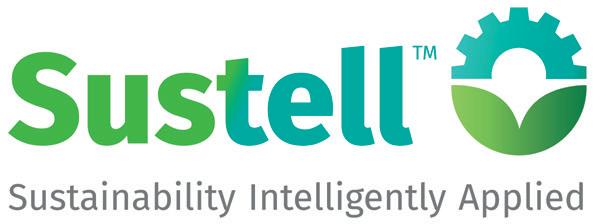
Sustell TM , the leading and complete solution to help you address your sustainability challenges, credibly and transparently. SustellTM accurately measures your full environmental footprint and provides actionable insights on how to reduce your impact.
Several years in development and continually updated, Sustell™ was developed in collaboration with key partners, including Blonk, recognised experts in the field of agri-food lifecycle analysis, as well as customers and users worldwide to reflect real-world needs of sustainable animal protein production.
Sustell™ is a first-of-its-kind intelligent sustainability service to drive improvements in the environmental footprint and profitability of animal protein production.
Sustell™ is built on two pillars to measure the footprint of your animal protein production systems in a more accurate and complete way, while providing science-based recommendations to make improvements possible: The Intelligence Platform
The Sustell™ Intelligence Platform is a user-friendly SaaS platform (AWS cloud based) for data input, measurement and visualization of full environmental footprint results:
• Based on a full LCA (Life Cycle Assessment)
• Precise calculation enables tangible and measurable improvements of feed and farm environmental footprints
• Constantly updated and improved to meet user needs and evolving science, methodologies and the changing regulatory landscape and changing needs of animal protein producers and industry
The Expert Centre
The Sustell™ Expert Center provides tangible, measurable interventions to help you reduce your farm level environmental footprint.
The Sustell™ Expert Center provides:
• Accurate, simple and actionable feed and farm-level analyses
• Recommendations
• Training
• Audits
• Certification
• Business development projects web: www.sustell.com www.dsm-firmenich.com/anh
Cargill Animal Nutrition is fully committed to the sustainability journey and to supporting its suppliers and customers in meeting their respective targets.
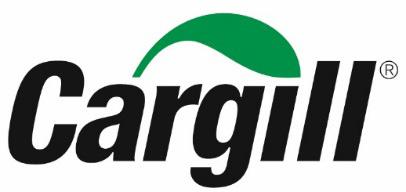
Sourcing sustainable ingredients, such as sustainable palm oil and soya, and finding alternatives, like insect oil, are part of Cargill’s sustainability programme.
The company is also improving its manufacturing excellence and cutting emissions from factories, targeting a global reduction of 10% by 2025. Closer to home, its UK plant based at Dalton, in North Yorkshire, has reduced its scope 1 emissions by 60% since 2017.
Cargill has progressed on its journey to secure sustainable ingredients and develop a tried-and-tested portfolio of novel products that are focused on: improving feed efficiency through more precise diet formulations and reduced crude protein levels; animal welfare and performance; and reducing nutrient pollution.
Triple S® soya has now replaced soya sources in Cargill UK’s Neopigg® piglet diets and its Neochicc® chick diets. The triple ‘S’ reflects the sustainably sourced and supplied origins of the soya used in the diets.
Triple S soya has the same nutritional value as the previously used soya and is sourced from areas in South America that are guaranteed deforestation-free since 2008. The soya in Triple S is also fully traceable to individual farms so the supply chain, including feed compounders and retailers, know exactly where is comes from.
Equaliser® Cream is a specialised rumen buffer that targets the causes of milk fat depression. It is highly effective where high oil content diets are being fed, such as young, immature grazed grass or diets with high oil content co-products, and where highly digestible diets and highenergy silages are included in the ration.
It has a proven record of helping to maintain milk butterfat levels and, therefore, protecting milk prices during prolonged risk periods. It offers a more cost effective, reliable and immediate response to maintaining milk butterfat compared with previous alternatives and contains no palm.
Cargill’s NeoMilk® follow-on milks have a more precise balance of amino acids and strategic use of feed additives to optimise gut health. An accurate amino acid profile has allowed for a lower crude protein level in some cases to improve the diet’s efficiency, while maintaining performance and avoiding an over-supply of nutrients.
Promoting sow and piglet welfare and performance is achieved by including LivaPig® in the lactation diet. This feed product is proven to increase the blood flow and, therefore, the supply of oxygen and nutrients around the body. It is based on the same principle used in supplements for athletes to improve performance. In the case of the sow, it increases the flow of nutrients to the reproduction tissue and piglets in utero.
Reduced stillbirths and increased birthweights, with fewer smaller piglets, have been recorded in litters from sows fed on LivaPig®, resulting in an increase of 0.5 piglets weaned per litter
Faster farrowing times and improvements in colostrum quality and
quantity, with a significant increase in the solids content, have also been recorded in sows fed the product in late gestation and early lactation, compared with those fed a standard diet.
Cargill’s SilvAir® has been developed following extensive research into the use of dietary nitrate in methane reduction from ruminants. It is a carefully manufactured feed-grade calcium nitrate comprising 76% nitrate and 22.5% calcium, with a dry matter of 84%, and it also offers an alternative source of dietary protein and calcium.
In trials, where it is included at a rate of 1.6% of the total diet dry matter in dairy diets, it has been shown to reduce methane emissions by up to 10%. SilvAir is already used in dairy rations in the UK and Ireland.
Advanced formulation technology used in the Cargill Nutrient System (CNS) supports more sustainable livestock production in all species. It uses real time data on the nutritional analysis of ingredients, which allows for continuous improvements in production efficiency and on the environmental impact of diets.
Feed compounders can access and use this accurate and current information from CNS in Cargill’s precision-driven rationing programmes DairyMAX and BeefMAX, Panorama for poultry systems, and PorkMAX for the pig sector.
Josie Hatch - Marketing Communications Specialist – UK and Ireland
Cargill Animal Nutrition
Tel: +44 (0)1845 578125
Josie_hatch@cargill.com
Provimi Ltd., Dalton Airfield Industrial Estate, Thirsk, North Yorkshire, YO7 3HE www.cargill.com/feed | @CargillAnimalUK
Orffa’s commitment to a sustainable livestock production
FEFAC (European Feed Manufacturers’ Federation) issued a sustainability charter highlighting core ambitions, such as contributing to a climate neutral production and improving resource efficiency. In the search of innovative feed solutions, Orffa is a key actor to help the industry meet its sustainability goals. Orffa is taking actions in various domains such as the reduction of the use of antibiotics, welfare of animals and increase of the efficiency of animal production. Amongst the nutritional solutions, the impact of a nutritional emulsifier, Excential Energy Plus, has been assessed on the environmental footprint of broiler, turkey and swine production via a LCA (Life Cycle Assessment). LCA is a technique to evaluate the environmental impact associated with the lifecycle of a product from cradle-to-farm gate. Product environmental footprint guidelines of the European Union were applied as methodology for the calculations. Nutritional emulsifiers are proven to improve energy and nutrient
digestibility. Their mode of action is interesting in energy reduced diets, to reduce feed cost while maintaining performance. It was observed that feeding Excential Energy Plus to swine decreased the amount of CO2 equivalent needed to produce 1kg of pork live weight by 3.27%. Impacts on acidification, eutrophication and land use were similarly reduced. The production of 1kg of Excential Energy Plus requires 1.15kg CO2 equivalent but enables to save 228kg CO2 equivalent, representing an offset of CO2 as 7,700 trees. Climate action is a joint responsibility and Excential Energy Plus is part of this journey!
Email: info@orffa.com
Carbon measurement for your own and your customers’ benefit.
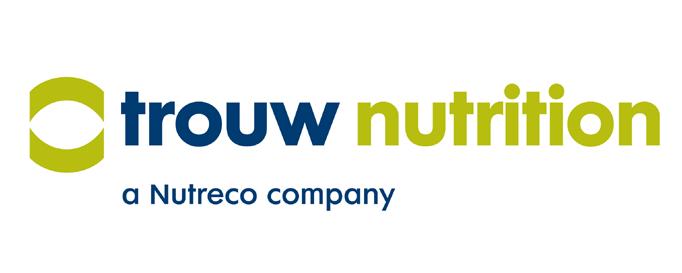
Carbon footprint reduction in livestock farming will remain a high profile issue in the quest to meet the COP26 targets and the industry will need to take a holistic approach if this is to be achieved.
The ability to demonstrate the carbon footprint of purchased feeds is increasingly becoming a requirement of milk and meat processors and buyers, and of livestock farmers looking to reduce their own net carbon contribution. And it will be important for animal feed manufacturers too as they strive to demonstrate a reduced environmental impact.

Trouw Nutrition has been focussing on systems to help achieve these objectives through improved efficiency of feed and forage use on farm for many years. Now, their innovative, simple and easy to use FeedPrint system allows feed manufacturers to calculate and compare the carbon footprint of their raw materials used, compound feeds and mill processes.
Based on the GFLI database plus other secondary databases, following PEFCR, FeedPrint allows the carbon footprint of raw materials to be assessed taking account of the origin and distance travelled to the mill. It also allows the energy used in the mill processes to be included, and even split out per product line, to give a carbon cost per tonne of feed produced.
The data produced by FeedPrint will allow feed manufacturers to make decisions on raw materials based on sustainability metrics, calculate and track the carbon footprint of their mill and demonstrate improved carbon efficiency. It will also allow more accurate and usable data to be provided to customers to help reduce the carbon cost of UK livestock farming.
Email: technical.gb@trouwnutrition.com
Web: trouwnutrition.co.uk
Tel: +44 (0) 1335 341100
Trouw Nutrition hosted its second annual sustainability event on May 14th at the Windmill Hotel, Coventry. Capitalising on the momentum gained from the previous conference, the event focussed on identifying practical steps that businesses can take to make progress towards increased sustainability of food production.
Bringing together a wide range of stakeholders from retailers, food and drink service industry and processors to environmental consultants, feed compounders, farmers, farm consultants, feed advisors, vets, academics and industry organisations, one of the central themes of the day was that collaboration is key when it comes to sustainability.
Speaking ahead of the event, conference chair Dr Liz Homer commented: “We want to bring delegates together to discuss solutions that can be implemented within their businesses, whether dairy farming, feed manufacture or milk processing to enable a reduction in environmental footprint, and to secure a viable future for the industry.”
Brian Lindsay from the Dairy Sustainability Framework delivered the keynote address and urged attendees to take the lead when it comes to sustainability, emphasising the importance of talking more and prioritising evidence alongside emotion.
Brian also highlighted the fundamental role that data plays in improving sustainability outcomes, which was a common thread throughout many of the presentations delivered on the day.

The event continued with a review of the progress made towards net zero in the ruminant industry, with talks from Cerys Jenkins-Lowe, Sustainability Manager, Heart with Smart Group (franchise operators of Pizza Hut and itsu) and Ben Williams, Sustainability Manager, Leprino Foods on “Dairy supply chain value approach” and Ellie Newman
Sustainability Consultant, Promar & Katie Major, Agriculture Manager, Dunbia Group on “Net Zero Beef - Who, what, how and why?”
This was followed by a session centred on “Farm StoriesShowcasing Sustainability in Practice”, where the audience heard from a series of four farmers who talked about their own experiences and their sustainability journeys so far. These included, how they have measured their environmental footprint baseline, how they subsequently identified and decided what action to take, how they track their progress and what they plan to tackle next.

The carbon footprint of feed workshop underway
After lunch, Claire Whittle BVSc MRCVS Veterinary Surgeon, LLM Farm Vets gave a presentation on “Regenerative farming from a vet’s perspective” followed by Dr Liz Homer, Sustainability Manager Ruminants Europe, Trouw Nutrition asking “Where do we go from here and what are the next steps for the industry?”
The event finished with two workshops on how to measure the environmental impact of milk production and feed manufacture illustrated with practical and replicable examples.
“Our objective as a business is to become the undisputed leader in sustainable animal nutrition solutions and directly contribute to the reduction of environmental emissions at farm level. We are committed to being proactive in delivering a holistic approach to sustainability on farm through enhanced lifetime productivity and efficiency,” Dr Homer said. “Rather than being seen solely as the cause of the problem, cows and other ruminants are an integral and important part of the solution. This event is designed to help businesses accelerate their sustainability journey,” she concluded.

dsm-firmenich has released the results of the World Mycotoxin Survey from January to March 2024.
5,383 samples were collected and analysed from 64 countries around the world. The results concluded that Fusarium mycotoxins, deoxynivalenol, zearalenone and fumonisins are most frequently found, with the highest regions of mycotoxins found in North- and Central America, South Asia, South East Asia and China and Taiwan.
The survey also includes further details on:
Prevalence levels for each mycotoxin in each region
Global and local risk levels for each mycotoxin
Risk levels posed to each species
More information about Spectrum 380®, the most powerful mycotoxin detection method used as a research tool and performed at the University of Natural Resources and Life Sciences Vienna (BOKU)
Overview on the occurrence of the most frequent mycotoxins, their masked and modified forms as well as emerging mycotoxins; based on results delivered by the most comprehensive commercially available multi-mycotoxin method, Spectrum Top®50
Ursula Hofstetter, Head of Mycotoxin Risk Management at dsm-firmenich stated: “The presence of mycotoxins remain a threat to animal health, with adverse effects impacting reproduction, digestive disorders and performance. These latest findings underscore the ongoing global challenge mycotoxins pose to animal welfare and farm productivity, reinforcing the critical need for effective mycotoxin management strategies” About the Survey
Each year since 2004, dsm-firmenich has analysed a large number of feed samples from all around the world to understand and monitor contamination levels of the different mycotoxins in a variety of feed ingredients. This information is shared in the annual dsmfirmenich World Mycotoxin Survey.
Mycotoxins are naturally produced by the fungi that can contaminate feed raw materials in the field and during storage. When ingested by animals, mycotoxins have a wide range of negative effects such as impaired reproduction, digestive disorders, carcinogenicity, and reduced performance.
To download to the dsm-firmenich World Mycotoxin Survey from January to March 2024, visit the dsm-firmenich animal heralth and nutrition website.
Evonik has released the second edition of its MetAMINO® ATLAS, a comprehensive set of 19 new performance trials investigating the relative bioavailability of supplementary methionine sources in animal diets. The latest studies reconfirm that 65 units of MetAMINO® can replace 100 units of methionine hydroxy analog free acids and its calcium salts (MHA-FA/Ca) in feeds for poultry, swine, and aquatic species without compromising animal performance.
The trials were conducted in experimental settings and under practical conditions at large scale commercial farms in 12 countries with more than two million animals. Some of the largest trials included 838,000 ducks in China, 408,500 broilers in Germany, 217,000 broilers in Brazil, and 120,000 laying hens in China.
“All the results impressively suggest that our 65% bioefficacy concept for MetAMINO® is universally applicable - for all MHA products, in all monogastric farm and aqua species, under any nutritional settings, under any climate and production conditions,” says Dr. Dirk Hoehler, head of the Essential Nutrition business in the Animal Nutrition business line of Evonik. “This means that customers using MetAMINO® can achieve similar animal performance with fewer units of the product, and so reducing feed cost while improving the overall bottom-line.”
The digital version of the MetAMINO ® ATLAS 2024 contains four sections: Trials; Videos; Evonik Amino Acid Recommendations for broilers, laying hens, ducks, turkeys, swine and aqua species; and Articles & Abstracts.
“The last section is a comprehensive selection of the latest and most relevant scientific studies that not only cover the nutritional value of DL-methionine compared to other methionine sources, but also describe all the other advantages that come with MetAMINO® such as highest product quality, optimal flowability, precise dosing, convenient storage and easyto-handle dry product form,” says Nils Niedner, Director Product Management MetAMINO®. “The ATLAS concludes with a meta-analysis and, for the first time, with two papers on the sustainability aspects of MetAMINO®.”
A free copy of the digital version of the MetAMINO® ATLAS 2024 is available at metamino.evonik.com
Q1 2024
Like-for-like volume growth and strong increase operational profitability
Discussing the results Pieter Wolleswinkel, CEO ForFarmers commented: “Our (compound) feed volumes show an increase. This is a great achievement and shows that we have been able to further strengthen our market position with our focused local market approach. The volume development confirms that we are contributing to a good return on the farm/a profitable farming business. Our effective buying and selling strategy where we operate close to the market, combined with our actions to reduce our cost base, significantly improved operating profitability in the first quarter.
The integration of Piast’s operations in Poland is progressing well. The reorganisation in the United Kingdom is also on schedule. These developments show that we are on the right track with our strategic initiatives. This strengthens our confidence in achieving our set return target. At the same time, we continue to invest in sustainable solutions so that ForFarmers can play its role in a future-proof food system. I am proud of how our people have worked over the past period to achieve this result.”
Highlights Q1 2024
• Total volume, adjusted for Belgian volumes sold in 2023 and acquired Piast volumes, increased by 0.2% compared to Q1 2023; compound feed volume increased by 1.2%.
• Gross profit up 2.7% to €124 million, mainly due to more effective buying by operating closer to the market.
• Strong increase in operating profitability compared to Q1 2023; underlying EBIT up 178.9% and underlying EBITDA up 55.4%, reflecting higher gross margin and lower operating expenses.
• ROACE1 ratio on underlying EBIT increased from 7.1% at 31 December 2023 to 8.7% at 31 March 2024.
• The integration of Piast and the reorganisation in the United Kingdom are proceeding according to plan.
• ForFarmers continues to focus on its local approach, growing and attractive markets, and cost control.
1 The ROACE ratio on the underlying EBIT increased from 7.1% as of December 31, 2023, to 8.7% as of March 31, 2024.
Read and download the full press release on the ForFarmers website.
With turnout delayed across the country and silage stocks running down, incorporating a proportion of straw and molasses in the diet will be an effective way to eke out silage stocks.
“Due to the continued wet weather, the prospects for turnout are not encouraging,” concedes Georgina Chapman from molasses blends specialists ED&F Man. “While grass covers are increasing, ground conditions mean cows on many farms will be unable to graze effectively, putting pressure on silage stocks.
“So it will be important to look at ways to extend silage stocks until cows can go out. One cost-effective option is to consider feeding straw and a molasses blend. This can either be used to replace a proportion of grass silage in the milking diet, or to replace silage totally in heifer and growing cattle diets.
Trials at the South West Dairy Development Centre in conjunction with Kingshay showed that it is possible to successfully replace 2.5kg silage dry matter in dairy diets (around 7-10kg freshweight) with 2.2kgFW of straw and 1kg of a molasses blend. Assuming cows had been fed 12.5kgDM of silage, moving to 10kgDM of silage and the straw: molasses blend
alternative would mean every four days on the new diet would save enough silage to allow an extra day of winter housing from current silage stocks.
“The molasses blend plays a crucial role in maintaining good rumen function. Molasses blends contain highly rumen fermentable sugars, increasing microbial protein production and stimulating rumen microbes to improve fibre digestion. The blend used in the trial also contained Regulated Release protein, which releases nitrogen at a steady rate to optimise rumen microbial activity. Coupled with a high sugar content, they promote rumen fermentation and activity and can utilise straw effectively.
When implementing a straw-based diet, it is important to provide good access to a plentiful supply of clean water. Additionally, the transition from a silagebased diet to a straw based must be controlled, by introducing more straw into the diet and reducing silage over a few days to give the rumen microbes time to adjust to the new forage. Finally, straw is deficient in minerals so additional mineral supplementation could be necessary.
“Incorporating straw and molasses into dairy diets now will help minimise the consequences of any delay to turnout,” Ms Chapman advises.
Anpario is celebrating 25 years of the phytogenic Orego-Stim, which was developed to help manage intestinal health and support gut integrity for optimum animal performance. During the past 3 decades, the product range has expanded to provide innovative, species-specific solutions but the 100% natural oregano essential oil (OEO) foundation remains the same.
Anpario intends to mark this milestone anniversary in a number of ways including a seminar and visit to observe the oregano field production and OEO distillery with customers in the summer, plus other opportunities to celebrate at tradeshows and customer seminars across the globe. In addition, Orego-Stim packaging is getting a fresh new look in 2024, the specialist multi layered foil bags are a vital component to ensure no loss of actives and optimum 2-year shelf life.

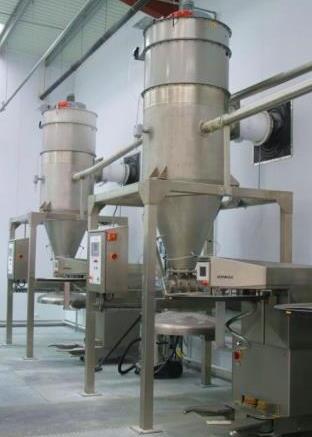



A new study has highlighted the significant positive effects of yeast cell wall extract supplementation on layer performance during mycotoxin challenges, Alltech announced.
Published in March 2024 in the journal Toxins, “Meta-Analysis of the Effects of Yeast Cell Wall Extract Supplementation during Mycotoxin Challenges on the Performance of Laying Hens” demonstrated that the inclusion of yeast cell wall extract (YCWE, Mycosorb®, Alltech, Inc., KY) supplementation during mycotoxin challenges results in an increase in layers’ body weight by 12.5 grams(g), and a substantial increase in egg production and egg weight by 4.2 percentage points and 1.37 g, respectively.
The meta-analysis showed that layers fed mycotoxins experienced lower body weight (by 50g), decreased egg production (by 6.3 percentage points), and reduced egg weight (by 1.95g) compared to controlfed birds. Economic analysis suggested that the inclusion of YCWE not only supported performance but could also result in a positive return on investment. Based on results from the meta-analysis, production and profitability calculations were made, resulting in:
• +2.7 eggs per hens housed (HH) over 9.5 weeks
• +29.7g edible protein output per HH
• 4.65:1 ROI
“To the researchers’ knowledge, this is the first time a meta-analysis study has been conducted with laying hens which evaluates the influence of not only mycotoxins alone but also the use of a mycotoxin mitigation strategy on key performance parameters,” Dr. Alexandra Weaver, global technical support for the Alltech Technology Group team.
The meta-analysis assessed a total of 25 trials and the data was extracted from eight trials that met the inclusion criteria. These trials represented a total
of 12 treatments and involved 1,774 laying hens. The meta-analysis confirms that mycotoxin presence had an impact on body weight, egg production and egg weight and the role of YCWE mitigated the effects on egg production and quality, even at high mycotoxin levels. Therefore, the use of YCWE could contribute to increased edible protein output and increased farm economics during mycotoxin challenges.
Overall, the meta-analysis underscores the importance of addressing mycotoxin challenges in layer production and highlights the potential role of YCWE in minimising these effects and enhancing profitability.
dsm-firmenich and Agrifirm have announced their strategic partnership to create a platform for poultry performance optimisation, focused on health and sustainability.
The pressing need for more sustainable food systems is underlined by the commitment of food companies and retailers through emissions reduction targets – but are difficult to realize considering the size and complexity of supply chains. Farmers and the feed industry provide an important part of the solution to achieving these ambitious, yet necessary international goals, as the majority of food-related emissions and ability to improve are firmly under their control.
Bringing together dsm-firmenich’s life cycle assessment (LCA) platform, Sustell™ and Agrifirm’s PoultryNEXT, data platform for poultry production performance insights, the new platform will offer a differentiated solution for transparent and responsible poultry production addressing the value chain needs.
Sustell™ combines an advanced environmental footprinting platform with expertise in sustainability, animal production and nutritional knowledge. By capturing specific feed and farm data in a highly scalable way, while being backed by third-party ISO certification, SustellTM users can accurately monitor their full environmental footprint and understand
where and how to make improvements, thereby playing a pivotal role in enabling the downstream value chain to deliver on their emissions commitments and targets.
PoultryNEXT combines performance tools with expertise in flock management, animal production and nutritional knowledge. By capturing farm-specific data, backed by nutritional and on-farm expertise, PoultryNEXT can monitor precise data that accurately tracks and helps improve responsible production performance.
A high-feasibility pilot will now be rolled out with Agrifirm partner farms, utilising PoultryNEXT with sustainability insights provided by Sustell™. The service will give farmers access to highquality sustainability insights such as a farm’s environmental footprint to support responsible production performance.
Wynnstay has held its Annual General Meeting this morning and Executive Chairman, Steve Ellwood, made the following comment on current trading.
“As we anticipated when the Group reported its final results in late January 2024, trading conditions have remained challenging. This has been driven by a combination of the persistent wet weather conditions and weak farmer confidence, which has been weighed down by the uncertainties over new governmental support schemes and weaker farmgate prices for certain outputs, including milk.
“The Group has managed effectively these challenges as well as increased energy and labour costs. The Group’s working capital position has improved year-on-year, helped by commodity input price deflation.
“In recent weeks, there has been an uplift in milk prices, which is encouraging, and we expect the fertiliser sales that were held back by the wet weather conditions to come through in late spring. As anticipated, there has been strong demand for spring seed, after the failure of the winter sowing season, but stock availability has been limited.
“The spring months represent our busiest period and, at this point in time, the Board’s expectations for the full year remain unchanged.
“The Group’s strong balance sheet, balanced business model, and good cash generation continue to provide significant advantages in the current market and we remain focused on delivering our strategic growth ambitions.”
Following rigorous testing, Actisaf® Sc 47 live yeast, has been proven to result in a 5% reduction in CO2e per kg milk (subject to supplementation)
This outcome was determined using a full life cycle assessment (LCA) of the product performed by Dutch international agri-food LCA specialists Blonk, which was independently and critically reviewed by industry experts following ISO (14040/44), the required standard for any product claiming an LCA.
The probiotic achieves this reduction primarily by altering the rumen environment to support the growth of lactic acid-utilising bacteria and microbial species that aid fibre digestibility. This stabilises rumen pH and improves feed conversion efficiency of cows by 4.5%, resulting in an extra 2.8kg energy corrected milk per cow per day, with no increase in feed intakes or negative impacts on health parameters or body condition.
With ever increasing costs of inputs, Actisaf® also brings a welcome return on investment of 8:1, at an approximate cost as low as £15/cow/year.
An LCA assesses the environmental impacts of a product or solution and is a gold standard when it comes to proving environmental efficiency. The process also takes a myriad of environmental factors into account including climate change, water eutrophication, resource depletion, land use, acidification and water scarcity.
Kevin Doyle, technical manager at Phileo by Lesaffre UK & Ireland, said: “We have always known Actisaf® is effective at optimising rumen function and improving feed efficiency. However, we wanted to go further and prove the environmental benefit of those performance gains as well.
“What was most important to us was ensuring that the process used was gold standard, which is why we chose this methodology to determine and independently verify its environmental impact. There is already a lot of greenwashing around this topic, and we wanted these results to be irrefutable.
“By 2050, 9 billion people globally will need to be fed while limiting global warming to an increase of 1.5°C, and demand for animal products is predicted to rise by 70% by 2050. Products like Actisaf®
that help address climate pressures as well as improve food production can ensure the continuation of animal protein production across the world,” said Kevin.
“With its relatively low cost, ease of use on farm and proven ROI, incorporating Actisaf® into dairy rations allows farms to stay profitable while also offering sustainability benefits and helping to decarbonise the dairy sector.”
Additional details can be found on the Phileo Lesaffre Youtube Channel and in the white paper, ‘Mighty Microbes: How the rumen microbiome can help dairy reach Net Zero’ available on their website.
The next SFT Pig conference will be held at the Windmill hotel in Coventry on Thursday the 7th November 2024.
A number of dairy farms in the UK have significantly lowered their feed carbon footprint by more than 10%, while also returning impressive milk yield increases, by trialling a new UK-manufactured palmfree fat supplement as a replacement to calcium soap.
Results were recorded as part of a commercial study on five farms from Co-op’s Dairy Group, in collaboration with Müller Milk & Ingredients and Kite Consulting. The study evaluated the performance potential and sustainability of Envirolac, a new palm-free fat supplement created by UFAC-UK.
Manufactured from locally sourced vegetable oils, together with marine oils, Envirolac was developed and launched to market in 2023 by UFAC-UK, following a successful trial at the University of Nottingham, undertaken by Professor Phil Garnsworthy, where Envirolac replaced a calcium soap on a fresh weight basis.
Calcium soap has traditionally been used in the diet of dairy cattle to improve energy balance and milk yield persistence, but as a palm oil-based derivative, it can carry a higher carbon footprint if sourced unsustainably.
The aim of the Nottingham trial, overseen by Professor Garnsworthy, was to evaluate whether Envirolac performed
as well as a calcium soap. However, the trial results actually revealed that the palmfree fat supplement produced a 0.6kg increase in milk yield and a lift in butterfat production from 3.85% to 4.01%, with an overall increase in feed conversion efficiency.
Significantly, the trial also showed the feed carbon footprint of Envirolac to be approximately one third of the footprint of the control palm-based supplement, reducing the feed carbon footprint per kg of energy corrected milk by 11%. Herd health and welfare is maintained at current high standards, and there is potential product cost savings for farmers, based on feed conversion efficiency.
Co-op’s Dairy Group and Müller Milk & Ingredients trials looked to evaluate the supplement, which was commended at both the Cream Awards and RABDF Innovation Awards, within a commercial setting.
“The commercial studies were undertaken over a total of 436 animals, with an average of 73 animals across five herds, at between 7-100 days in milk (DIM),” explains nutritionist Mike Chown, who had been overseeing the trials on behalf of UFAC-UK.
The headline findings showed a total weighted average milk yield increase of 0.8kg above the Nottingham trials, with an average increase of 1.4kg, compared to the 0.6kg improvement over the calcium soap control in the original trial.
Similar lifts in total milk solids were also recorded, with 0.10kg increase in the commercial studies, compared to 0.13kg in the trial.
“We saw a higher yield response from the commercial studies than the university trial, with similar butterfat and protein improvements, and overall increased feed conversion efficiency,” says Mr Chown.
Because of the 64% lower carbon footprint of Envirolac compared to a calcium soap,* the palm-free fat supplement will also significantly reduce the carbon footprint, per kg of milk, on commercial farms.
* based on University of Nottingham trial findings
Alltech and Archbold formed a strategic research alliance in 2019 to jointly develop beef management approaches. The Archbold–Alltech Alliance brought together scientists from two different disciplines — ecologists from Archbold and ruminant nutritionists from Alltech — to understand the impact that cattle production at Archbold’s Buck Island Ranch has on the ecosystem and the ability to sequester carbon.
Over the past five years, the research alliance has created a model for estimating the ranch’s carbon footprint — and the results have been astounding. On average, Buck Island Ranch sequesters more carbon each year than it emits. It is a net-carbon sink.
This research shows that grazing ruminant animals on land benefits the environment and improves carbon cycling. The results confirm that carbon-neutral — and even net-positive — beef production is possible at Buck Island Ranch, a 10,500-acre ranch in Lake Placid, Florida, and that same potential likely extends to environments around the world.
To showcase the work taking place at the Buck Island Ranch, the Archbold-Alltech Alliance have released a six-part Planet of Plenty™ video series that explores the cattle grazing carbon cycle, the role of carbon sequestration in mitigating climate change and other insights the collaborative research alliance has unveiled.
“This research alliance brings together scientists from several disciplines to collaborate on climate-change solutions and demonstrate agriculture’s great potential to positively shape the future of our planet,” said Dr. Mark Lyons, president and CEO of Alltech. “These exciting findings at Archbold’s Buck Island Ranch prove that we capture more carbon when cows are grazing the land. That is profoundly powerful.”
“Every year, we sequester 1,201 tons of CO2 equivalent at Archbold’s Buck Island Ranch and all of this work is scalable to other parts of the world,” said Dr. Betsey Boughton, director of agroecology at Archbold. “The narrative people have heard is that cows are bad for the environment, but grazing animals can actually change the function of grasslands. Cows are eating the grass and not allowing as much decomposition to happen on the ground. Without cows, we actually see more carbon emitted.”
“We’re trying to let people know that it is not just this black and white answer,” she added. “It is complicated, and we need to think about the whole story.”
Though it is a complex issue, the research has shown that agriculture can be one of the most powerful weapons in the fight against climate change.
This collaboration has discovered a deeper understanding of the grazing-cattle carbon cycle, one that is not solely focused on greenhouse gas (GHG) emissions from the animal but also on natural
GHG emissions from the land and the sequestration of carbon in the soil. Discussions around GHGs and global warming often center around agriculture emissions, but it is important to think beyond emissions and look at the full cycle.
The soil’s ability to sequester carbon is a critical part of the story. Alltech Crop Science and Ideagro, which joined the Alltech family of companies in 2023, are studying how microbial populations can enrich soil chemistry and nutrient density, leading to increased carbon sequestration in the soil. The potential to capture carbon in the soil presents a significant opportunity for the agri-food community to embrace its critical role in combatting climate change while simultaneously improving soil health, boosting crop yields and promoting biodiversity.
For more information and to watch the six-part Planet of Plenty™ video series, visit https://www.alltech.com/planet-of-plenty/stories/ video/can-cattle-combat-climate-change.
Where are the Fellows Who Cut the Hay? Is a new book written by Feed Compounder columnist Robert Ashton. Inspired by George Ewart Evans’ 1956 account of farming life ‘Ask the Fellows who Cut the Hay’, Robert’s book draws on his knowledge of his native East Anglia, his beliefs and his life working in agriculture and social enterprise to craft a truly personal account of rural life today. He recounts his own experiences and affectionately relays the accounts of others to show how drawing on the lessons of the past can help shape the future of life in the countryside. A must read for anyone with an interest in rural affairs, Where are the Fellows who Cut the Hay? is available from Amazon.

dsm-firmenich, has launched a new adaptative nutrition concept to support the profitability, welfare, and sustainability of fattening pigs.
Nowadays, pork producers are having to keep pace with rapidly improving genetics with a greater propensity for growth and lean meat gain while adapting management practices to be more sustainable by shifting towards preventative health in the form of vaccinations and feeding less nutrient dense feed to avoid excessive environmental excretion. This shift towards bigger, leaner fattening pigs can trigger challenges with immunity competency and bone structure development if nutrition is not adapted accordingly.
Adaptive nutrition is a new approach that accounts for changes in nutritional needs of pigs from a qualitative perspective by considering the allocation of nutrients between various physiological functions that are in potential competition with each other, such as muscle deposition, immune competency, and bone health.
“Pressing issues that producers face such as reduced performance, SINS, ear and tail necrosis, lameness and mortality can be associated with sub-optimal levels of circulating macro and micronutients, such as vitamin D3,” explained Dr. Maria Walsh, head of marketing swine at dsm-firmenich. “There’s a real opportunity for producers to unleash their pigs’ full potential by monitoring their herds’ level of bioavailable vitamin D3 and ensuring that it is sufficient to achieve full performance,” she added.
As part of the new adaptive nutrition concept, dsm-firmenich is launching its Verax™ DBS Analytics service to help swine producers assess the vitamin D3 status of their animals and provide customized recommendations of how to improve it.
Researchers at dsm-firmenich have employed cutting-edge transcriptomic and AI technology often used in disease
diagnosis and personalized medicine to develop a new innovative solution in the form of MaxiFicientTM Boost GF, a functional solution which is designed to improve efficiency and saleable meat while avoiding issues related to lameness or immunity.
Cargill UK has showcased its new range of Neochicc® starter diets at the British Pig and Poultry Fair, NEC Birmingham. Three diets, all mini-pellets, offer a dedicated complete feed for the first 120 hours of the chick’s life.
The range, Neochicc Platinum, Gold and Classic are all 1.8mm mini pellets. Each diet is designed using Cargill’s nutrition system to ensure precise amounts of protein, starch, fat and additives are included to meet the specification and to enable young chicks to achieve their genetic potential with improved feed efficiency within targets.
All Neochicc diets include Cargill’s Proviox® natural antioxidant and vitamin E sparring molecule, a unique package of additives including essential oils, acids, and organic selenium. These ingredients ensure that the diet supports the chick’s immune response and ability to resist challenges, and accelerates its gut and microbial maturation.
The higher specification Platinum and Gold diets include highly digestible ingredients to maximise nutrient availability and organic zinc that helps to preserve the intestinal barrier and mitigate lameness issues.
“We have developed three diets within the range to offer producers flexibility in specifications,” says Cargill’s poultry technical specialist Luke Barnard.
“Neochicc Platinum is the highest spec diet produced without compromise and uses the very best ingredients known to accelerate microbiota maturation and maximise growth rates with efficient feed conversion. This diet has been shown to benefit production efficiency of broilers specifically broilers from young breeder flocks.”
Neochicc Gold also includes highly
digestible protein sources to meet specific production targets. “This diet is ideal for those looking to give their birds a head start,” he adds.
The high quality Neochicc mini pellet is consistent and dust-free to encourage feed intake. “A young chick eats about 100g of feed in the first five days or so, which is only 3% of its total lifetime feed intake, but the benefits of the diet pave the way to lifetime productivity,” adds Mr Barnard. “This range of Neochicc diets allows us to work with producers in making the right choice for their system and to meet targets.”
Cargill was also promoting its enzyme application knowledge as well as its enhanced range of high-performance enzyme solutions. This includes Natuphos E which improves the digestibility phosphorus in feed.
“We have a matrix of innovative enzymebased solutions to use in poultry diets that are proven to reduce nutrient excretion, improve feed efficiency and well-being of the bird and support sustainable animal performance.”
For more information please visit: www. provimi.eu/uk-neochicc or call 01845 578125
NEW EU APPROVAL* FOR PROACT 360™ IN POULTRY
d sm-firmenich and its alliance partner Novonesis are delighted to announce the EU regulatory approval of the innovative feed protease ProAct 360™
In a statement announcing the approval the company explained: “To remain profitable in today’s highly competitive environment, European poultry producers must contend with many factors, including fluctuating ingredient prices, genetic evolution, intestinal health considerations, welfare requirements, and sustainability demands. The effective management of protein uptake is key to successfully navigating these challenges.”
Following EU-wide approval*, ProAct 360™, will now be available to feed and poultry producers for use in all fattening poultry and in chickens reared for laying and breeding.
The company continued: “As the only second-generation protease developed
specifically for the feed industry, ProAct 360™ represents new enzyme technology that benefits the poultry industry in terms of feed efficiency, affordability and sustainability. ProAct 360™ breaks down protein faster across a broad range of feed ingredients, delivers greater digestibility of all amino acids and better degrades anti-nutritional factors— leading to improved consistency of response and higher return on investment.
“By improving the efficiency of protein absorption in the small intestine, ProAct 360™ also permits the formulation of lowerprotein diets with a reduced proportion of soybean meal. This substantially reduces the environmental impact of poultry production while at the same time contributing to improved intestinal health and animal welfare.” The statement concluded.
Adam Smith, Feed Optimization Marketing & Business Development Manager at dsm-firmenich Animal Nutrition & Health commented: “The issue of EU regulatory approval for ProAct 360™ promises significant benefits for poultry farmers in this region and underlines the dsm-firmenich | Novonesis alliance’s commitment to providing valueadding, sustainable solutions for the global feed and animal protein industry.”
ProAct 360™ was initially launched in Latin America in June 2021 and in the United States in November 2022. *EU approval extends to producers in Northern Ireland, ProAct 360™ does not yet have approval in the rest of the UK.
Cargill UK has launched a new range of starter feed diets, Neopigg Shield ® , to promote gut health, the immune system and disease resistance in piglets.
These diets are designed to help future proof piglet performance in the new zinc-free era.
Formulations of Neopigg Shield diets, which have been used widely in Europe since 2022, have been tailored to suit UK systems.
Cargill state that these diets are unique in their ability to support four ‘pillars’ identified as being critical to reducing digestive upsets post-weaning. Ingredients are used in the diets that specifically address these four areas:
• Protein digestion – diets contain highly digestible and rapidly utilisable protein sources with a low level of gut fermentable protein.
• Immune regulation – diets contain high levels of nutrients known to support a rapid immune response and antiinflammatory components.
• Intestinal flora – functional metabolites and prebiotics help to stabilise gut microorganisms to promote beneficial populations and strengthen the intestinal lining.
• Mucin effect – antioxidants, essential oils and specialised processed carbohydrates strengthen the mucin layer covering the gut which serves as a first line of defence against pathogenic bacteria.
Neopigg Shield diets are supported by extensive farm trials, including trials on 10 different commercial units in the UK with 25,000 piglets which showed that piglets fed Neopigg Shield gave up to an 8% improvement in liveweight at nine weeks post-weaning compared to piglets fed 3,100ppm of zinc oxide (ZnO) in the first two weeks post weaning.
In 60% of these UK trials piglets fed Neopigg Shield diets had comparable or firmer faeces compared with those fed ZnO, demonstrating the support to the digestive system that the diets offer.
The Neopigg range, which also includes Neopigg Max diets, contain specialised Cargill ingredients and additives known to support piglets in the post-weaning phase.
Cargill’s sustainably sourced and supplied soya, Triple S Soya, is used in all Neopigg diets.
Neopigg Shield offers more flexibility to the Neopigg range. Cargill UK pig specialists work with producers to select the diets that best suit the unit, the system and their piglet requirements.
For more information please visit: www. provimi.eu/uk-neopigg or call 01845 578125
EU AUTHORIZATION FOR HY-D® FOR RUMINANTS AND RENEWAL IN POULTRY AND PIGS
d sm-firmenich is pleased to announce that it received a renewal of the European Union authorization* for 25OHD3 from Saccharomyces cerevisiae CBS 146008 in poultry and pigs and extension for its use in ruminants, based on its Hy-D ® scientific dossier submitted to the European Food Safety Authority (EFSA). 25OHD3 (Hy-D ® , the unique form from dsm-firmenich) is the main
circulating form of vitamin D3 in humans and animals, and sufficient levels are associated with improvements in animal health and performance.
Benefits for ruminants
With this latest EU authorisation for ruminants the company states that “farmers will be able to optimise animal lifetime performance for more sustainable farming. Hy-D® enhances intestinal calcium/phosphorus (Ca/P) absorption, critical to avoid complications during the transition period. Its role in improving Ca/P metabolism results in higher Ca/P retention throughout lactation to ensure females arrive stronger to next calving that also promotes yield increase in milk. Furthermore, Hy-D® strengthens immune capacity beyond the other existing sources of vitamin D, reducing the risk of infectious diseases and metabolic disorders, thereby reducing the need for medications and promoting resilience of ruminants.”
Benefits for swine and poultry
Hy-D® offers significant benefits for both swine and poultry, which according to dsmfirmenich include “improved bone strength, optimized health, increased meat and egg yield, and enhanced overall quality. Proper usage of Hy-D® can positively impact animal well-being and productivity.”
Emrah Mazi, head of product management special nutrients at dsmfirmenich Animal Nutrition & Health said ‘We are excited about gaining authorization in the EU for Hy-D® in ruminants and renewal for its use in poultry and pigs. This milestone demonstrates the global relevance and potential of Hy-D®. I am thrilled about the positive impact this approval will have in fostering animal well-being, enhanced productivity and improved sustainability’.
EU feed additives, such as 25OHD3 (HyD®), need to be reviewed by the EU authorities every 10 years to guarantee their safety and efficacy in the feed and food chain. As done in the past, dsm-firmenich generated and now updated the scientific information to support the renewal of the registration of 25OHD3 in animal nutrition for poultry, swine and ruminants for more efficient and sustainable farming. In contrast to the previous EU registration of 25OHD3, this current renewal for poultry and pigs and the authorization of its use in ruminants are only valid for 25OHD3 produced from Saccharomyces cerevisiae CBS 146008.
*EU approval extends to producers in Northern Ireland, Hy-D® does not yet have approval in the rest of the UK.

Trouw Nutrition is excited to announce two major transitions to its leadership team.
CEO David Blakemore will be taking the helm at Trouw’s parent company, Nutreco, from June 1st.
EduardoAlberto, current VP of Global innovation will be stepping into the CEO role on the same date to lead the company in its next chapter.


Tom Lovett has joined Cargill UK as technical sales manager in the south of England and south Wales.
A graduate of Hartpury College, Tom has a wealth of experience in the pig industry with nearly 20 years of experience in managing both indoor and outdoor pig units in the Cotswolds and the south coast. His roles have included experience of units with wet and dry feeding systems and varying herd sizes, the largest being a 24,000 weaning to finisher unit with a team of 12 employees.
He has also run farm trials in conjunction with vets, advisers and industry organisations and reporting results to compare with industry KPIs.
Based in Hampshire, Tom’s role involves onsite visits and discussing requirements with producers to enable him to advise on diets best suited to their requirements.
“I’ve joined the company at a challenging time as producers look to ensure piglet performance after the removal of zinc oxide from starter diets,” says Tom.
“Being able to discuss Cargill’s latest developments in sow and piglet starter diets and demonstrate their success in UK trials and on farms in Europe - where zinc oxide was banned in June 2022 – is exciting and adds strength to our offering.”

AB Agri has announced the appointment of a new managing director to lead its specialist neonate nutrition business, AB Neo.
Heidi Burrows assumes the role on 15 April 2024, bringing a diverse breadth of experience to AB Neo following a tenure of over 15 years at sister company, AB Vista, where she held leadership roles spanning commercial, operational and regulatory departments.
On the appointment, Heidi said: “I am delighted to be joining AB Neo as managing director.
We have an ambitious growth strategy, and I am excited to be joining the team as we set off in pursuit of our goals and look to support the business’s growth.”
Following four years as AB Neo managing director, Ian Wellock moves into a role at AB Agri sister company, Premier Nutrition as Senior Pig Nutritionist. Commenting on his appointment, Ian said: “It is a pleasure to be joining the team at Premier Nutrition, it is a thriving business within the AB Agri group and I look forward to being part of its ongoing success.”
Perstorp Group has announced a change of Leadership within its Animal Nutrition business effective June 1st. Executive Vice President Aart Mateboer has announced his retirement after May 31st. The company is determined to conduct a seamless leadership transition.

“Animal Nutrition remains integral to Perstorp’s and PCG’s strategic future and has recently developed an strategic plan, outlining the roadmap for expanding its business longterm, primarily based on product development and differentiation. Focus has been and will continuously be on delivering on this plan”, says Ib Jensen, President and CEO of Perstorp Group.
“Aart Mateboer has been leading the Perstorp Animal Nutrition team with dedication and has built his team based on confidence and empowerment. When he retires on May 31st, it marks the conclusion of an intense and successful chapter in his career. His decision to retire fully reflects personal aspirations and goals, and I would like to extend my warm gratitude for his invaluable contributions”.

T he British Society of Animal Science (BSAS) has proudly announced the appointment of Professor David Kenny as its new President, marking a significant milestone as only the second president based in the Republic of Ireland. Prof. Kenny follows in the footsteps of Dr. Jim O’Grady, who served from 1990 to 1991, in representing Ireland’s vibrant contributions to the field of animal science.
Prof. Kenny’s presidency comes at an exciting time, coinciding with the announcement that the BSAS Annual Conference in 2025 will be hosted in Galway, Ireland, from 8th to 10th April. The theme, “Animal Science supporting livestock’s role in a global society,” underscores the critical role of animal science in addressing the challenges and opportunities facing the livestock industry worldwide.
Prof. Kenny’s appointment reinforces the society’s commitment to driving collaboration among scientists, industry professionals, and policymakers to address pressing challenges and opportunities in livestock farming [and animal welfare] and nurturing the next generation of animal scientists. His dedication to excellence and passion for advancing the field make him an ideal choice to lead the society forward.
“We are delighted to welcome Prof. David Kenny as our new President,” said Maggie Mitchell, CEO of the British Society of Animal Science. “His extensive expertise and leadership qualities will be invaluable as we continue to drive advancements in animal science for the benefit of society and the environment.”
Expressing his gratitude and enthusiasm, Prof. Kenny stated, “I am honoured and privileged to lead the British Society of Animal Science as president for the next 12 months. The society continues to play a pivotal role as a platform for the widespread dissemination of state-ofthe-art research findings, professional development, education, and as a representative body for the animal science sector.”
As Head of the Teagasc Animal and Bioscience Research Department in Ireland, Prof. Kenny brings over 25 years of research experience to his new role. His expertise spans a wide range of topics, including the biological control of economically important traits in ruminant livestock production systems, ruminal methanogenesis, and the development and functionality of the rumen microbiome.
Prof. Kenny’s commitment to research and education is exemplified by his supervision of 19 Ph.D. and numerous M.Sc. students. his extensive publication record, which includes over 200 internationally peer-reviewed scientific manuscripts and book chapters. He is a recognised leader in the field, serving as the incoming president of BSAS, president of the Physiology Study Commission of the European Association of Animal Production, and a member of the management board of the international scientific journal, animal.
Among his many accolades, Prof. Kenny was awarded the prestigious Hammond Award by BSAS in 2018 for his outstanding contributions to understanding how nutrition affects economically important traits in cattle. Beyond his academic pursuits, Prof. Kenny is deeply involved in the agricultural community, running a beef and
sheep farm in County Mayo, Ireland, and actively engaging with the beef cattle sector and wider agricultural industry.
“I intend to work closely with the presidential team and the Trustees to further grow the society’s membership, events, publications, and training opportunities,” Prof. Kenny affirmed. “Together, we will continue the diligent work of our predecessors in ensuring the viability and continued development of BSAS into the future.”
Nick Johnson , Production Manager at ForFarmers’ Radstock mill, has been promoted to the role of Operations Manager for the Portbury mill near Bristol.
Nick has worked for ForFarmers for 11 years, during which time he has held a variety of roles and been involved with many projects and change management initiatives.
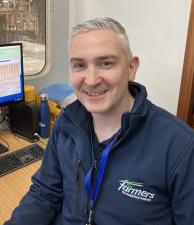
Terry Morrison, Operations Director at ForFarmers said: “This new role will see Nick’s responsibilities grow to oversee all operations on the Portbury site, including transport, logistics and production.
“Nick is thoroughly deserving of this promotion. I look forward to supporting him and wish him every success in his new role.”
Nick said: “I am very much looking forward to diving into my new role, and getting to know the team at Portbury. Every mill is different at ForFarmers, and so I want to understand how they operate, and from there see how I can influence operations and improve performance to the benefit of our customers.”
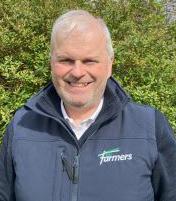
James Collantine has joined the ForFarmers team as Blend Development Manager operating in northern England. The role will entail pricing, raw material acquisition, and tailored blend formulation for ForFarmers customers from Birmingham to the Scottish border.
James has a wealth of experience having worked in similar roles within the feed industry for more than 10 years and practical, on-farm experience having also worked as a dairy farm manager.
“After a spell working in feed sales in Scotland, I undertook further education and studied for a Diploma in Ruminant Nutrition at Harper Adams in 2016, to expand my knowledge and skillset,” said James. “My new role provides a great opportunity to apply my expertise by understanding the requirements of ForFarmers customers and delivering the most suitable blends that maximise their returns on feed.”
Huw Richard Jones, Sales Manager of Blends, commented: “With a vast range of experience within the agriculture industry combined with his technical knowledge, James will be a great asset for ForFarmers and our ruminant customers in the north.”
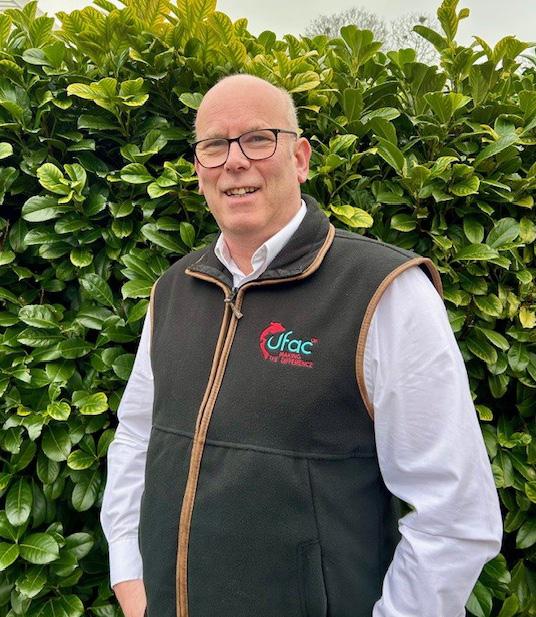
As part of their latest restructuring, UFACUK has appointed a new ruminant technical manager and regional business manager.
Steve Willats joins the team as business manager for South-West and Wales, as Mark Townsend steps up to the role of ruminant technical manager, recently vacated by the retirement of respected and long-serving nutritionist, Mike Chown
Mark Townsend steps across from his previous position as regional business manager, to head up the technical ruminant section, with Devon-based Steve Willats, an experienced feed and nutrition specialist and former professional showjumper, taking over Mark ’ s previous role in the South-West and Wales region.

Mark ’ s role will see him working more closely with the innovation and development of new products, including research and development, trials, and the analysis of results.
“I have always enjoyed the technical side of the work I have been

involved in since joining UFAC-UK in 2009, and I am looking forward to it being a larger part of my responsibility.” he says.
Mr Chown, who has worked with UFAC-UK since 2011, alongside running his own independent consultancy business, officially retired in March 2024, but has not closed the book on his work entirely.
“ I have been extremely proud of the work, and product development I have been involved in with UFAC-UK, with many products and new ideas trialed and developed,” he says.
“I am very happy to have been asked to continue working on oneoff projects and product developments in the future, while still taking the time to wind down and enjoy a more relaxed schedule,” he adds.
Steve ’ s career in the sector began some 40 years ago, working on farm straight from school, before progressing to equestrian work that led to a successful show-jumping career up until the mid-nineties.
As well as running his own 40-head suckler herd of Aberdeen Angus from his North Devon farm, Steve has worked as a specialist with both ruminant and monogastric animal feeds for some 13 years, most recently with ForFarmers. Prior to that, he held similar roles with Countrywide Farmers and Cornwall Farmers.
“ I have worked closely with nutritionists to deliver technical advice to farmers, and look forward to continuing that role alongside Mark,” says Steve.
No bearings, seals or service down time …
Guaranteed for 5 YEARS for UK
Single V-Belt drive; High inertia, smooth and efficient
No oil leaks into feed or on press floor
Designed, fabricated and built in Italy

Support:
Design, installation and project management services
UK based stock and engineers
2-3 day Die and roll refurbishment
Dies held in stock on request

Sales technicians who understand the day-to-day requirements of a busy mill
>50 years manufacturing experience at La Meccanica
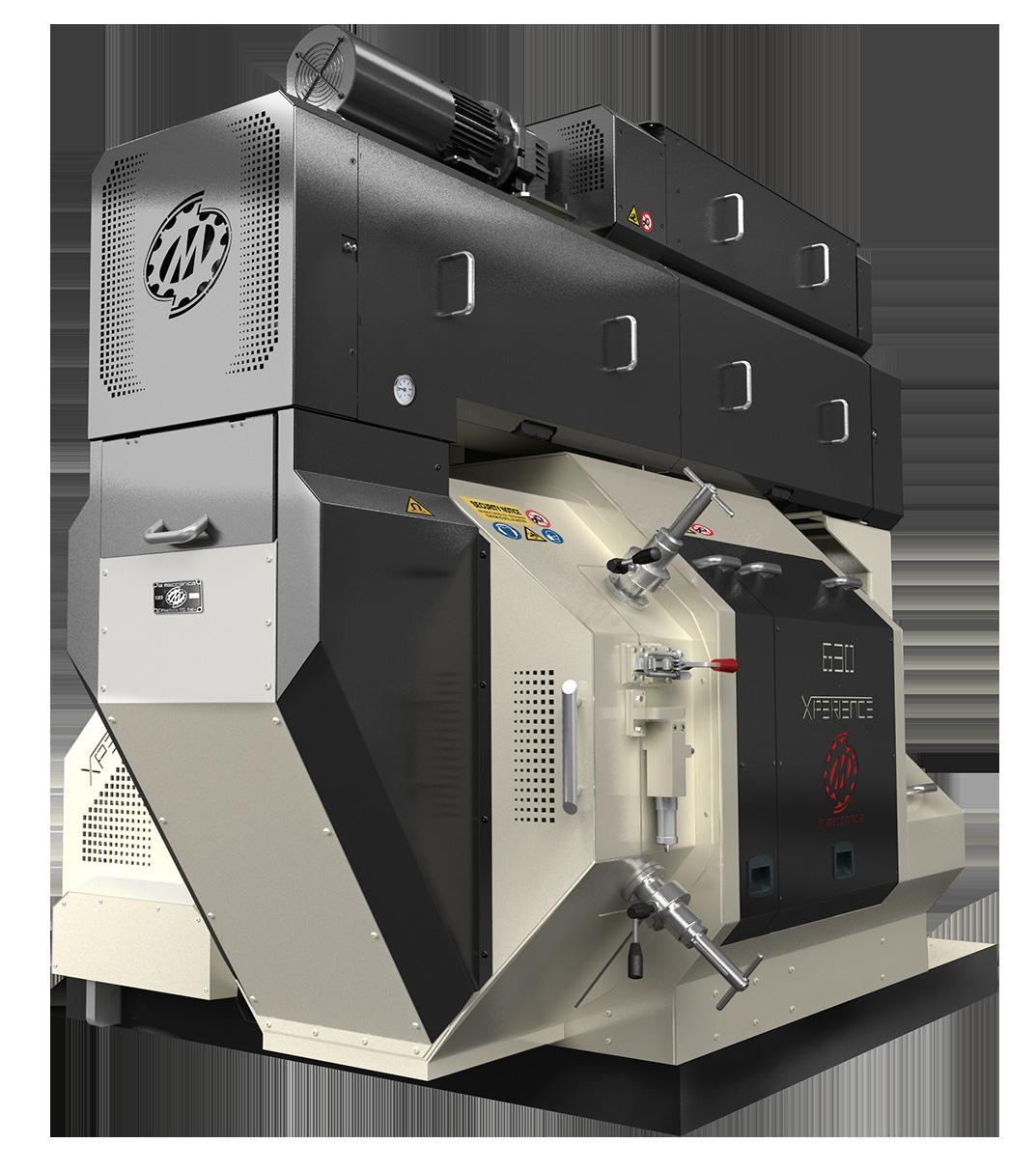

Condex Ltd - established in 1980 www.lameccanica.it



Trouw Nutrition GB, Blenheim House, Blenheim Road, Ashbourne DE6 1HA
Tel: 01335 341100 Fax: 01335 341171

E-mail: customerservices.gb@nutreco.com
Web: www.trouwnutrition.co.uk
(See Acidifiers, Analytical Services, Animal Health Products, Antibacterials, Chelated Minerals, Enzymes, Feed Additives, Feed Supplements, Milk Replacers, Mould Inhibitors, Mycotoxin Binders, Salmonella Control, Silage Additives)
Promtek Ltd
Fisher Street, Brindley Ford, Stoke-on-Trent, Staffordshire ST8 7QJ
Tel: 01782 375600 Fax: 01782 375605
E-mail: info@promtek.com Web: www.promtek.com

(See Calibration and Weighing Services, Process Control Systems)
Lallemand Animal Nutrition Limited
10 – 13 Spring Lane North, Malvern Link WR14 1BU
Email: animaluk@lallemand.com
Tel: 07827 228161
Trouw Nutrition GB, Blenheim House, Blenheim Road, Ashbourne DE6 1HA
Tel: 01335 341100 Fax: 01335 341171

E-mail: customerservices.gb@nutreco.com
Web: www.trouwnutrition.co.uk
Adisseo
Tel: +353 87 766 8848
E-mail: info.nauk@adisseo.com
Web: www.adisseo.com
ANIMAL
Kernfarm B.V.
De Corridor 14D
3621 ZB Breukelen, The Netherlands
Tel: +31 (0) 346 785 139

Email: info@kernfarm.com Web: www.kernfarm.com
Mervue Laboratories Ireland
Unit 9 Watergrasshill Business Park, Watergrasshill, Co. Cork, T56 HH98, Ireland
Tel: +353 21 21 4391080
E-mail: info@mervuelab.com Web: www.mervuelab.com
Trouw Nutrition GB, Blenheim House, Blenheim Road, Ashbourne DE6 1HA
Tel: 01335 341100 Fax: 01335 341171


E-mail: customerservices.gb@nutreco.com
Web: www.trouwnutrition.co.uk
DM Scientific Ltd, Main Site, Dalton, Thirsk, North Yorkshire YO7 3JA
Tel: 01845 577757
Email: dmacmillan@dmscientific.co.uk
Web: www.dmscientific.co.uk
Trouw Nutrition GB, Blenheim House, Blenheim Road, Ashbourne DE6 1HA
Tel: 01335 341100 Fax: 01335 341171


E-mail: customerservices.gb@nutreco.com Web: www.trouwnutrition.co.uk
Adesco Nutricines, 23 Strandside South, Abbeyside, Dungarvan, Co. Waterford X35 W778, Ireland
Jack: +353 87 2208816 Seán: +353 85 1667512
Email: info@adesco.ie Web: www.adesco.ie
Trouw Nutrition GB, Blenheim House, Blenheim Road, Ashbourne DE6 1HA
Tel: 01335 341100 Fax: 01335 341171

E-mail: customerservices.gb@nutreco.com Web: www.trouwnutrition.co.uk
Adisseo
Tel: +353 87 766 8848
E-mail: info.nauk@adisseo.com Web: www.adisseo.com
Lallemand Animal Nutrition Limited 10 – 13 Spring Lane North, Malvern Link WR14 1BU
Email: animaluk@lallemand.com
Tel: 07827 228161

AUTOMATED BAGGING & PALLETIZING EQUIPMENT




salesuk@fischbein.com
Tel. +44 208 344 6600 www.fischbein.com
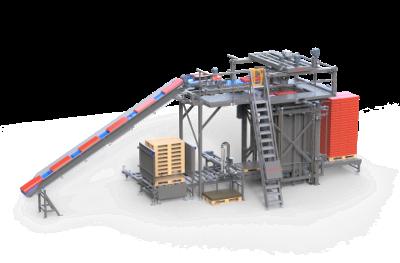
Concetti S.p.A
S.S. 75 Centrale Umbra, km 4, 190 Ospedalicchio
06083 Bastia Umbra, PG - Italy
Tel: +39 075 801561 Fax: +39 075 8000894
E-mail: sales@concetti.com Web: www.concetti.com

Croston Engineering Ltd, Tarvin Mill, Barrow Lane, Tarvin, Chester CH3 8JF
Tel: 01829 741119 Fax: 01829 741169
E-mail: admin@croston-engineering.co.uk Web: www.croston-engineering.co.uk

Promtek Ltd
Fisher Street, Brindley Ford, Stoke-on-Trent, Staffordshire ST8 7QJ
Tel: 01782 375600 Fax: 01782 375605
E-mail: info@promtek.com Web: www.promtek.com
Trouw Nutrition GB, Blenheim House, Blenheim Road, Ashbourne DE6 1HA
Tel: 01335 341100 Fax: 01335 341171


E-mail: customerservices.gb@nutreco.com
Web: www.trouwnutrition.co.uk
RMC Commodity Claims Management
3 Clement Road, Fulwood, Preston PR2 9LG
Tel: 07841 198733
E-mail: enquiries@rawmaterialclaims.co.uk
Web: www.rawmaterialclaims.co.uk
AB Vista

Borregaard UK Ltd
Clayton Road, Risley Employment Area, Warrington, Cheshire WA3 6QQ
Tel: 01925 285423 Fax: 01925 285433
E-mail: glenn.dearsley@borregaard.com Web: www.lignotechfeed.com
Cargill Animal Nutrition
Provimi Ltd., Dalton Airfield Industrial Estate, Thirsk, North Yorkshire, YO7 3HE
Tel: 01845 578125 www.cargill.com/feed
Inform Nutrition Ireland Ltd Whitescross, Cork, T23 KD50, Ireland
Tel: +353 21 4394770
E-mail: info@informnutrition.com Web: www.informnutrition.com

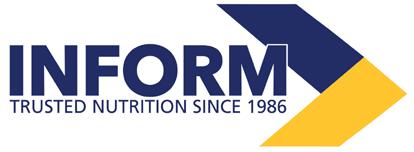

Kemin UK Ltd.
Kemin UK Ltd
www.kemin.com
Pancosma SA
Castlethorpe Court,Castlethorpe,BRIGG North Lincolnshire DN20 9LG,England tel:+44.1652.65.10.10 fax:+44.1652.65.54.13
34 Botanic Road, Southport, Merseyside PR9 7NG Tel: +44 (0)1704 537702 Orffa
Edificio Twin Golf A, C/Perú, 6, 2º Floor, Office 4, 28290 Las Rozas, Madrid, Spain
Tel: +34 91 859 1787 Email: info@abvista.com Web: www.abvista.com
Adisseo
Tel: +353 87 766 8848
E-mail: info.nauk@adisseo.com Web: www.adisseo.com
Danisco Animal Nutrition & Health, IFF PO Box 218
2300 AE Leiden, THE NETHERLANDS
Tel: +31 6 1539 6689
Web: www.animalnutrition.iff.com
Trouw Nutrition GB, Blenheim House, Blenheim Road, Ashbourne DE6 1HA
Tel: 01335 341100 Fax: 01335 341171


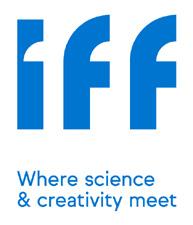

E-mail: customerservices.gb@nutreco.com Web: www.trouwnutrition.co.uk
Lvlogics Limited, Ballyhist, Carnaross,
Tel: +353 89 2426825
Email: info@lvlogics.com Web: www.lvlogics.com
Monitoring Kells, Co. Meath, Ireland
Vierlinghstraat 51 4251 LC Werkendam The Netherlands
Minervum 7032 4817 LZ Breda The Netherlands
T +31 183 44 77 66 E info@orffa.com
Find your Orffa specialist at www.orffa.com
Voie des Traz 6, 1218 Le Grand-Saconnex, Geneva, Switzerland
Tel : +41 22 929 84 84 Fax : +41 9259 84 95
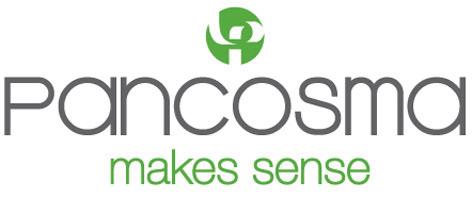
E-mail: info@pancosma.ch Web: www.pancosma.com
Trouw Nutrition GB, Blenheim House, Blenheim Road, Ashbourne DE6 1HA
Tel: 01335 341100 Fax: 01335 341171

E-mail: customerservices.gb@nutreco.com Web: www.trouwnutrition.co.uk
Croston Engineering Ltd, Tarvin Mill, Barrow Lane, Tarvin, Chester CH3 8JF
Tel: 01829 741119 Fax: 01829 741169
E-mail: admin@croston-engineering.co.uk Web: www.croston-engineering.co.uk
Turner Process Equipment Ltd
5 De Grey Square, De Grey Road, Colchester, Essex CO4 5YQ
Tel: 01206 752017 Fax: 01206 854484
E-mail: sales@turnerprocessequipment.co.uk Web: turnerprocessequipment.co.uk
Van Mourik Group
Boylestraat 34, 6718 XM Ede, The Netherlands
Tel: + 31 (0) 318 64 11 44
E-mail: info@vanmourik-group.com Web: vanmourik-group.com




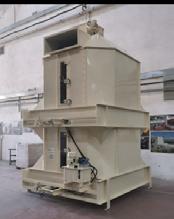

The sole UK supplier for Feedtech and supplier of all new and used milling equipment
Go Green Pelleting Solutions Ltd, Unit 8A Brindley Road, St Helens WA9 4HY Mick Swift – 07500887637 David Kelly- 07500335621 Office Number – 01744808600 www.gogreenpelletingsolutions.co.uk www.feedtech.com.tr
Adesco Nutricines, 23 Strandside South, Abbeyside, Dungarvan, Co. Waterford X35 W778, Ireland
Jack: +353 87 2208816 Seán: +353 85 1667512 Email: info@adesco.ie Web: www.adesco.ie
Anitox Ltd
7 Regent Park, Booth Drive, Park Farm, Wellingborough NN8 6GR
Tel: +44 1604 811228 Fax: +44 1604 811013
E-mail: anitoxEMEA@anitox.com Web: www.anitox.com
Azelis UK Ltd
Axis House, Tudor Road, Manor Park, Runcorn WA7 1BD
Tel: 01928 793090
Fax: 01928 716997
Email: nutrition@azelis.co.uk www.azelis.com
Gemcom Ltd

68 Great Portland Street, London W1W 7NG
Tel: +44 (0)20 7580 8004 Fax: +44 (0)20 7580 8002
E-mail: info@gemcom.co.uk Web: www.gemcom.co.uk
WestendAgri The Heath Business & Technical Park, Runcorn, Cheshire, WA7 4QX
Tel: + 44 (0)1477 544400
Mobile: +44 (0)7961 977623

E-mail: sales@westendagri.com Web: www.westendagri.com
Adisseo
Tel: +353 87 766 8848
E-mail: info.nauk@adisseo.com Web: www.adisseo.com
Inroads International Ltd
Unit 4, Wem Engineering Centre
Church Lane, Wem, Shropshire SY4 5HS
Inform Nutrition Ireland Ltd Whitescross, Cork, T23 KD50, Ireland
Tel: +353 21 4394770
E-mail: info@informnutrition.com Web: www.informnutrition.com
Premier Nutrition
The Levels, Rugeley, Staffordshire WS15 1RD Tel: 01889 572500 Fax: 01889 577074
E-mail: info@premiernutrition.co.uk Web: www.premiernutrition.co.uk
Trouw Nutrition GB, Blenheim House, Blenheim Road, Ashbourne DE6 1HA Tel: 01335 341100 Fax: 01335 341171


E-mail: customerservices.gb@nutreco.com Web: www.trouwnutrition.co.uk
Promtek Ltd
Fisher Street, Brindley Ford, Stoke-on-Trent, Staffordshire ST8 7QJ
Tel: 01782 375600 Fax: 01782 375605
E-mail: info@promtek.com Web: www.promtek.com
Adisseo
Tel: +353 87 766 8848
E-mail: info.nauk@adisseo.com Web: www.adisseo.com
Trouw Nutrition GB, Blenheim House, Blenheim Road, Ashbourne DE6 1HA
Tel: 01335 341100 Fax: 01335 341171



E-mail: customerservices.gb@nutreco.com
Web: www.trouwnutrition.co.uk
WestendAgri The Heath Business & Technical Park, Runcorn, Cheshire, WA7 4QX
Tel: + 44 (0)1477 544400
Mobile: +44 (0)7961 977623

E-mail: sales@westendagri.com Web: www.westendagri.com
Adesco Nutricines, 23 Strandside South, Abbeyside, Dungarvan, Co. Waterford X35 W778, Ireland
Jack: +353 87 2208816 Seán: +353 85 1667512
Email: info@adesco.ie Web: www.adesco.ie


Tel: +44 (0)1939 236 555 Fax: +44 (0)1939 236 450
Email: info@inroadsintl.co.uk Web: inroadsintl.com
Compound Feed Engineering Ltd
5 Haydock Lane, Haydock, St Helens, Merseyside, WA11 9UY
Tel: +44 (0) 1942 728188 Fax: +44 (0) 1942 408430
E-mail: info@cfegroup.com Web: www.cfegroup.com

E D & F Man Liquid Products UK Ltd
Alexandra House, Regent Road, Bootle L20 1ES
Tel: 0151 944 5100 Fax: 0151 944 3919
E-mail: info.mlpuk@edfman.com Web: www.edfmanliquidproductsuk.com
United Molasses GB Ltd
48 Gracechurch Street, London EC3V 0EJ
Tel: 0151 955 4850
Fax: 0151 955 4860
E-mail: molassesgb@umgroup.com Web: www.unitedmolasses.com

Adesco Nutricines, 23 Strandside South, Abbeyside, Dungarvan, Co. Waterford X35 W778, Ireland
Jack: +353 87 2208816 Seán: +353 85 1667512 Email: info@adesco.ie Web: www.adesco.ie
Trouw Nutrition GB, Blenheim House, Blenheim Road, Ashbourne DE6 1HA
Tel: 01335 341100 Fax: 01335 341171

E-mail: customerservices.gb@nutreco.com Web: www.trouwnutrition.co.uk
AB Vista Edificio Twin Golf A, C/Perú, 6, 2º Floor, Office 4 28290 Las Rozas, Madrid, Spain
Tel: +34 91 859 1787 Email: info@abvista.com Web: www.abvista.com
Adisseo
Tel: +353 87 766 8848
E-mail: info.nauk@adisseo.com Web: www.adisseo.com
Trouw Nutrition GB, Blenheim House, Blenheim Road, Ashbourne DE6 1HA Tel: 01335 341100 Fax: 01335 341171



E-mail: customerservices.gb@nutreco.com Web: www.trouwnutrition.co.uk
Fischbein
Tel: +44 (0)20 8344 6600
E-mail: salesuk@fischbein.com Web: www.fischbein.com
DSL Systems Ltd
Adbolton Hall, Adbolton Lane, West Bridgford, Nottingham NG2 5AS Tel: 0115 981 3700 Fax: 0115 981 3702
E-mail: sales@dsl-systems.com Web: www.dsl-systems.com
Promtek Ltd
Fisher Street, Brindley Ford, Stoke-on-Trent, Staffordshire ST8 7QJ
Tel: 01782 375600 Fax: 01782 375605
B2B Nutrition, Fordton Industrial Estate, Crediton, Devon EX17 3BZ
(A division of the Denis Brinicombe Group)
Tel. 01363 775115
Tom Butler (Technical) 07803 736194
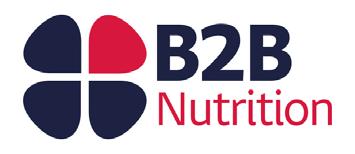
Email: tbutler@brinicombe.co.uk Web: www.b2bnutrition.co.uk
Adesco Nutricines, 23 Strandside South, Abbeyside, Dungarvan, Co. Waterford X35 W778, Ireland
Jack: +353 87 2208816 Seán: +353 85 1667512
Email: info@adesco.ie Web: www.adesco.ie
Lallemand Animal Nutrition Limited 10 – 13 Spring Lane North, Malvern Link WR14 1BU
Email: animaluk@lallemand.com Tel: 07815 483755
Trouw Nutrition GB, Blenheim House, Blenheim Road, Ashbourne DE6 1HA Tel: 01335 341100 Fax: 01335 341171

E-mail: customerservices.gb@nutreco.com Web: www.trouwnutrition.co.uk
Adisseo
Tel: +353 87 766 8848
E-mail: info.nauk@adisseo.com Web: www.adisseo.com
Lallemand Animal Nutrition Limited 10 – 13 Spring Lane North, Malvern Link WR14 1BU
Email: animaluk@lallemand.com
Tel: 07827 228161

Turner Process Equipment Ltd 5 De Grey Square, De Grey Road, Colchester, Essex CO4 5YQ Tel: 01206 752017 Fax: 01206 854484
E-mail: sales@turnerprocessequipment.co.uk Web: turnerprocessequipment.co.uk
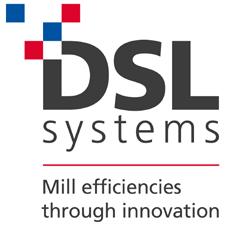
E-mail: info@promtek.com Web: www.promtek.com

Lallemand Animal Nutrition Limited 10 – 13 Spring Lane North, Malvern Link WR14 1BU
Email: animaluk@lallemand.com Tel: 07884 312382
Trouw Nutrition GB, Blenheim House, Blenheim Road, Ashbourne DE6 1HA
Tel: 01335 341100 Fax: 01335 341171

E-mail: customerservices.gb@nutreco.com Web: www.trouwnutrition.co.uk

